Milgram experiment
description: series of social psychology experiments, studying obedience to authority figures
78 results

The Authoritarians
by
Robert Altemeyer
Published 2 Jan 2007
If you assume the samples were reasonably representative of the general population, it means someone who wished you dead would have to try three or four complete strangers in this experimental setup before he found someone who would hold you down and kill you with electric shocks rather than say no to a psychology experimenter. If that doesn’t give you the heebie-jeebies, nothing will. 229 But, you might well argue, these experiments were run at a big famous university, and Teachers in conflict over whether to throw the next switch might have reasoned, “Yale wouldn’t run an experiment that endangered someone’s life.” Milgram appreciated this too, so he moved his set-up to Bridgeport, Connecticut and distributed a mail circular soliciting men to serve in a memory experiment for the fictitious “Research Associates of Bridgeport.”
…
But they proved less likely than most people to punish a police officer who beat up a handcuffed demonstrator, or a chief of detectives who assaulted an accused child molester being held in jail, or--paralleling the trial of U.S. Army Lt. William Calley--an Air Force officer convicted of murder after leading unauthorized raids on Vietnamese villages. The “Milgram experiment,” which we shall discuss at the end of this book, offers another example of authoritarian followers “going easy” on authorities. In his famous study Stanley Milgram maneuvered subjects into a situation in which they were ordered by an Experimenter to inflict painful, and possibly lethal, electric shocks on another person (who in fact was not hurt at all). The subjects clearly did not want to deliver the shocks, but the Experimenter told them they had to.
…
Back to Chapter [3] Milgram took a LOT of heat over the ethics of his experiment. Most commentators eventually agreed that his study met the ethical guidelines of the time, but his study also led to a revision of those ethical codes. It would probably be impossible to conduct the Milgram experiment today at a North American university. Professor Jerry Burger of Santa Clara University ran a partial replication of Milgram’s experiment in July 2006 that was featured in an ABC “Viewpoint” program televised on January 3, 2007. It was, of course, impossible to do the experiment exactly as Milgram had in the early 1960s.
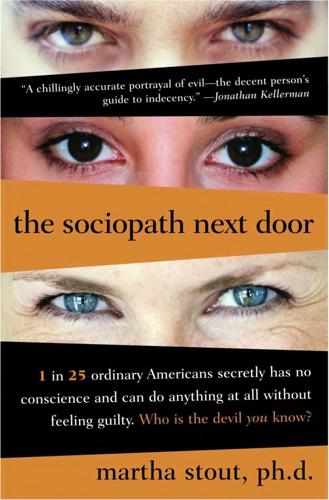
The Sociopath Next Door
by
Martha Stout
Published 8 Feb 2005
The aim of the experiment was to discover how long the subjects (the teachers in this experiment) would take to disobey Milgram's authority when presented with a clear moral imperative. How much electric shock would they administer to a pleading, screaming stranger merely because an authority figure told them to do so? When I show Milgram's film to a lecture hall full of psychology students, I ask them to predict the answers to these questions. The students are always certain that conscience will prevail. Many of them predict that a large number of the subjects will walk out of the experiment as soon as they find out about the use of electric shock.
…
But when the learner gives an incorrect answer, the teacher must push a switch and give him an electric shock. The experimenter instructs the teacher to begin at the lowest level of shock on the shock generator, and with each wrong answer, to increase the shock level by one increment. The learner in the other room is actually the experimenter's trained confederate, an actor, and will receive no shocks at all. But of course the teacher does not know this, and it is the teacher who is the real subject of the experiment. The teacher calls out the first few items of the “learning test,” and then trouble begins, because the learner—Milgram's accomplice, unseen in the other room—starts to sound very uncomfortable.
…
In a lecture hall full of students who have just seen this experiment for the first time, there is always stunned silence for at least one full minute. After the original experiment, Milgram varied his design in a number of ways. In one variation, for example, subjects were not commanded to operate the switches that shocked the learner, only to call out the words for the word-pair test before another person pushed the switches. In this version of the experiment, thirty-seven of forty people (92.5 percent) continued to participate to the highest shock level on the “generator.” Thus far, the teachers in the study had been only men. Milgram now tried his experiment using forty women, speculating that women might be more empathic.
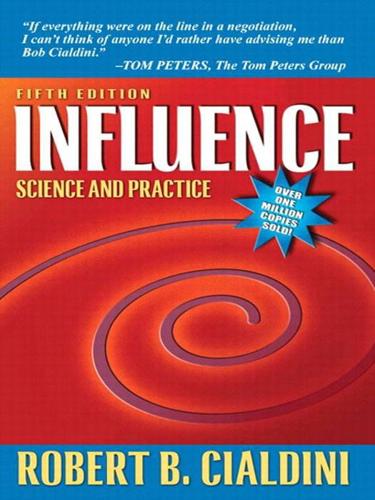
Influence: Science and Practice
by
Robert B. Cialdini
Published 1 Jan 1984
Effects of film modeling on the reduction of anxiety-related behaviors in individuals varying in level of previous experience in the stress situation. Journal of Consulting and Clinical Psychology, 46, 1357–1374. Meyerwitz, B. E., & Chaiken, S. (1987). The effect of message framing on breast self-examination attitudes, intentions, and behavior. Journal of Personality and Social Psychology, 52, 500–510. Milgram, S. (1963). Behavioral study of obedience. Journal of Abnormal and Social Psychology, 67, 371–378. Milgram, S. (1970). The experience of living in cities. Science, 13, 1461–1468. Milgram, S. (1974). Obedience to authority. New York: Harper & Row. Milgram, S., Bickman, L., & Berkowitz, O. (1969).
…
Rather than yield to the pleas of the victim, about two-thirds of the subjects in Milgram’s experiment pulled every one of the 30 shock switches in front of them and continued to engage the last switch (450 volts) until the researcher ended the experiment. More alarming still, almost none of the 40 subjects in this study quit his job as Teacher when the victim first began to demand his release, nor later when he began to beg for it, nor even later when his reaction to each shock had become, in Milgram’s words, “definitely an agonized scream.” These results surprised everyone associated with the project, Milgram included. In fact, before the study began, he asked groups of colleagues, graduate students, and psychology majors at Yale University (where the experiment was performed) to read a copy of the experimental procedures and estimate how many subjects would go all the way to the last (450-volt) shock.
…
Suppose further that, finding the idea of such an experiment intriguing, you contact the director of the study, Professor Stanley Milgram, and make arrangements to participate in an hour-long session. When you arrive at the laboratory suite, you meet two men. One is the researcher in charge of the experiment, clearly evidenced by the grey lab coat he wears and the clipboard he carries. The other is a volunteer like yourself who seems quite average in all respects. After initial greetings and pleasantries are exchanged, the researcher begins to explain the procedures to be followed. He says that the experiment is a study of how punishment affects learning and memory.

Competition Overdose: How Free Market Mythology Transformed Us From Citizen Kings to Market Servants
by
Maurice E. Stucke
and
Ariel Ezrachi
Published 14 May 2020
But the ideology can be used to justify leaving competition unregulated even when it clearly isn’t working out that way, as was evident with our financial regulators ignoring multiple red flags and permitting the financial system and economy to reach the brink of disaster. A second situational factor is when the issue is reframed by “replacing unpleasant reality with desirable rhetoric, gilding the frame so that the real picture is disguised.”54 In a nutshell, to kudzu. In Milgram’s experiment, the participants delivering the electric shock were “teachers,” who thought they were “helping” the “learners.” Likewise, we saw how lobbyists and policy makers use the competition ideology to reframe the toxic effects of competition, in the name of freedom from government restraints, kudzu-ing any efforts to regulate or monitor industry.
…
Or, at a more personal level, we justify using every material advantage to get our child into a highly selective university, because if we don’t, there will be thousands of other parents who are sending their kids to “educational” internships, SAT prep camps, and elite private and public schools who would exploit that advantage. A fourth situational factor on the path to the dark side is to keep moving there in steps that are so small and incremental that one barely registers the difference between one step and the next.56 In Milgram’s experiment, the intensity of the electric shocks increased in 15-volt increments. Each increase seemed small, because the increases were relative and on a continuum rather than in isolation, so if the teacher-participant could administer 300 volts, then 15 additional volts would seem relatively minor, and so on. Likewise, we are easily blinded to the incremental steps on the way to toxic competition.
…
A sixth situational factor is offering “an ideology, or a big lie, to justify the use of any means to achieve the seemingly desirable, essential goal.”59 In Milgram’s experiment, the “cover story” was assuring the participants “that science wants to help people improve their memory by judicious use of reward and punishment.”60 As Zimbardo notes, the real-world equivalent is ideology. We have been sold the myth that competition is always good, a miracle elixir. So, while we may not be administering electrical shocks to the people we perceive as our rivals in day-to-day life—whether they are competing with us in business or simply angling to merge into our toll booth lane ahead of us—if we think that life is always supposed to be about disadvantaging our rivals in order to stay on top, we may be delivering other kinds of punishments that fuel the toxicity of competition.
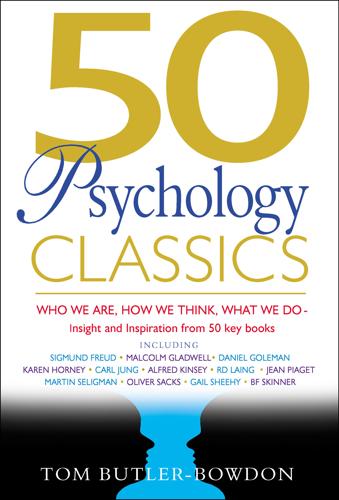
50 Psychology Classics
by
Tom Butler-Bowdon
Published 14 Oct 2007
In a similar vein Robert Cialdini Influence (p 62) Eric Hoffer The True Believer (p 152) * * * CHAPTER 35 Stanley Milgram In 1961 and 1962, a series of experiments were carried out at Yale University. Volunteers were paid a small sum to participate in what they understood would be “a study of memory and learning.” In most cases, a white-coated experimenter took charge of two of the volunteers, one of whom was given the role of “teacher” and the other “learner.” The learner was strapped into a chair and told he had to remember lists of word pairs. If he couldn’t recall them, the teacher was asked to give him a small electric shock. With each incorrect answer the voltage rose, and the teacher was forced to watch as the learner moved from small grunts of discomfort to screams of agony.
…
The logical next step would then have been to demand that the experiment be terminated. In reality, this rarely happened. Despite their reservations, most people continued to follow the orders of the experimenter and inflict progressively greater shocks. Indeed, as Milgram noted, “a substantial proportion continued to the last shock on the generator.” That was even when they could hear the cries of the learner, and even when that person pleaded to be let out of the experiment. How we cope with a bad conscience Milgram’s experiments have caused controversy over the years; many people are simply unwilling to accept that normal human beings would act like this.
…
This is the response that Milgram received when, outside the actual experiments, he surveyed a range of people on how they believed subjects would react in these circumstances. Most predicted that the teachers would not give shocks beyond the point where the learners asked to be freed. These expectations were entirely in line with Milgram’s own. But what actually happened? Most subjects asked to act as teachers were very stressed by the experiment, and protested to the experimenter that the person in the chair should not have to take any more pain. The logical next step would then have been to demand that the experiment be terminated.

The Problem of Political Authority: An Examination of the Right to Coerce and the Duty to Obey
by
Michael Huemer
Published 29 Oct 2012
Some believe that it is dangerous to undermine belief in authority. 6.1.2 The appeal to popular opinion Some believe that the rejection of authority is too far from common-sense political beliefs to be taken seriously. 6.2 The Milgram experiments 6.2.1 Setup Milgram devised an experiment in which subjects would be ordered to administer electric shocks to helpless others. 6.2.2 Predictions Most people expect that subjects will defy the orders of the experimenter. 6.2.3 Results Two-thirds of subjects obey fully, even to the point of administering apparently lethal shocks. 6.2.4 The dangers of obedience The experiment shows that belief in authority is very dangerous. 6.2.5 The unreliability of opinions about authority The experiment also shows that people have a strong pro-authority bias. 6.3 Cognitive dissonance People may seek to rationalize their own obedience to the state by devising theories of authority. 6.4 Social proof and status quo bias People are biased toward commonly held beliefs and the practices of their own society. 6.5 The power of political aesthetics 6.5.1 Symbols The state employs symbols to create an emotional and aesthetic sense of its own power and authority. 6.5.2 Rituals Rituals serve a similar function. 6.5.3 Authoritative language Legal language and the language of some political philosophers serve to encourage feelings of respect for authority. 6.6 Stockholm Syndrome and the charisma of power 6.6.1 The phenomenon of Stockholm Syndrome Kidnapping victims sometimes emotionally bond with their captors, as in the case of the Stockholm bank robbery. 6.6.2 Why does Stockholm Syndrome occur?
…
However, a broader qualitative point can be made; namely, that a convergence of information sources on a particular proposition probabilistically supports that proposition, to a greater degree than a single information source would, provided that (i) each source is more reliable than a random guess, (ii) neither source is completely dependent on the other, and (iii) one source is not more likely to agree with the other if the latter source is wrong than if the latter source is correct. It is very plausible that these conditions are commonly satisfied when the sources are individual people. 9 The account that follows in the text is based on Milgram 2009. In addition to the version I describe in the text (‘Experiment 5’), Milgram details several other interesting variations on the experiment. 10 Milgram 2009, 27–31. 11 Milgram 2009, 195–6. 12 Arendt 1964, 24–5, 135–7, 148–9. 13 Wallace and Meadlo 1969; Kelman and Hamilton 1989, 10–11. 14 Kelman and Hamilton 1989, 6. 15 See Festinger and Carlsmith 1959 for a seminal defense of the theory.
…
We must also examine the likely sources of beliefs about political authority, as in the present chapter. 6.2 The Milgram experiments 6.2.1 Setup Perhaps the most famous psychological study of obedience and authority is the one conducted by Stanley Milgram at Yale University in the 1960s.9 Milgram gathered volunteers to participate, supposedly, in a study of memory. When each subject arrived at the laboratory, he was paid $4.50 (then a reasonable payment), which he was told was his to keep just for showing up. Another ‘volunteer’ (actually a confederate of the experimenter) was already present. The experimenter (actually a high school teacher whom Milgram had hired to play the role) informed both of them that they would participate in a study of the effects of punishment on learning.
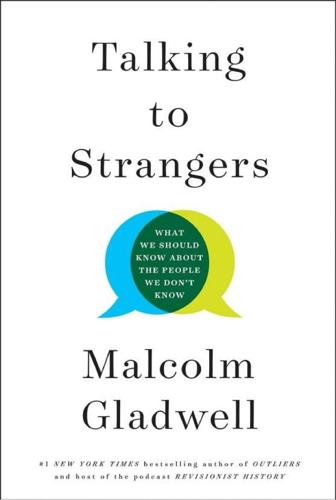
Talking to Strangers: What We Should Know About the People We Don't Know
by
Malcolm Gladwell
Published 9 Sep 2019
Consider, for example, one of the most famous findings in all of psychology: Stanley Milgram’s obedience experiment. In 1961, Milgram recruited volunteers from New Haven to take part in what he said was a memory experiment. Each was met by a somber, imposing young man named John Williams, who explained that they were going to play the role of “teacher” in the experiment. Williams introduced them to another volunteer, a pleasant, middle-aged man named Mr. Wallace. Mr. Wallace, they were told, was to be the “learner.” He would sit in an adjoining room, wired to a complicated apparatus capable of delivering electrical shocks up to 450 volts. (If you’re curious about what 450 volts feels like, it’s just shy of the amount of electrical shock that leaves tissue damage.)
…
And everything about the experiment was, to put it mildly, more than a little far-fetched. The electric-shock machine didn’t actually give shocks. More than one participant saw the loudspeaker in the corner and wondered why Wallace’s cries were coming from there, not from behind the door to the room where Wallace was strapped in. And if the purpose of the experiment was to measure learning, why on earth did Williams spend the entire time with the teacher and not behind the door with the learner? Didn’t that make it obvious that what he really wanted to do was observe the person inflicting the pain, not the person receiving the pain? As hoaxes go, the Milgram experiment was pretty transparent.
…
Everything Williams said during the experiment had been memorized from a script written by Milgram himself. “Mr. Wallace” was in fact a man named Jim McDonough. He worked for the railroad. Milgram liked him for the part of victim because he was “mild and submissive.” His cries of agony were taped and played over a loudspeaker. The experiment was a little amateur theatrical production. And the word amateur here is crucial. The Milgram experiment was not produced for a Broadway stage. Mr. Wallace, by Milgram’s own description, was a terrible actor. And everything about the experiment was, to put it mildly, more than a little far-fetched.
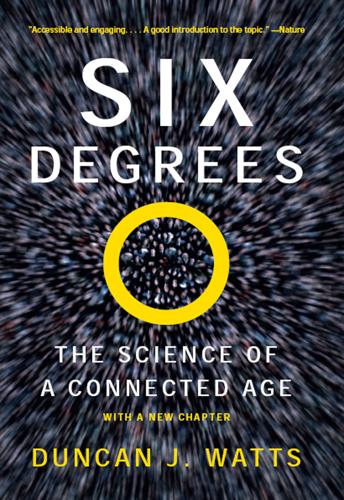
Six Degrees: The Science of a Connected Age
by
Duncan J. Watts
Published 1 Feb 2003
The results of these experiments were often surprising, but sometimes they were also disturbing and unwelcome. In his most famous study, Milgram brought into his Yale University laboratory members of the local New Haven community, ostensibly to participate in a study of human learning. On arriving, each participant was introduced to the supposed subject of the experiment and was asked to read to him a series of words that he was to repeat. If the subject made a mistake, he was to be punished by receiving an electric shock, administered by the participant. Each successive mistake was to be met with a shock of increasing voltage, rising eventually to harmful and even lethal levels.
…
Random graph models of social networks. Proceedings of the National Academy of Sciences, 99, 2566–2572 (2002). CHAPTER FIVE: SEARCH IN NETWORKS A compendium of Milgram’s research over his entire, fascinating career is Milgram, S. The Individual in a Social World: Essays and Experiments, 2d ed. (McGraw-Hill, New York, 1992). A detailed description of his obedience experiments is in Milgram, S. Obedience to Authority: An Experimental View (Harper & Row, New York, 1974). So What Did Milgram Really Show? Judith Kleinfeld’s paper that exams the history and empirical validity of the small-world problem is Kleinfeld, J.
…
In order to get a handle on the matter, we will need to return once more to Stanley Milgram’s small-world problem, which has turned out to be a good deal more subtle than anyone ever thought. CHAPTER FIVE Search in Networks STANLEY MILGRAM WAS ACTUALLY A FIGURE OF CONSIDERABLE controversy for much of his professional life. One of the century’s great social psychologists, Milgram displayed a genius for designing experiments that plumbed the mysterious interface between the minds of individuals and the social environment in which they typically operate. The results of these experiments were often surprising, but sometimes they were also disturbing and unwelcome.
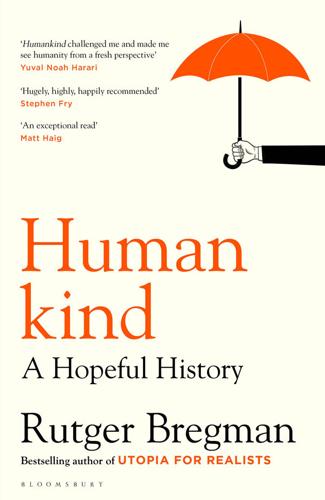
Humankind: A Hopeful History
by
Rutger Bregman
Published 1 Jun 2020
‘I am inclined to accept the latter interpretation.’16 When he published his results in 1963, Milgram’s shock experiment met with abhorrence. ‘Open-eyed torture’, ‘vile’ and ‘in line with the human experiments of the Nazis’ were just a few ways the press characterised what he’d done.17 The public outcry led to new ethical guidelines for experimental research. All that time Milgram was keeping another secret. He chose not to inform some six hundred participants afterwards that the shocks in the experiment had not been real. Milgram was afraid the truth about his research would get out and he’d no longer be able to find test subjects.
…
Originally published in 1963. 8Arendt, Eichmann in Jerusalem. 9Quoted in Harold Takooshian, ‘How Stanley Milgram Taught about Obedience and Social Influence’, in Thomas Blass (ed.), Obedience to Authority (London, 2000), p. 10. 10Quoted in Gina Perry, Behind the Shock Machine. The Untold Story of the Notorious Milgram Psychology Experiments (New York, 2013), p. 5. 11Ibid., p. 327. 12Ibid., p. 134. 13Gina Perry, ‘The Shocking Truth of the Notorious Milgram Obedience Experiments’, Discover Magazine (2 October 2013). 14Milgram, ‘Behavioral Study of Obedience’. 15Perry, Behind the Shock Machine (2012), p. 164. See also Gina Perry et al., ‘Credibility and Incredulity in Milgram’s Obedience Experiments: A Reanalysis of an Unpublished Test’, Social Psychology Quarterly (22 August 2019). 16Stanley Milgram, ‘Evaluation of Obedience Research: Science or Art?’
…
Nearly one thousand volunteers have had their turn at his shock machine, when Milgram realises something’s missing. Pictures. A hidden camera is hurriedly installed to record participants’ reactions. It’s during these sessions that Milgram finds his star subject, a man whose name would become synonymous with the banality of evil. Or, rather, his pseudonym: Fred Prozi. If you’ve ever seen footage of Milgram’s experiments, in one of hundreds of documentaries or in a clip on YouTube, then you’ve probably seen Prozi in action. And just like Zimbardo and prisoner 8612, it was the Fred Prozi recordings that made Milgram’s message hit home. We see a friendly-looking, heavyset man of around fifty who, with evident reluctance, does what he’s told.

Everything Is Obvious: *Once You Know the Answer
by
Duncan J. Watts
Published 28 Mar 2011
And yet that’s precisely what happened one day in the early 1970s when a group of psychology students went out into the subway system on the suggestion of their teacher, the social psychologist Stanley Milgram. Milgram was already famous for his controversial “obedience” studies, conducted some years earlier at Yale, in which he had shown that ordinary people brought into a lab would apply what they thought were deadly electrical shocks to a human subject (really an actor who was pretending to be shocked) simply because they were told to do so by a white-coated researcher who claimed to be running an experiment on learning. The finding that otherwise respectable citizens could, under relatively unexceptional circumstances, perform what seemed like morally incomprehensible acts was deeply disturbing to many people—and the phrase “obedience to authority” has carried a negative connotation ever since.1 What people appreciated less, however, is that following the instructions of authority figures is, as a general rule, indispensible to the proper functioning of society.
…
See Alicke and Govorun (2005) for the leadership result. CHAPTER 1: THE MYTH OF COMMON SENSE 1. See Milgram’s Obedience to Authority for details (Milgram, 1969). An engaging account of Milgram’s life and research is given in Blass (2009). 2. Milgram’s reaction was described in a 1974 interview in Psychology Today, and is reprinted in Blass (2009). The original report on the subway experiment is Milgram and Sabini (1983) and has been reprinted in Milgram (1992). Three decades later, two New York Times reporters set out to repeat Milgram’s experiment. They reported almost exactly the same experience: bafflement, even anger, from riders; and extreme discomfort themselves (Luo 2004, Ramirez and Medina 2004). 3.
…
As plausible as this method sounds, however, it is not how messages actually propagate through social networks, as we know now from a series of “small-world experiments” that began not long after Jacobs was writing. The first of these experiments was conducted by none other than Stanley Milgram, the social psychologist whose subway experiment I discussed in Chapter 1. Milgram recruited three hundred people, two hundred from Omaha, Nebraska, and the other hundred from around Boston, to play a version of the messages game with a Boston stockbroker who was a friend of Milgram’s and who had volunteered to serve as the “target” of the exercise. Much as in Jacobs’s imaginary version, participants in Milgram’s experiment knew whom they were trying to reach, but could only send the message to someone whom they knew on a first-name basis; thus each of the three hundred “starters” would send it to a friend, who would send it to a friend, and so on, until someone either refused to participate or else the message chain reached the target.
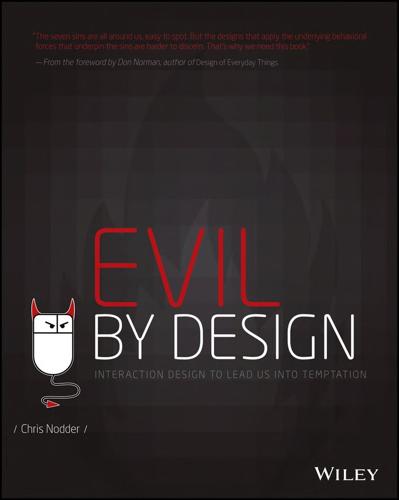
Evil by Design: Interaction Design to Lead Us Into Temptation
by
Chris Nodder
Published 4 Jun 2013
Balance the online disinhibition that can follow complete anonymity with the protection offered by pseudo-anonymity. Give people permission If an authority figure tells people to do something, it removes individual responsibility. In his now-infamous psychological study, Stanley Milgram told participants that they were helping him with experiments into memory and learning. Participants played the role of “teacher,” and their task was to administer electric shocks to a “learner” if they gave wrong answers, starting at 15 volts and rising in 15-volt steps to 450 volts. Before the session started, participants were given a sample shock to demonstrate the low end of what the learner would receive for wrong answers.
…
Situational norms: Tom Postmes and Russell Spears. “Deindividuation and antinormative behavior: A meta-analysis.” Psychological Bulletin 123.3 (1998): 238–259. Give people permission Milgram’s experiment: Stanley Milgram. “Behavioral Study of Obedience.” Journal of Abnormal and Social Psychology 67.4 (1963): 371–378. Milgram quotes: Stanley Milgram. Obedience to Authority: An Experimental View. New York: HarperCollins, 1974. p. 6. Not a one-off event: Thomas Blass. “The Milgram paradigm after 35 years: Some things we now know about obedience to authority.” Journal of Applied Social Psychology 29.5 (1999): 955–978. Moral disengagement: Albert Bandura.
…
What the participants didn’t know was that the “learner” was an actor following a script who made purposeful mistakes in his answers so that the participant was required to give him a shock. The “learner” never actually received the shocks, despite acting like he had. The voltages were labeled on the electric shock box, which also made noises appropriate to each voltage when activated. Although the “learner” was in a different room, participants could still hear him, so the effects of their actions were obvious. Milgram or one of his co-experimenters was in the room with the participants and instructed them to continue if they voiced concerns. Sixty percent of participants went all the way to 450 volts, even after hearing screams, pleading, or an ominous silence from the “learner.”
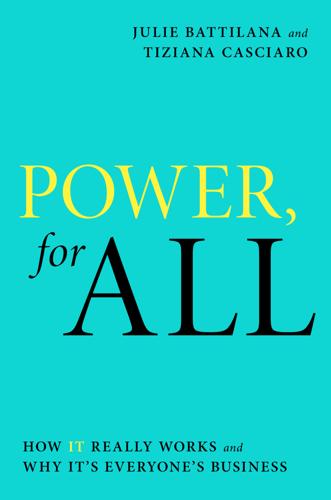
Power, for All: How It Really Works and Why It's Everyone's Business
by
Julie Battilana
and
Tiziana Casciaro
Published 30 Aug 2021
How much, he wondered, could that basic dynamic—obedience to authority—explain the behavior of Eichmann and others who were complicit in the Holocaust’s atrocities. So Milgram set up an experiment in the psychology lab at Yale: Participants, who thought they were taking part in a study on memory and learning, were asked by a scientist to administer an electric shock when the person they were paired with made a mistake. At the time, the majority of the study participants—a full 65 percent—complied with the experimenter’s instructions and administered the maximum 450-volt shock.6 “With numbing regularity,” Milgram concluded, “good people were seen to knuckle under the demands of authority and to perform actions that were callous and severe.”7 What do you think happened with the French TV show?
…
The player in the box was an actor, and no electric shocks were administered. This was an experiment, staged to examine how far people would be willing to go in obeying the orders of the TV host. It was inspired by another famous and controversial study that Stanley Milgram, a twenty-eight-year-old, newly appointed psychology professor at Yale University, launched in 1961. That year, television was saturated with live coverage of the war trial of Adolf Eichmann, who had played a leading role in implementing Hitler’s “Final Solution.” Professor Milgram, the son of Jewish immigrants, had closely followed the fates of Nazi leaders after the war, noticing that the accused, like Eichmann, often justified their actions by saying they were simply carrying out the orders of superior officers.
…
Bloom, “Lesson of a Lifetime,” Smithsonian Magazine, September 2005. 4 Bloom, “Lesson of a Lifetime.” 5 Jean-Léon Beauvois, Didier Courbet, and Dominique Oberlé, “The Prescriptive Power of the Television Host: A Transposition of Milgram’s Obedience Paradigm to the Context of TV Game Show,” European Review of Applied Psychology 62, no. 3 (2012), 111–119. 6 Stanley Milgram, “Behavioral Study of Obedience,” Journal of Abnormal and Social Psychology 67, no. 4 (1963): 371–78. Since the Milgram experiment was conducted, researchers have raised ethical and methodological concerns about it. See Gina Perry, Behind the Shock Machine: The Untold Story of the Notorious Milgram Psychology Experiments (London-Melbourne: Scribe, 2012). 7 Stanley Milgram, “Some Conditions of Obedience and Disobedience to Authority,” Human Relations 18, no. 1 (1965): 57–76. 8 The researchers tested four scenarios: One was the standard re-creation of Milgram’s experiment in which thirty-two contestants participated; one “social support” scenario, where a production assistant ran on set midway through asking the host to stop because the game was too immoral, in which nineteen people participated; a “TV broadcast” scenario, where contestants were told that the game show would be broadcast as a pilot, in which eighteen people participated; and lastly, a “host withdrawal” scenario, where the host left the stage after making the conditions clear, in which seven people participated.

Mistakes Were Made (But Not by Me): Why We Justify Foolish Beliefs, Bad Decisions, and Hurtful Acts
by
Carol Tavris
and
Elliot Aronson
Published 6 May 2007
But, one small step at a time, he went along with dishonest actions, justifying each one as he did. He was entrapped in pretty much the same way as were the 3,000 people who took part in the famous experiment created by social psychologist Stanley Milgram.27 In Milgram's original version, two-thirds of the participants administered what they thought were life-threatening levels of electric shock to another person, simply because the experimenter kept saying, "The experiment requires that you continue." This experiment is almost always described as a study of obedience to authority. Indeed it is. But it is more than that: It is also a demonstration of long-term results of self-justification.28 Imagine that a distinguished-looking man in a white lab coat walks up to you and offers you twenty dollars to participate in a scientific experiment.
…
Life is cheap in the Orient." 9 Dissonance theory would therefore predict that when victims are armed and able to strike back, perpetrators will feel less need to reduce dissonance by belittling them than when their victims are helpless. In an experiment by Ellen Berscheid and her associates, participants were led to believe that they would be delivering a painful electric shock to another person as part of a test of learning. Half were told that later they would be reversing roles, so the victim would be in position to retaliate. As predicted, the only participants who denigrated their victims were those who believed the victims were helpless and would not be able to respond in kind.10 This was precisely the situation of the people who took part in Stanley Milgram's 1963 obedience experiment. Many of those who obeyed the experimenter's orders to deliver what they thought were dangerous amounts of shock to a "learner" justified their actions by blaming the victim.
…
Liddy's first proposal with the "mugging squads," p. 194 (the prostitutes would be "high-class," Liddy assured the group, "only the best," p. 195); "If [Liddy] had come to us at the outset p. 214; "decisions that now seem insane...," "We were past the point of halfway measures," p. 215. 27 The number of total participants is an informed estimate from psychologist Thomas Blass, who has written extensively about the original Milgram experiment and its many successors. About 800 people participated in Milgram's own experiments; the rest were in replications or variations of the basic paradigm over a 25-year span. 28 The original study is described in Stanley Milgram (1963), "Behavioral Study of Obedience," Journal of Abnormal and Social Psychology, 67, pp. 371–378. Milgram reported his study in greater detail and with additional supporting research, including many replications, in his subsequent (1974) book, Obedience to Authority: An Experimental View.

Virtual Competition
by
Ariel Ezrachi
and
Maurice E. Stucke
Published 30 Nov 2016
To explain how the presence of an intermediary may facilitate such actions, we enter the area of behavioral experiments, which explore the issue of distancing in decision-making. The Messenger Scenario 43 One famous example—and the basis for Peter Gabriel’s song “Milgram’s 37 (We Do What We’re Told)”22—is Stanley Milgram’s electric shock experiments.23 You might have seen the black-and-white videos24 in which the test subject and a confederate of the experimenter were told that the experiment tested the effects of punishment on memory. To determine their assigned roles, the confederate and test subject drew lots, which were rigged so that the test subject always received the teacher role.
…
Thereafter, the learner no longer responded; the experimenter instructed the teacher-subject to treat the absence of a response as a wrong answer, and to continue with the experiment. As the experiment continued, the teacher-participant was told to administer increasingly intense shocks to the now nonresponsive confederate-learner, even to the levels marked “XXX.” These experiments actually sought to measure at what voltage level the teacher-participant would disobey and refuse to continue with the experiment. Milgram varied the situational factors to determine the extent to which they altered the degree of obedience. Before his famous experiment, Milgram asked college students, psychiatrists, and middle-class adults for their predictions.
…
Maurice Stucke, “Morality and Antitrust,” Columbia Business Law Review (2006): 443. Songfacts, “Milgram’s 37 (We Do What We’re Told),” by Peter Gabriel, http://www.songfacts.com/detail.php?id=772. S. Milgram, “Behavioral Study of Obedience,” Journal of Abnormal & Social Psychology 67, no. 4 (1963): 371. DP DenkProducties, “Milgram Experiment—Jeroen Busscher,” YouTube (June 2012), https://www.youtube.com/watch?v=yr5cjyokVUs. S. Milgram, Obedience to Authority: An Experimental View (New York: Harper & Row, 1974), 30–31. Milgram, “Behavioral Study of Obedience.” F. Gino et al., “See No Evil: When We Overlook Other People’s Unethical Behav ior,” HBS Working Paper No 08-045 (January 11, 2008), 11.
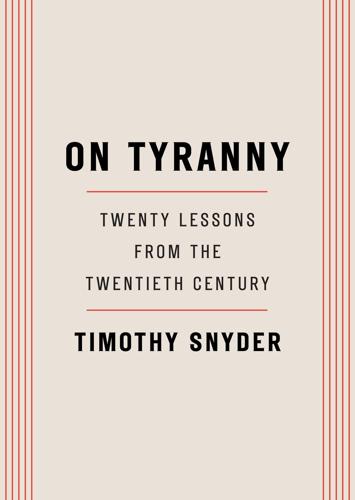
On Tyranny: Twenty Lessons From the Twentieth Century
by
Timothy Snyder
Published 14 Sep 2017
The Yale psychologist Stanley Milgram, contemplating Nazi atrocities, wanted to show that there was a particular authoritarian personality that explained why Germans behaved as they had. He devised an experiment to test the proposition, but failed to get permission to carry it out in Germany. So he undertook it instead in a Yale University building in 1961—at around the same time that Adolf Eichmann was being tried in Jerusalem for his part in the Nazi Holocaust of the Jews. Milgram told his subjects (some Yale students, some New Haven residents) that they would be applying an electrical shock to other participants in an experiment about learning.
…
Milgram told his subjects (some Yale students, some New Haven residents) that they would be applying an electrical shock to other participants in an experiment about learning. In fact, the people attached to the wires on the other side of a window were in on the scheme with Milgram, and only pretended to be shocked. As the subjects (thought they) shocked the (people they thought were) participants in a learning experiment, they saw a horrible sight. People whom they did not know, and against whom they had no grievance, seemed to be suffering greatly—pounding the glass and complaining of heart pain. Even so, most subjects followed Milgram’s instructions and continued to apply (what they thought were) ever greater shocks until the victims appeared to die.
…
Even those who did not proceed all the way to the (apparent) killing of their fellow human beings left without inquiring about the health of the other participants. Milgram grasped that people are remarkably receptive to new rules in a new setting. They are surprisingly willing to harm and kill others in the service of some new purpose if they are so instructed by a new authority. “I found so much obedience,” Milgram remembered, “that I hardly saw the need for taking the experiment to Germany.” 2 Defend institutions. It is institutions that help us to preserve decency. They need our help as well. Do not speak of “our institutions” unless you make them yours by acting on their behalf.
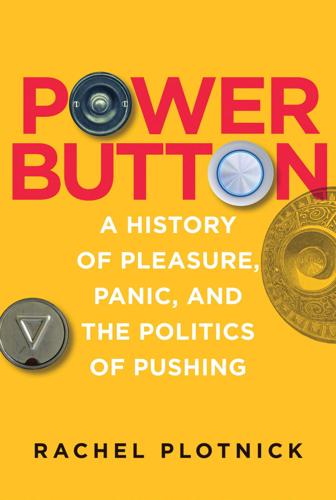
Power Button: A History of Pleasure, Panic, and the Politics of Pushing
by
Rachel Plotnick
Published 24 Sep 2018
Most stories about push-button warfare focused on conjecture and speculation, forecasting a future that never arrived; some called push-button warfare a “myth” and the purview of “calamity howlers,” whereas others sought to identify the exact day that inevitable war-by-button would arrive.17 The panic over such visions led to prominent figures such as architect Frank Lloyd Wright (1946) to bleakly conclude, “The push-button civilization over which we were gloating has suddenly become a terror.”18 Ethical quandaries about button pushing revealed that the way buttons presented choices to human beings—as “all or nothing” or cause and effect—could take a real psychological toll. In fact, social psychologist Stanley Milgram’s famous experiment (1961) exposed this problem, as he investigated what would happen if he could convince participants to administer electric shocks to other study subjects via a push button with labels such as “Danger: Severe Shock.”19 He demonstrated that buttons functioned as psychologically seductive tools—people wanted to push them, especially when distanced from the consequences of their pushes, and they exhibited a great deal of obedience in following Milgram’s requests. Although pushers subsequently experienced anxiety and guilt about what they could accomplish remotely with a button, the study’s results proved worrisome in that one could easily manipulate a button pusher to carry out brutal and morally repugnant acts.20 Such findings carried particular weight in the context of Cold War anxiety and in the aftermath of Nazism.
…
“A Plea for Individualism: Noted Architect Describes Failure of Educational, Political and Economic Systems in Bicentennial Conference Address,” Princeton Alumni Weekly 47 (1946): 6. 19. Ben Prawdzik, “Milgram Experiment, 50 Years On,” Yale Daily News, September 28, 2011, http://yaledailynews.com/blog/2011/09/28/milgram-experiment-50-years-on/. 20. For one take on the experiment, see Michael Shermer, “What Milgram’s Shock Experiments Really Mean,” http://www.scientificamerican.com/article.cfm?id=what-milgrams-shock-experiments-really-mean/. 21. Jack Geyer, “The Pillow Pilots of the Push-Button Age,” Los Angeles Times, September 24, 1952: A5. 22. John H. Averill, “Underexercised Nation,” Los Angeles Times, December 6, 1961: C1. 23.
…
Chicago: Public Ownership League of America, 1919. Pold, Soren. “Button.” In Software Studies: A Lexicon, edited by Matthew Fuller. Cambridge, MA: MIT Press, 2008. Pratt, Loring. “Untitled.” Union Electric Quarterly 5, no. 9 (1917): 328. Prawdzik, Ben. “Milgram Experiment, 50 Years On.” Yale Daily News, September 28, 2011. http://yaledailynews.com/blog/2011/09/28/milgram-experiment-50-years-on/. Preece, W. H. “Recent Wonders of Electricity.” Popular Science 20, no. 46 (1882): 786–794. Preece, William Henry. “On the Application of Electricity to Domestic Purposes.” Telegraphic Journal 1, no. 16 (1864): 181. Price, Will.
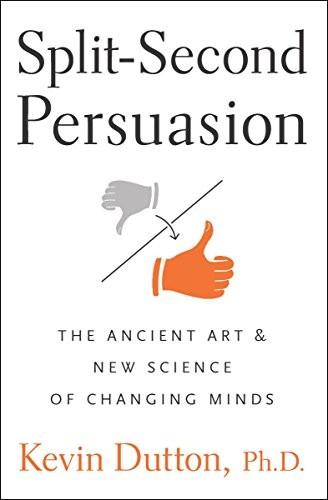
Split-Second Persuasion: The Ancient Art and New Science of Changing Minds
by
Kevin Dutton
Published 3 Feb 2011
Annual Review of Psychology 57 (2006): 345–374. 20 In fact, research has shown … Greatbatch, David and Heritage, John, ‘Generating Applause: A Study of Rhetoric and Response at Party Political Conferences.’ The American Journal of Sociology 92 (1986): 110–157. 21 Or take Stanley Milgram’s electric shocks experiment … In 1963, Milgram published a study that has now assumed iconic status in the field of experimental psychology – and which has arguably gone down as the most celebrated, certainly the most combustible, in the discipline’s hundred-or-so-year history. Milgram devised a simulated learning paradigm in which participants (recruited from a random sample of respectable, middle-class Americans) were allocated the role of ‘teacher’ opposite an associate of the researcher (the ‘learner’).
…
‘Mistakes’ were to be punished by the administration of electric shocks – minimal at the outset but escalating to a brutal 450 volts as errors perpetuated. Ostensibly, the study was presented as an investigation into short-term memory. And ostensibly, the electric shocks were real. But, in reality, the actual focus was on obedience – and the shocks were a sham. The aim was chillingly simple: To what extremes, Milgram wanted to know, were everyday, law-abiding American citizens prepared to go when instructed by an authority figure? For more on Milgram’s research into obedience, see his book Obedience to Authority: An Experimental View (New York, NY: Harpercollins, 1974). 22 A recent study … McCabe, David P. and Castel, Alan D., ‘Seeing Is Believing: The Effect of Brain Images on Judgements of Scientific Reasoning.’
…
There’s nothing like confidence to inspire confidence. Take TV, for example. If you’ve ever wondered why experts interviewed on television invariably appear against a backdrop of books – now you know. The accoutrements of knowledge lend their pronouncements that extra degree of oomph. 21Or take Stanley Milgram’s electric shocks experiment at Yale in the sixties. A staggering 65 per cent of those who took part in the study twisted that dial right the way round to maximum when instructed to do so by a benign-looking professor in a white coat. But when the professor shuffled off and a lab technician took over – in jeans, T-shirt and sneakers – the ‘interrogators’ weren’t so keen.
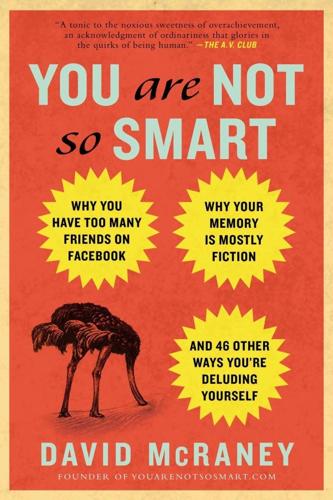
You Are Not So Smart
by
David McRaney
Published 20 Sep 2011
If all of your friends tell you to avoid a certain part of town or a brand of cheese, you take their advice. Conformity is a survival mechanism. The most famous conformity experiment was performed by Stanley Milgram in 1963. He had people sit in a room and take commands from a scientist in a lab coat. He told them they would be teaching word pairs to another subject in the next room, and each time their partner got an answer wrong they were to give them an electric shock. A control panel on a complicated-looking contraption clearly indicated the power of the shock. Switches along a single row were labeled with increasing voltages and a description.
…
The screams would get louder, and eventually subjects could hear the guy in the other room pleading for his life and asking the psychologist to end the experiment. Most subjects asked if they could stop. They didn’t want to shock the poor man in the next room, but the scientist would urge them to continue, telling them not to worry. The scientist said things like “You have no other choice; you must go on” or “The experiment requires that you continue.” To everyone’s surprise, 65 percent of people could be prompted to go all the way to right below the “XXX.” In reality, there were no shocks, and the other person was just an actor pretending to be in pain. Milgram’s experiment has been repeated many times with many variations.
…
The percentage of people who go all the way can be dropped to zero just by removing the authority figure, or it can be raised into the 90 percentile range by having someone else give the test while the subject has only to deliver the shocks. Again, with Milgram’s experiment there was no reward or punishment involved—just simple conformity. Milgram showed when you can see your actions as part of just following orders, especially from an authority figure, there is a 65 percent chance you will go to the brink of murder. Add the risk of punishment, or your own harm, and chances of conformity increase. Milgram’s work was a response to the Holocaust. He wondered if an entire nation could have its moral compass smashed, or if conformity and obedience to authority were more likely the root of so much compliance to commit unspeakable evil.

Mindwise: Why We Misunderstand What Others Think, Believe, Feel, and Want
by
Nicholas Epley
Published 11 Feb 2014
One of the most famous series of experiments in psychology’s history is Stanley Milgram’s research on obedience to authority. Most of us believe we’re independent thinkers with kind hearts, so if we were told to deliver enough electric shock to kill another person in an experiment, most of us would believe that we’d refuse immediately. Indeed, when Milgram surveyed different groups of people, nobody predicted that they would be willing to deliver more than 300 volts of electricity to another person, and most believed they would stop far sooner. And yet when Milgram set up an experiment in which people were asked to do just that, he found that in his experiment everyone was willing to deliver 300 volts of electric shock to another person and a full 62.6 percent pressed a switch that they were told would deliver 450 volts, long past the point where it appeared that the other person might have died from the experience.4 Results like these are interesting but, in my experience, rarely convince anyone that their powers of introspection are weaker than they would guess.
…
LaPiere’s hotel and restaurant clerks (whom I described at the beginning of this chapter) knew their conscious attitudes toward Asians, but they missed the behavioral responses that would be triggered automatically when a smiling, friendly, and real Asian human being actually asked for a room. When thinking about how you would respond if asked to deliver electric shocks to another human being in the Milgram obedience studies, you know your conscious aversion to harming another person, but you miss the difficulty you would have in saying no to a clear and reassuring authority figure in the heat of the moment after having lived much of your life following orders from authority figures.
…
Mispredicting affective and behavioral responses to racism. Science 323: 276–78. 3. LaFrance, M., and J. Woodzicka (2001). Real versus imagined reactions to sexual harassment. Journal of Social Issues 57: 15–30. 4. Milgram, S. (1963). Behavioral study of obedience. Journal of Abnormal and Social Psychology 67: 371–78. A recent replication of this experiment found nearly identical obedience rates: Burger, J. M. (2009). Replicating Milgram: Would people still obey today? American Psychologist 64: 1–11. 5. Buehler, R., D. Griffin, and M. Ross (1994). Exploring the “Planning Fallacy”: Why people underestimate their task completion times.

Irrational Exuberance: With a New Preface by the Author
by
Robert J. Shiller
Published 15 Feb 2000
The anxiety and distress that Asch’s subjects expressed may have come partly from their conclusion that their own senses were somehow not reliable. Another widely cited series of experiments relevant to herd behavior is Stanley Milgram’s investigations of the power of authority. In Milgram’s experiments, the subject was asked to administer electric shocks to another person sitting close by, who was, again unbeknownst to the subject, a confederate. There really were no electric shocks, but the confederate pretended to be experiencing them, feigning pain and suffering. The confederate asserted that he was in great distress and asked that the experiment be stopped. But when the experimenter told the subjects to continue administering the shocks, insisting that the shocks would cause no permanent tissue damage, many did so.3 These results were widely interpreted as demonstrating the enormous power of authority over the human mind.
…
(In fact, it is worth noting that in this case the experimenter was indeed correct: it was all right to continue giving the “shocks”—even though most of the subjects did not suspect the reason.) Thus the results of Milgram’s experiment can also be interpreted as springing from people’s past learning about the reliability of authorities.4 Asch’s and Milgram’s studies are as interesting as ever when viewed from the standpoint of this information-based interpretation. The experiments demonstrate that people are ready to believe the majority view or to believe authorities even when they plainly contradict matter-of-fact judgment. And their behavior is in fact largely rational and intelligent. Most people have had many prior experiences of making errors when they contradicted the judgments of a larger group or of an authority figure, and they have learned from these experiences.
…
Most people have had many prior experiences of making errors when they contradicted the judgments of a larger group or of an authority figure, and they have learned from these experiences. Thus the Asch and Milgram experiments give us a different perspective on the overconfidence phenomenon: people are respectful of authorities in formulating the opinions about which they will later be so overconfident, transferring their confidence in authorities to their own judgments based upon them. Given the kind of behavior observed by Asch and Milgram, it is not at all surprising that many people are accepting of the perceived authority of others on such matters as stock market valuation.
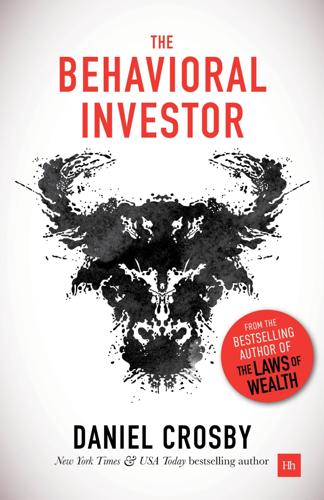
The Behavioral Investor
by
Daniel Crosby
Published 15 Feb 2018
In a twist on the study, Milgram denigrated the character of the learner before beginning the experiment by telling the teacher that they had been “acting like an animal” before being situated across the wall. When the authority figure besmirched the good name of the learner, the willingness to shock all the way to 450 volts rose to over 90%. In a follow-on study, Milgram interviewed those who had shocked the learner to the maximum level and all agreed, in direct contradiction to the data, that they would be unwilling to do harm to a stranger if so instructed by an authority figure. Milgram’s primary finding was, “often it is not so much the kind of person a man is as the kind of situation in which he finds himself that determines how he will act.”
…
In a cold state and with the benefit of history, it is easy to imagine oneself as a moral crusader, but the research on behavior and willpower tells a more complicated story. Stanley Milgram, a Yale psychologist, studied our willpower in the face of authority. Milgram’s study, conducted less than 20 years after the conclusion of World War II, set out to answer the question, “Were the Nazi rank and file culpable accomplices or just regular men following orders?” To test this, Milgram recruited psychologically healthy men to take part in a study that purported to study the relationship between punishment and learning. Participants would teach a “learner” on the other side of a brick wall a series of exercises.
…
An incorrect response would lead the teacher to administer a punishment (electric shock) of ascending intensity with each subsequent missed question. The deception involved in the study was that in place of a learner, there were actually only tape-recorded screams that led the teacher to believe that he (all participants were male) was harming his pupil. To simulate the effects of authority, a “doctor” in a grey lab coat sat inside the room where the test was being administered and gently prodded the participant to “please continue with the experiment” in the event that he became unsettled with harming the learner. Before conducting the experiment, Milgram asked his students, other professionals and even Holocaust historians what percentage of respondents would shock a stranger with a near-lethal (so they thought) level of voltage for missing a few silly problems on an exam.
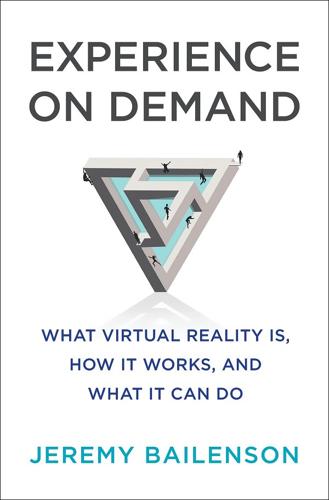
Experience on Demand: What Virtual Reality Is, How It Works, and What It Can Do
by
Jeremy Bailenson
Published 30 Jan 2018
(The other senses are more complicated.) This opens up some inspiring possibilities about the kinds of experiences we might want to have, and how those experiences can make us, and the world, a better place. On the other hand, if we choose to experience unhealthy environments and experiences, we can expect unhealthy results. As a colleague of mine puts it, media experiences are like your diet: you are what you eat. If you’ve taken a Psych 101 class, you are probably familiar with Stanley Milgram’s famous studies on obedience, which remain one of the most famous and disturbing analyses of human behavior ever conducted.
…
All the while, there was an authority figure in a lab coat telling the participant that he must continue, saying things like, “The experiment requires you to continue,” and “You have no other choice but to continue.” As the experiments progressed, Milgram measured two critical variables: how many shocks the participant was willing to deliver, in spite of the clear ostensible pain from the confederate, and also the effect that the obedience had on the participant.1 The results of repeated studies demonstrated that a majority of experiment participants obeyed the commands of the authority figure to the very end of the study, including the final 450-volt shock (labeled “Danger: Extreme Shock,” on the shock generator).
…
As can be seen in some very powerful and troubling videos that are easy to find online, the participants who obeyed did not do so without cost—often they would sweat, bite their lips, exhibit nervous fits of laughter, or groan and tremble. When people talk about the Milgram experiments they often focus on the terrible insight that people are capable of inflicting great cruelty, blindly following orders. But what is not emphasized enough is how terribly participants suffered while doing it. In 2006, Mel Slater, one of the pioneering researchers in Virtual Reality, decided to replicate this experiment in VR.2 However, there was a twist: he had participants engage in a task similar to the one in the original Milgram study, but in his study the confederate was replaced by a digital representation of a person.
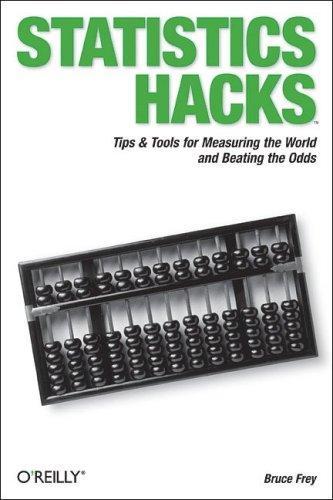
Statistics hacks
by
Bruce Frey
Published 9 May 2006
The response rate that Milgram enjoyed was very high, considering the complicated requests made of participants. This is not surprising, because Milgram knew something about obedience. Stanley Milgram is probably better known for another clever study with more disturbing results he conducted some years before his small world study. With his obedience studies of the early 1960s, Milgram demonstrated that when people of authority (such as research assistants in lab coats) ask study participants to do something that makes them uncomfortable, such as administering (or believing that they are administering) an electric shock to another research subject, a surprising number of people will do it.
…
Doing a Big Study How could one study the problem of whether we actually live in a small world? The best way is to duplicate the methods used by Stanley Milgram. Choose a target Milgram started by picking someone he knew who worked in Boston, Massachusetts, where Milgram lived. It wasn't Kevin Bacon, but a stockbroker who agreed to act as the target, the final end of a chain that Milgram hoped to build. You could pick your best friend or your school principal or your University's president. You gotta ask their permission first, though (something about ethics). Recruit participates Milgram then randomly sampled from two communities: Boston and Omaha, Nebraska. This sampling scheme was meant to represent the two extremes of likelihood that anyone would know the target.
…
This sampling scheme was meant to represent the two extremes of likelihood that anyone would know the target. Start with people close by and people far away, and the average of their data should be fairly representative of the population. Milgram used 300 randomly chosen recruits. You should use as many as you can afford or have time for. Train participates Milgram sent a packet in the mail to each recruit. The packet contained instructions describing the study and a letter for the Boston broker. They were asked to deliver the letter to our guy, but only if they knew him personally. If they did not know him personally, they were asked to record some information, such as their name, and send the packet on to someone who they did know who they thought might have a better chance of knowing him.
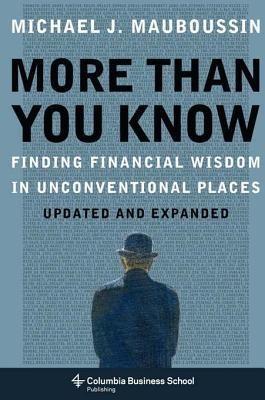
More Than You Know: Finding Financial Wisdom in Unconventional Places (Updated and Expanded)
by
Michael J. Mauboussin
Published 1 Jan 2006
The subjects asked the learner questions, and were told by a stern, lab-coated supervisor to administer progressively stronger electric shocks in return for incorrect answers. The learners would scream in pain and beg for mercy to avoid the increasingly painful shocks. Even though they were never forced to do anything, nor were they subject to reprisal, many of the subjects ended up doling out lethal shocks.The learners in this experiment were actors and the shocks fake, but Milgram’s findings were real and chilling: People obey authority figures against their better judgment. Here again, the behavior generally makes sense—authorities often know more than others about their field—but such obedience can lead to inappropriate responses.5 • Scarcity.
…
The subjects, bright college students, were clearly confused, and one-third of them went with the majority view even though it was obviously incorrect. While extreme, Asch’s experiment shows how we all rely to some degree on what others do.4 EXHIBIT 11.1 The Asch Experiment Source: Illustration by author, based on Asch, “Effects of Group Pressure Upon the Modification and Distortion of Judgment.” • Liking. We all prefer to say yes to people we like. We tend to like people who are similar to us, who compliment us, cooperate with us, and who are attractive. • Authority. In one of the most enlightening and unsettling human experiments ever, social psychologist Stanley Milgram (of “six degrees of separation” fame) had subjects come in and play the role of “teacher” for a “learner.”
…
Cialdini, “The Science of Persuasion,” Scientific American (February 2001): 76-81. 2 Robert B. Cialdini, Influence: The Psychology of Persuasion (New York: William Morrow, 1993), 18. 3 See chapter 11. 4 For an interesting account of Asch’s experiment, see Duncan J. Watts, Six Degrees: The Science of a Connected Age (New York: W. W. Norton & Company, 2003), 207-10. 5 Cialdini, Influence, 208-15. Also see Rod Dickinson, “The Milgram Reenactment,” http://www.milgramreenactment.org/pages/section.xml?location=51. 6 Lisa W. Foderaro, “If June Cleaver Joined ‘Sex and the City’: Tupperware Parties for the Cosmo Set,” The New York Times, February 1, 2003. 7 Cialdini, Influence, 37. 12.
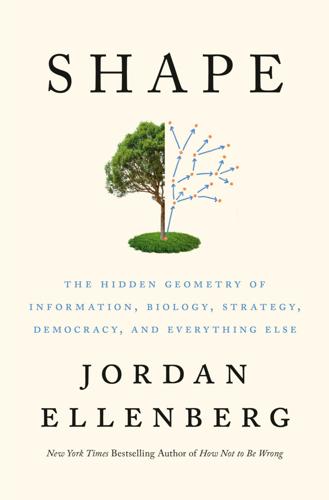
Shape: The Hidden Geometry of Information, Biology, Strategy, Democracy, and Everything Else
by
Jordan Ellenberg
Published 14 May 2021
In graph theory we call these networks mixing short and long connections “small worlds,” a phrase that goes back to the 1960s and the social psychologist Stanley Milgram. Milgram is probably best known for convincing subjects to deliver fake electric shocks to actors under authoritarian suasion, but in his cheerier moments he studied more positive forms of human connection. In the geometry of human acquaintance, where two people are connected whenever they know each other, how likely is it, Milgram asked, that two people can be joined by a chain of connections, and, if so, how long a chain is needed? John Guare’s play Six Degrees of Separation puts a summary of Milgram’s results in the mouth of one of his brittle, upper-crust New York art world characters: I read somewhere that everybody on this planet is separated by only six other people.
…
The developments in the math of small-world networks show that the initially surprising phenomenon found by Milgram ought not to have been surprising at all. This is the nature of good applied mathematics: it turns “How could it be?” into “How could it be otherwise?” Stanley Milgram is the face of the “six degrees” theory partly because of the experiment he ran, and partly because he was such a skilled marketer of his own work. His first write-up of the postcard study, two years before any formal scientific publication, was in the popular magazine Psychology Today—in fact, it was a feature in the very first issue. But Milgram wasn’t the first to contemplate the smallness of the networked world.
…
Feld, “Why Your Friends Have More Friends Than You Do,” American Journal of Sociology 96, no. 6 (1991): 1464–77. Duncan Watts and Steven Strogatz: Duncan J. Watts and Steven H. Strogatz, “Collective Dynamics of ‘Small-World’ Networks,” Nature 393, no. 6684 (1998): 440–42. Stanley Milgram is the face: See Judith S. Kleinfeld, “The Small World Problem,” Society 39, no. 2 (2002): 61–66, for an informative depiction, using extensive research in Milgram’s archives, of the gap between Milgram’s scientific findings and the way he presented them in the popular press. smallness of the networked world: For the history of research on small-world networks I am indebted to Duncan Watts, Small Worlds: The Dynamics of Networks Between Order and Randomness (Princeton: Princeton University Press, 2003), and Albert-László Barabási, Mark Newman, and Duncan Watts, The Structure and Dynamics of Networks (Princeton: Princeton University Press, 2006).
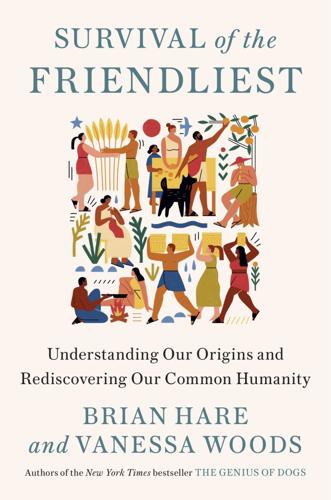
Survival of the Friendliest: Understanding Our Origins and Rediscovering Our Common Humanity
by
Brian Hare
and
Vanessa Woods
Published 13 Jul 2020
Asch found that 75 percent of the time, people sided with the incorrect majority opinion.44 Almost a decade later, Stanley Milgram, a student of both Allport and Asch, became fascinated with the trial of Adolf Eichmann, the Nazi who had organized the transport of millions of Jews to their death in concentration camps. Milgram noted that a journalist who had attended Eichmann’s trial described him as an “uninspired bureaucrat who simply sat at his desk and did his job.”45 This led Milgram to perform his famous experiments testing the limits of our desire to be obedient to authority. The picture seemed complete. While cultures of racism, moral systems, education, and economics all have a critical role in shaping group behavior, it was prejudice, conformity, and obedience to authority that became the dominant psychological explanation for the horrors of World War II.
…
Not only were people able to absolve themselves for hurting someone who’d been dehumanized, they believed these subjects were less sensitive to pain and swayed only by the application of more shocks. Bandura concluded that dehumanization is central to explaining human cruelty. Every psychology student knows about Milgram’s obedience to authority experiments, but few have heard of Bandura’s dehumanization experiments. Even among researchers, Milgram’s work has been cited almost twenty times more often than Bandura’s. We tend to consider the overt dehumanization of other groups a relic of a distant past—far beyond the pale of our civilized modern societies.47 Instead, the focus has shifted toward interventions against the more covert forms of “new prejudice.”
…
But the worst human weakness was missing from the analysis. * * * — A year after Milgram published his famous monograph on obedience to authority, the developmental psychologist Albert Bandura published his pioneering experiment on dehumanization. Bandura wanted to find out whether ordinary people would be cruel, not in deference to someone else, but because they shared responsibility for the decision to punish. Bandura thought people would be more cruel when the decision was distributed across several people, so that the cruelty could not be traced to any one individual.46 People in the experiment were given the role of supervisors and were asked to manage the training of workers by using electric shocks.
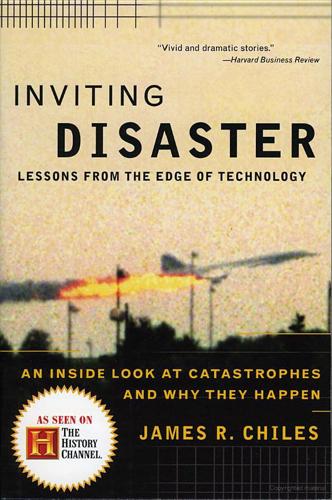
Inviting Disaster
by
James R. Chiles
Published 7 Jul 2008
In a simple but thorough set of psychological investigations at Yale in 1961, Stanley Milgram discovered that most of the people he tested were entirely willing to give somebody else multiple strong electric shocks if the commands to continue came from an authority figure, in this case a white-coated “scientist” who told them that shocks were necessary as part of a memory and learning experiment. The shocks were not real, and the forty-seven-year-old “victim” was following a script, but for all Milgram’s subjects knew, the jolts were bringing a man to unconsciousness and perhaps even death. Milgram found immediately that subjects were so willing to continue straight through the series of thirty shocks, rising from 15 to 450 volts, that he had to change the experiment to have the victim yell and plead for release as the shocks went up.
…
Milgram found immediately that subjects were so willing to continue straight through the series of thirty shocks, rising from 15 to 450 volts, that he had to change the experiment to have the victim yell and plead for release as the shocks went up. Nevertheless, some participants continued to administer the shock all the way to the end of the series even after the “victim” went completely silent, apparently unconscious or dead. Many of Milgram’s subjects were unhappy and tense about what they were doing: pausing, fretting, questioning, but then going ahead under pressure of orders. One of the comparative few who stopped and flatly refused to continue, despite repeated demands from the “scientist,” was a thirty-one-year-old German-born woman who had spent part of her adolescence under Hitler’s rule.
…
Even without this fear, the average employee is going to have some second thoughts about causing trouble for the people who hired him or for his coworkers. A sharply worded internal memo, then, is a feel-good solution. It puts the worker on record as one of the good guys without challenging the structure of power and obedience that Stanley Milgram’s experiments revealed. We know from a long list of catastrophes that warning memos from inside didn’t make any difference. That would include the R.101, the Challenger, Three Mile Island, Bhopal, the DC-10 and its cargo doors, Apollo 1, and others. The mistake made by people who stop at memos is that they think their writing will stand on its own—that its hard truth will somehow vanquish opposition as quickly as Dorothy Gale’s bucket of water melted the Wicked Witch.
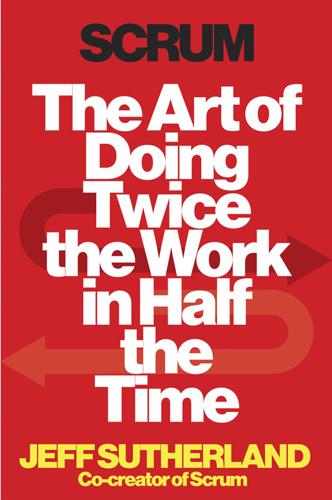
Scrum: The Art of Doing Twice the Work in Half the Time
by
Jeff Sutherland
and
Jj Sutherland
Published 29 Sep 2014
Instead of looking for blame and fault, it rewards positive behavior by focusing people on working together and getting things done. Perhaps the most famous demonstration of this human reaction to systems was the Milgram experiment on obedience to authority figures, which was done in the early 1960s at Yale University. The experiment was simple and, to modern eyes, somewhat cruel. It was also devastating and powerful and is taught in every first-year psychology course. Dr. Stanley Milgram, a professor at Yale, had a question that was quite apropos then. Three months before the first experiments began, Adolf Eichmann, the architect of the Holocaust, went on trial. One of the most persistent questions surrounding the Holocaust was how so many millions of people could have been willing accomplices in such horror.
…
It’s very easy to look at crimes against humanity and blame individuals for their actions. It’s the right thing to do, no? The question that Milgram wanted to answer, though, is: Are ordinary Americans so different from Germans? Would they have reacted differently in the same situation? And the uncomfortable answer is that no, Americans wouldn’t have behaved differently. In fact, given how many countries and cultures have replicated the experiment, no one would have. Given the right situation, we’re all capable of being Nazis. The experiment worked this way. The subject, an ordinary person, was told by someone wearing a white lab coat (which gave him a veneer of scientific authority) to administer ever-greater electrical shocks to a third person, an actor, who was in another room.
…
market risk Marvell, Andrew Maslow, Abraham Massachusetts Institute of Technology (MIT) Lean Enterprise Institute at Media Lab of mastery Maxwell, Scott, 5.1, 8.1, 8.2, 8.3 Maxwell Curve, 103 Medco, 6.1, 6.2, 6.3, 6.4 Medco 2.0 at stock price of microfinance, 9.1, 9.2 micromanaging Microsoft, 1.1, 9.1, 9.2 Org Chart at Scrum at MidContinent Computer Services middle managers MiG-15 fighters, 8.1, 8.2 Milgram, Stanley Milgram experiment Miller, George Minimum Viable Product (MVP), 191 Missouri, University of mistakes, correcting, 5.1, 5.2, 8.1 Morita, Akio Morning Star mountain climbers, happiness of Mubarak, Hosni Muda (waste through outcomes), Mukhabarat multitasking, 5.1, 5.2, 5.3 Munsing, Evan Mura (waste through inconsistency), Muri (waste through unreasonableness), 5.1, 5.2 Myer, Tim Mythical Man-Month, The (Brooks), 3.1 NASA: Fuji-Xerox visit to Phased Program Planning (phase-gate) system at, 2.1, 3.1 National Geospatial-Intelligence Agency National Public Radio (NPR) Cairo coverage of National Security Agency Netherlands, 9.1, 9.2 eduScrum Foundation in Newell, Gabe New England Patriots “New New Product Development, The” (Takeuchi and Nonaka), 2.1, 3.1, 3.2 newspapers, death of New United Motor Manufacturing, Inc.
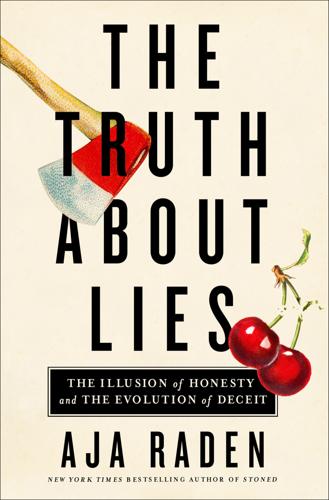
The Truth About Lies: The Illusion of Honesty and the Evolution of Deceit
by
Aja Raden
Published 10 May 2021
Every time the learner got an answer wrong, the subject was ordered to administer increasingly painful and potentially dangerous electric shocks to the learner. They started with 15 volts (“slight shock”) and progressed all the way to 450 volts (“danger: severe shock”). The point of the Milgram obedience experiment was not to electrocute volunteers to death; it was to determine if, and for how long, the subjects could be compelled to do as they were bid without any potential reward or risk of punishment for themselves.9 Would they do it even though they felt that what they were doing was wrong—and kind of sadistic? Would they continue to administer the electric shocks even when the other supposed volunteer wanted them to stop, even when the other person begged them to stop, or got scared and decided to alert them to their heart condition, or, after pleading and screaming in pain, fell suddenly, alarmingly silent?
…
Authority bias is also a primary factor in why we act in accordance with or follow orders from perceived authority figures—even when we feel like those authority figures might be in the wrong. The first experiment in authority bias was the Milgram obedience experiment, conducted by Yale University psychology professor Stanley Milgram in 1961.8 Today it is considered the gold standard in unethical psychological experimentation. In the experiment, which was falsely described to the volunteers as an experiment in “learning and memory,” pairs of participants would give and receive tests. In each pair one participant, the “subject,” quizzed a second participant, the “learner.”
…
Would they continue just because the person in charge of the experiment told them to? Depressingly, the answer is yes. Most of the participants would indeed, simply because they felt compelled by the perceived authority of the person in charge of the experiment. In fact, 65 percent of them would continue all the way to the end of the experiment, even after their partner had stopped begging for reprieve and had fallen silent. Such is the power of authority bias in human consciousness. It wasn’t until after the experiment was over that subjects were told that their partners were not only fine but acting, the electric shocks were never even real.10 Stranger still, we defer to the opinions and directives of perceived authority figures even when their authority has nothing to do with the matter at hand.

Designing for the Social Web
by
Joshua Porter
Published 18 May 2008
The Power of Authority Authority, the ability to give order and enforce obedience, is an extremely powerful social influencer. The most famous social psychology experiment involving authority is a study by Stanley Milgram done in the early 1960s, in which he, as the authority figure, ordered people to inflict electric shocks on others, even as the others cried out in pain. A remarkable number of people simply followed the orders. (The experiment was set up to make it appear as if the subjects were really being shocked; they weren’t.) Nevertheless, the results of that single study have reverberated for decades, completely reshaping how psychologists view authority. Says Milgram: The legal and philosophic aspects of obedience are of enormous importance, but they say very little about how most people behave in concrete situations.
…
Moreover, even when the destructive effects of their work become patently clear, and they are asked to carry out actions incompatible with fundamental standards of morality, relatively few people have the resources needed to resist authority.3 3 See http://en.wikipedia.org/wiki/Milgram_experiment for the fascinating details of the Milgram experiment. CHAPTER 4 DESIGN FOR SIGN-UP Authority works because it makes people pay attention. The mere fact that Seth Godin uses this software is impressive. But notice, too, that this element doesn’t overplay Godin’s involvement. It simply states that he uses the software.
…
Figure 4.21 A person reading this download statistic from AdaptiveBlue can’t help but say “Wow, this is popular” and give it a second glance. It’s a bird, it’s a plane!… it’s... a window? It might seem a silly thing to focus on numbers, but research demonstrates that people really do follow the crowd. A classic research study on social proof is one conducted by Stanley Milgram, Leonard Bickman, and Lawrence Berkowitz in the sixties in which they had people stand on a sidewalk in New York City and look up at a sixth floor window. They recorded how many people passing by stopped and looked up as well. If there were no such thing as social proof, nobody else would stop to look.
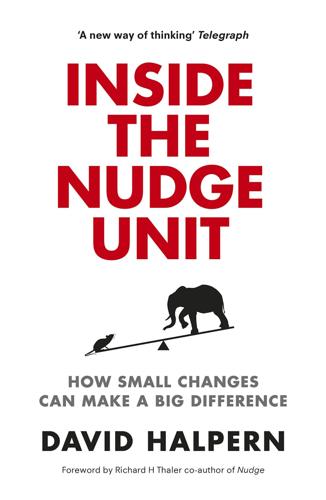
Inside the Nudge Unit: How Small Changes Can Make a Big Difference
by
David Halpern
Published 26 Aug 2015
Most people – and certainly not just psychology students – have heard of the famous ‘compliance experiments’ of Stanley Milgram, in which subjects seemed prepared to electrocute a fellow subject to death just because they were asked to do so. Milgram showed that ordinary Americans, invited to take part in a ‘learning experiment’ in a respectable university, would keep administering a steadily increasing shock to the subject that they had just met but who was now screaming and pounding on the wall in the next room for them to stop. All it seemed to take was a man in a white coat telling them that ‘the experiment required them to continue’. More than two-thirds of subjects did continue (in Milgram’s typical experiment) even though, as far as they could tell, the now silent subject had either passed out or died. 10 Milgram’s work itself built on earlier studies by Solomon Asch showing that most subjects would choose an obviously wrong answer if those before them also chose it.
…
More than two-thirds of subjects did continue (in Milgram’s typical experiment) even though, as far as they could tell, the now silent subject had either passed out or died. 10 Milgram’s work itself built on earlier studies by Solomon Asch showing that most subjects would choose an obviously wrong answer if those before them also chose it. These early results were followed by scores more studies, all showing the power of the situation to shape human behaviour. These ranged from Zimbardo’s famous Stanford Prison Cell experiment where college kids seemed to turn into sadists or compliant prisoners depending on the role they were (randomly) assigned, to Latané and Darley’s studies showing that groups of subjects would sit unmoving in rooms filling with smoke, or fail to help a fallen assistant in the next room, while subjects sitting by themselves would intervene. 11 These experiments, in the wake of the atrocities of the Second World War, shocked the world (and America in particular).
…
In particular, it felt too thin on the large variety of what those working on social cognition call ‘self-serving attributional biases’ (e.g. when things go well it’s down to us, but when they go badly its always someone else’s fault) and on important linked effects such as optimism bias. SNAP was also rather thin on some of the powerful influences documented by social psychology, such as the power of authority (cf. Milgram experiments) or reciprocity (e.g. our strong tendency to help someone who has helped us, in even the most minor way). Michael and Ivo spent several months trawling through the literature, identifying effects that had been vigorously and repeatedly demonstrated; filtering out those that there had been few replications of; and clustering those that seemed to be close relatives of each other.
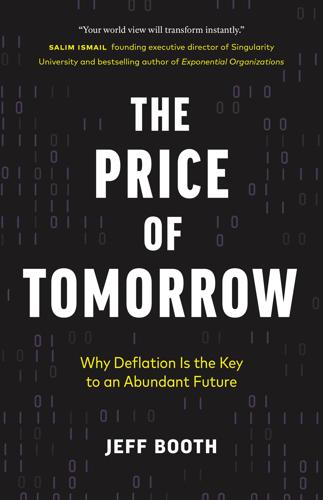
The Price of Tomorrow: Why Deflation Is the Key to an Abundant Future
by
Jeff Booth
Published 14 Jan 2020
A famous Yale study on social psychology, conducted by psychologist Stanley Milgram (1933–1984) in the 1960s, attempted to measure our obedience to authority figures.66 Milgram originally designed the experiment to try to answer the question, “Could the millions of accomplices to genocide in the concentration camps be just following orders?” His experiments showed that what we think we will do is different from what we actually will do. In the experiments, tested around the world with similar results, participants were asked to deliver higher and higher electrical shocks to learners when their answers to various questions were wrong.
…
doi=10.1037%2Fa0023779. 64. Yu-kai Chou, “Octalysis—The Complete Gamification Frame-work,” yukaichou.com/gamification-examples/octalysis-complete-gamification-framework. 65. Adolf Hitler, Mein Kampf, trans. Roberto Marco (MVR, 1939), page 139. 66. Stanley Milgram, “The Behavioural Study of Obedience,” Journal of Abnormal and Social Psychology, October 1963, pages 371–378. 67. Stanley Milgram, “The Perils of Obedience,” Harper’s Magazine, December 1973. harpers.org/archive/1973/12/the-perils-of-obedience. About the author Jeff Booth is a visionary leader who has lived at the forefront of technology change for twenty years.
…
While every participant stopped the test at least once, objecting to the screams in the other room or to the screams falling silent, all participants delivered at least 300-volt shocks, and 65 percent of participants delivered the final 450-volt shock. Milgram later wrote, “Ordinary people, simply doing their jobs, and without any particular hostility on their part, can become agents in a terrible destructive process. Moreover, even when the destructive effects of their work become patently clear, and they are asked to carry out actions incompatible with fundamental standards of morality, relatively few people have the resources needed to resist authority.”67 The studies seem to indicate that once division and consolidation of one group against another take hold, it might be very difficult to stop, even when personal moral authority deems otherwise.
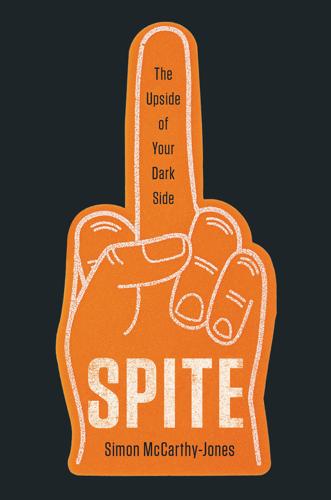
Spite: The Upside of Your Dark Side
by
Simon McCarthy-Jones
Published 12 Apr 2021
Exploring Rejection of Unfair Offers in the Ultimatum Game in Real-World Altruists,” Scientific Reports 6 (2016): 18974. 38. Brethel-Haurwitz et al., “Is Costly Punishment Altruistic?” 39. J. C. Cardenas, “Social Norms and Behavior in the Local Commons as Seen Through the Lens of Field Experiments,” Environmental and Resource Economics 48, no. 3 (2011): 451–485. 40. Wikipedia, s.v. “Milgram Experiment,” accessed August 5, 2020, https://en.wikipedia.org/w/index.php?title=Milgram_experiment&oldid=971251066. 41. Brethel-Haurwitz et al., “Is Costly Punishment Altruistic?” 42. E. Fehr and K. M. Schmidt, “A Theory of Fairness, Competition and Cooperation,” Quarterly Journal of Economics 114, no. 3 (1999): 817–868. 43.
…
Berlin, Four Essays on Liberty (Oxford, UK: Oxford University Press, 1969). 2. S. Pinker, Enlightenment Now: The Case for Reason, Science, Humanism, and Progress (New York: Penguin, 2018), 8. 3. Wikipedia, s.v. “Milgram Experiment,” accessed August 5, 2020, https://en.wikipedia.org/w/index.php?title=Milgram_experiment&oldid=971251066. 4. To get a sense of this, you can see the illusionist Derren Brown’s re-creation of the experiment here: www.youtube.com/watch?v=Xxq4QtK3j0Y. 5. J. M. Burger, Z. M. Girgis, and C. C. Manning, “In Their Own Words: Explaining Obedience to Authority Through an Examination of Participants’ Comments,” Social Psychological and Personality Science 2, no. 5 (2011): 460–466. 6.
…
After dismissing faith, authority, and gut feelings as “generators of delusions,” Pinker argues that the use of reason when making decisions is “non-negotiable.” Unfortunately, trying to tell people they must do something can backfire. In the early 1960s, the Yale psychologist Stanley Milgram undertook a series of studies into obedience. A scientist instructed volunteers to give increasingly severe electric shocks to a fellow volunteer in another room, ostensibly to help them learn.3 Sixty-five percent of volunteers were still administering shocks when they reached the maximum possible 450-volt shock.4 Yet a 2009 partial replication of this study found something strange.
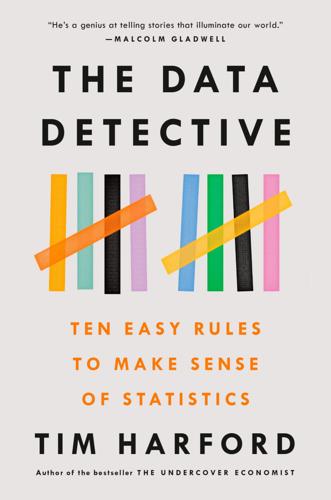
The Data Detective: Ten Easy Rules to Make Sense of Statistics
by
Tim Harford
Published 2 Feb 2021
So, again, you could say it’s a case of no harm, no foul: Asch might have seen even stronger evidence of conformity had he looked beyond young American males.3 Still, gender does matter, and Asch could have studied its effects, or at least used mixed-gender groups. But it evidently didn’t occur to him, and it’s discomfiting how few subsequent reports on his experiment seem to care. If Solomon Asch was the only researcher to have done this, we could wave it away as a historical curiosity. But Asch isn’t alone; of course he isn’t. His student Stanley Milgram conducted a notorious set of electric shock experiments at Yale University in the 1960s. Here’s how I once described his experiments in the Financial Times:4 [Milgram] recruited unsuspecting members of the public to participate in a “study of memory.” On showing up at the laboratory, they drew lots with another participant to see who would be “teacher” and who “learner.”
…
See health and medical data Medicare, 199 Meehl, Paul, 167 Mellers, Barbara, 252 memes, 42 memory and criminal sentencing, 168 and data visualization, 217–18 and forecasting failures, 248–49, 251, 254 and Milgram experiment, 138 and “precognition” study, 111 and scale of numerical comparisons, 95 and value of imagery, 64 Merkel, Angela, 191 Messy (Harford), 57–58, 203 Metropolitan Police (London), 199 microcredit, 61 Microsoft, 175 Milgram experiment, 138–39 Milkmaid, The (Vermeer), 21, 31 Millikan, Robert, 244–47, 260 Mills, Wilbur, 186 mindfulness meditation, 134 miscarriages, 66 misconceptions of statistics, 55–56 misinformation, 3, 26, 41, 223.
…
The 2015 version, also face-to-face, had a response rate of just over 55 percent; in almost half of the homes approached, either nobody opened the door or somebody opened the door but refused to answer the surveyor’s questions.14 Pollsters try to correct for this, but there is no foolproof method of doing so. The missing responses are examples of what the statistician David Hand calls “dark data”: we know the people are out there and we know that they have opinions, but we can only guess at what those opinions are. We can ignore dark data, as Asch and Milgram ignored the question of how women would respond in their experiments, or we can try desperately to shine a light on what’s missing. But we can never entirely solve the problem. In the UK general election of 2015, opinion polls suggested that David Cameron, the incumbent prime minister, was unlikely to win enough votes to stay in power.
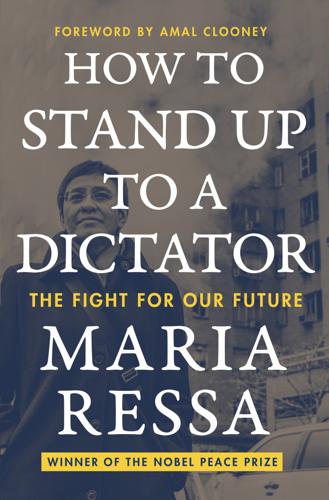
How to Stand Up to a Dictator
by
Maria Ressa
Published 19 Oct 2022
Left alone, those same subjects answered correctly nearly 100 percent of the time. The Asch experiment, however, had a silver lining: one-fourth, or 25 percent, of people were independent; they never conformed. 14.In Milgram’s study, the test subject is the person given the power to administer an electric shock in an experiment that is supposed to help others learn. When the “learner,” hidden by a screen, fails to memorize word pairs fast enough, the “helper,” or test subject, applies an electric shock, increasing the voltage with each wrong answer. Milgram found that most people follow instructions to give what would have been potentially lethal shocks despite the screams and pleas of the “learner.” 15.In his experiment, Stanford University students were asked to become either a prisoner or a guard in an experiment that was supposed to last two weeks.
…
To study radicalization, I started with groupthink and the experiments of the psychologist Solomon Asch in the 1950s, in which, when confronted with simple questions in twelve critical trials, 75 percent caved in to the pressure of the group rather than sticking to their own conclusions.13 His experiments showed the power of peer pressure and how being part of any group changes each of us. To understand terrorists’ reaction to authority, I turned to the famous experiments of Stanley Milgram (remember “six degrees of separation”?) and Philip Zimbardo’s prison experiment. Milgram found that most people follow instructions, even when told to administer potentially lethal shocks to other people.14 Zimbardo’s study has been challenged, but he stands by his findings: that people lose their individuality and take on the characteristics of the roles they’re given.15 In other words, authority can give us the freedom to be our worst selves.
…
I focused our resources on two big goals: spreading empowerment and hope; and fostering debate and engagement. My ideas for the first goal built on what I had learned while studying terrorism and mob violence in Indonesia. I relied on ideas from social network theory, the experiments of the psychologists Solomon Asch, Stanley Milgram, and Philip Zimbardo, and the Three Degrees of Influence idea, that everything we say or do impacts our friends, our friends’ friends, and even our friends’ friends’ friends. Our network’s focus group discussions showed us that Filipino youths were dissatisfied and disillusioned with our country’s political processes.
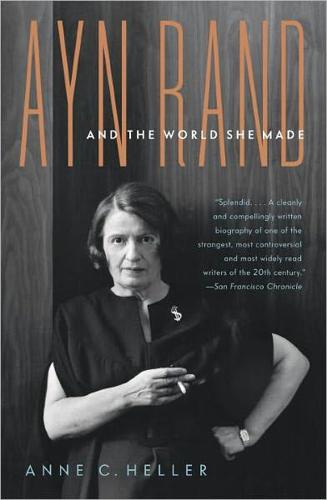
Ayn Rand and the World She Made
by
Anne C. Heller
Published 27 Oct 2009
left Los Angeles in their secondhand Nash: Letter to Jean Wick, November 24, 1934 (LOAR, p. 20). in Virginia the car hit a pothole: TPOAR, p. 119. She had already begun to make mental notes: According to JOAR, p. 77, AR made her first actual notes for TF on December 4, 1935. Shoshana Milgram, who has access to the ARI Archives, claims that AR was already working on an outline when she traveled from California to New York (Shoshana Milgram, “The Hero in the Soul Manifested in the World,” a lecture presented at the ARI’s Centenary Conference, New York, April 23, 2005). The car was wrecked: “The Hero in the Soul, Manifested in the World.” She also got on well: Letter to Mary Inloes, December 10, 1934 (LOAR, pp. 20–21).
…
By then, he was a mere employee of the Shubert Organization, working for $150 a week (“Ex-millionaire Reported Broke,” Los Angeles Times, February 8, 1936, p. 2). removing elements of the motivation of her characters: Unpublished letter cited in Shoshana Milgram’s “Ayn Rand’s Unique and Enduring Contributions to Literature,” lecture, ARI Centenary Conference, July 7, 2005, San Diego. According to Milgram, AR wrote about what was taken out of her play and the fact that she found the first “tier” unsatisfactory as a result. she reportedly told him: “The Hero in the Soul Manifested in the World.” Hayes and Weitzenkorn: “Second Arbitration on Play Royalties,” NYT, January 17, 1936, p. 15.
…
only novelist she ever acknowledged: Ayn Rand, lecture on “The Art of Fiction,” January—June 1958, New York, private notes courtesy of John Allen. Anna would read aloud: Ayn Rand, “Victor Hugo Allows a Peek at Grandeur,” Los Angeles Times, September 16, 1962, p. 12. The first one of his novels she read: WIAR, p. 158. she retained traces of the plotting techniques: For an excellent discussion of Hugo’s influence on AR, see Shoshana Milgram’s “We the Living and Victor Hugo” in EOWTL, pp. 223–56. “greatest novelist in world literature”: Ayn Rand, introduction to Ninety-Three, The Romantic Manifesto, p. 154. spent in search of rationed millet, peas, and cooking oil: 100 Voices, NR, p. 14; WTL, p. xv. forced to walk all the way from Leningrad: JH, “Conversations with Ayn Rand,” p. 32; details provided in a telephone interview with author, December 13, 2004.
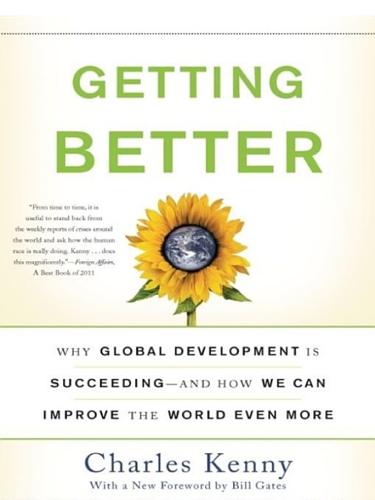
Getting Better: Why Global Development Is Succeeding--And How We Can Improve the World Even More
by
Charles Kenny
Published 31 Jan 2011
Once the transition to democracy is made to look possible by (peaceful) neighboring example, it often spreads. THE GROWING UNACCEPTABILITY OF VIOLENCE In 1961, Stanley Milgram of Yale University began a series of experiments to test how far people would be willing to go in causing pain to a fellow human being under the “right” circumstances. Volunteers were apparently divided at random into “teachers” and “learners.” The teachers were instructed by a lab-coated researcher to give the learners an electric shock for each wrong answer on a test they administered—although one that would cause “no permanent tissue damage.” For each wrong answer, the shock would get stronger at 15 volts at a time.
…
Teachers would continue despite showing obvious signs of distress themselves—sweating, stuttering, requests to the researcher to allow the experiment to stop. The will to respect authority was too strong. But results changed dramatically if “learner” and researcher swapped roles. Whatever the protestations of the learners regarding the need to complete the experiment, no “teacher” would continue zapping a man in a white coat if he told them to stop. And if there were two researchers who argued over continuing the shocks, “teachers” universally stopped the experiment. Absent clear cues from authority to do the wrong thing, the experimental subjects behaved humanely. Milgram’s study was prompted by the trial of the Nazi war criminal Adolf Eichmann in an attempt to understand how so many people could have committed such obscene acts under his command.
…
Milgram’s study was prompted by the trial of the Nazi war criminal Adolf Eichmann in an attempt to understand how so many people could have committed such obscene acts under his command. At least in part, the answer appears to be that people respond to authority and social cues even when those cues are morally repellent. As well as suggesting something about how widely the responsibility for acts of torture should be allocated, the Milgram experiment suggests the importance of institutional settings, and of social norms, to levels of violence and personal attitudes regarding acceptable behavior toward others. The good news is that institutional settings and social norms in most of the world are increasingly set against the acceptance of violence.
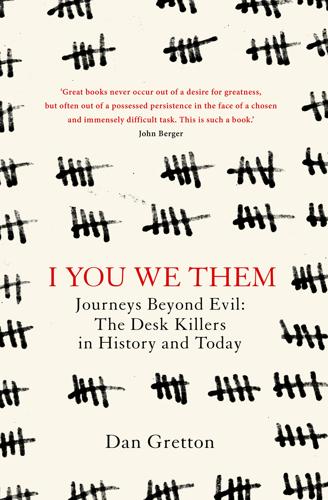
I You We Them
by
Dan Gretton
If the learner got the answers wrong, the teacher was told to administer an electric shock; these increased in level of severity, until the final shock could be given at the ‘450 volts’ level (supposedly a dangerous, possibly fatal, degree of shock). If the teacher hesitated to enforce the electric shock at any stage, they were repeatedly told by the scientific ‘authority’ figure that ‘the experiment requires that you continue’, ‘it is absolutely essential that you continue’. Before Milgram conducted the first research he asked his psychology students at Yale to predict what they thought the results of the experiment would be. The students thought only 1.2 per cent of participants would administer the maximum electric shock.
…
Arad, Krakowski and Spector. 8 Sir Timothy Garden, article in Guardian, 18 March 2003, ‘Bigger, better bangs: new weapons on trial’ 9 Description of the capabilities of the MQ-9 Reaper drone quoted in Drones – the Physical and Psychological Implications of a Global Theatre of War, report by Medact, 2012. 10 Stephen Sackur’s interviews with drone operators in Nevada was for the programme Drone Wars, broadcast on BBC Radio 4 on 25 September 2011. 11 Speer on Hitler’s attitude to violence, ‘As a rule he avoided not only physical, but indeed visual contact, with violence …’ quoted in Albert Speer: His Battle With Truth by Gitta Sereny. 12 ‘With the killing of Jews I had nothing to do …’ and ‘During the trial, he showed unmistakable signs of sincere outrage …’ Both quotes relating to Eichmann taken from Arendt, Eichmann in Jerusalem. 13 ‘Stangl, insisiting that he had never shot into a crowd of people …’ from Sereny, Into That Darkness. 14 ‘Eichmann said … after much delay and a great deal of discussion…’ Wisliceny’s testimony is taken from Interrogations: The Nazi Elite in Allied Hands, 1945 by Richard Overy – ‘Document 11 The Führer Order [Dieter Wisliceny]’. 15 Ohlendorf’s testimony at his trial is taken from The Holocaust: An Encyclopedia and Document Collection, ed. Paul R. Bartrop, and Michael Dickerman. 16 Milgram’s experiment, ‘Obedience to Authority: An Experimental View’, has understandably received an enormous amount of attention ever since the results were first published in 1963. However, in recent years criticisms regarding the ethics of how the experiment was conducted have increased, particularly in regard to the amount of information given to the volunteers before the experiment, and the stress that some of them experienced being pressurised to administer what they believed were electric shocks. My own view regarding such criticisms is that the value of the research gained was so important that the methodology of the experiments was justified.
…
* At Yale University in 1961, Stanley Milgram, directly influenced by the Eichmann trial then taking place in Israel, began his famous research study ‘Obedience to Authority: An Experimental View’.fn7 In 1963, Milgram published ‘The Behavioral Study of Obedience’ in the Journal of Abnormal and Social Psychology. This stunned the world by finding a capacity for ordinary people to obey scientific ‘authority’ figures by administering (what they believed to be) severe electric shocks to victims they couldn’t see – in reality, actors in a neighbouring room simulating agonised screams of pain. The volunteers for this experiment were recruited from a broad range of social backgrounds, and paid for their time; they were told by the ‘scientific researcher’ (suitably dressed in a white coat) that they were helping in a ‘learning experiment’ that concerned the ‘study of memory’.

Radical Cities: Across Latin America in Search of a New Architecture
by
Justin McGuirk
Published 15 Feb 2014
A fellow philosophical pragmatist, Mockus would take very seriously Rorty’s idea that you can’t fully understand the meaning of what you say or do until you know all the practical consequences that result from it (like when you drop your trousers in public, for instance). Another was Paul Feyerabend, who advocated an anarchist theory of knowledge. Yet another was Stanley Milgram, who conducted a controversial experiment in the 1960s that involved making participants give people electric shocks, to prove that humans are essentially obedient. This blend of pragmatism, anarchist method and obedience theory would influence how he approached the problems of the city. But first these ideas were put into practice at the university. Perhaps as a result of having struggled to write his thesis, Mockus developed an alternative language to the written word, a language of actions.
…
His instinct was that being shamed by a fellow citizen was a greater disincentive than being punished by a corrupt traffic cop. Self-regulation by citizens was a new kind of authority, at least for Bogotá. As Mockus once pointed out, regulating behaviour is innate in humans, just as a baby regulates the behaviour of a parent by crying. Stanley Milgram’s experiments with electric shocks, which Mockus had studied, may have proved that human beings are essentially obedient – but that finding can lead in starkly divergent directions. It can explain the horrors of the Holocaust or, in Bogotá’s case, the roots of a civic culture. In one of the many talks by Mockus that are online, a member of the audience likens his methods to those of an advertising agency or, more critically, the brainwashing of a dictator.
…
See Complexo da Maré (favelas) Marull, Pereyra & Ruiz, 41 Mazoni, Juana, 75–6 Mazzanti, Giancarlo, 234, 248 Medellín, Colombia, 20, 24, 208, 231–58, 268, 283, 284; cable car system, 24–5, 105, 132, 163, 166, 240, 246–7, 251 Menem, Carlos, 57 Menéndez, Mike, 163 Metabolists, 10, 71, 73, 77–8 Metrocable de Caracas, 162–70 passim, 247 Metrocable de Medellín, 24–5, 105, 132, 163, 166, 240, 246–7, 251 Mexico, 98, 266, 273n. See also Mexico City; Tijuana Mexico City, 1–8 passim, 16, 131, 276 Milgram, Stanley, 210, 215 Minha Casa Minha Vida (My House My Life), 126–8, 131 Miraflores Palace, Caracas, 154–5 Mockus, Antanas, 19–20, 24, 207–30 passim, 243, 275, 284 ‘La Mona’ (Muñoz), 260 Monterrey, Mexico, 98 Morales, Evo, 53, 59 Morales, Iván, 189 Morar Carioca, 103, 120, 125–6, 128 Moravia, Medellín, 240, 251 Morro da Providencia (favela), 104–6, 133, 135 Moses, Robert, 140 Muñoz García, Armando, 260 Murillo Bejarano, Diego.
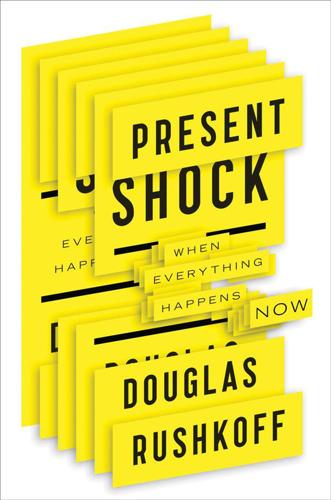
Present Shock: When Everything Happens Now
by
Douglas Rushkoff
Published 21 Mar 2013
It calls to mind the questions posed back in the 1960s by Yale psychologist Stanley Milgram, who had been fascinated by the impact of spectacle and authority on soldiers’ obedience in Nazi Germany. Milgram wanted to know if German war criminals could have been following orders, as they claimed, and not truly complicit in the death camp atrocities. At the very least, he was hoping to discover that Americans would not respond the same way under similar circumstances. He set up the now infamous experiment in which each subject was told by men in white lab coats to deliver increasingly intense electric shocks to a victim who screamed in pain, complained of a heart condition, and begged for the experiment to be halted.
…
He set up the now infamous experiment in which each subject was told by men in white lab coats to deliver increasingly intense electric shocks to a victim who screamed in pain, complained of a heart condition, and begged for the experiment to be halted. More than half of the subjects carried out the orders anyway, slowly increasing the electric shocks to what they believed were lethal voltages. On a structural level—and maybe also an emotional one—reality TV mirrors much of this same dynamic. No, we’re not literally shocking people, but we are enjoying the humiliation and degradation of the participants, from the safe distance of an electronic medium. The question is not how much deadly voltage can we apply, but how shamefully low can we go? Besides, the producers bear the real brunt of responsibility—just as the men in lab coats did in the research experiments.* And while these sorts of studies were declared unethical by the American Psychological Association in 1973, reality TV does seem to have picked up the thread—less for research purposes than as a last-ditch attempt to generate spectacle without narrative.
…
See drugs; healthcare “meet me” room (New York City), 180 Memento (movie), 31–32 memory: apocalypto and, 250, 255, 259–60; in computers, 140n; digiphrenia and, 82, 105, 122–23, 127; and digital memory as never forgetting, 155–57; fractalnoia and, 222, 238–39, 240; Michalski’s work on, 238–39; new “now” and, 4–5; overwinding and, 136, 140, 142, 155–57, 181–89; time binding and, 140. See also MyLifeBits; RAM; TheBrain Méro, László, 221–22 Michalski, Jerry, 237–39, 240 microchips, 88, 93, 122–23, 263 microphone screech analogy, 208, 210 Microsoft Corporation, 156, 239; MyLifeBits project at, 239–41 Milgram, Stanley, 37 millenium, 3, 10–11, 17 “Mind” (Bateson cybernetic system), 225–26 MMORPGs (multiplayer online role-playing games), 62–63 Mob Wives (TV show), 39, 149 money/currency: apocalypto and, 258; behavioral finance and, 174–75; cashless societies and, 183–84; centrally-issued, 171, 173; debt and, 5, 173–80; interest-bearing, 3, 171–73, 174, 175–76, 177; kinds of, 145–49; new “now” and, 3, 5; overwinding and, 145–49, 170–80, 183, 184–85, 194; time as, 135, 170–80 Moore, Gordon E., 9 Moore’s Law, 9 morality, 37–38, 250, 259, 260.

A Bit of a Stretch: The Diaries of a Prisoner
by
Chris Atkins
Published 6 Feb 2020
I try to point out that it’s only a tin of tuna, but he just starts banging on about the failure of Keynesian economics. 14 October My psychology studies are completely engrossing, and are providing unexpected insights into the prison experience. I’m currently studying Milgram’s classic 1963 experiment into obedience. Milgram recruited 40 volunteers and told them to deliver increasingly severe electric shocks to someone in the next room. What they didn’t know was that the person screaming next door was only an actor, who never actually felt any pain. Over half the participants administered potentially lethal voltages simply because they were instructed to do so by a man in a white coat. The experiment revealed how environment can powerfully affect behaviour, and that most people will mindlessly follow authority even if it causes great harm.3 From where I’m sitting, it explains why certain screws are unnecessarily vile to prisoners on an hourly basis.
…
‘Sorry, miss, can I ask why you’re taking him there?’ ‘We’re clearing all remand prisoners off Trinity,’ she snaps. I struggle to keep my temper. ‘Trinity is full of remand prisoners that you’re not moving. This kid is going to get eaten alive on E Wing.’ ‘I’m just following orders.’ My mind is immediately drawn to the Milgram obedience experiment, and for a split second I forget that I’m a prisoner. ‘If your orders are to get Wandsworth’s suicide rate up, then this is the best way to go about it.’ Les overhears our confrontation and swoops in. He still sees himself as the King of Listening, and has a long-standing crush on Miss Harley.
…
Prison not only robs inmates of control, but also denies them the illusion of agency. They are constantly reminded that they have no impact on anything, which has long been cited as a cause of mental illness. In 1971, the experimental psychologist Jay Weiss did a series of experiments on rats. He first trained them to avoid electric shocks by pressing a lever. He then changed the system so that they could no longer control the shocks. The rats initially became hyper vigilant, pressing the lever wildly and trying to control the shock even when it wasn’t being delivered. The image of rats pressing inactive levers is chillingly reminiscent of rows of lights outside cells flashing as call bells routinely go unanswered.

The Smart Wife: Why Siri, Alexa, and Other Smart Home Devices Need a Feminist Reboot
by
Yolande Strengers
and
Jenny Kennedy
Published 14 Apr 2020
Human interface and social computing scholars Christoph Bartneck and Jun Hu replicated Stanley Milgram’s classic psychology obedience experiment, in which participants are asked to administer electric shocks to another person in increasing intensities. The electric shock is simulated, so no one actually gets hurt. But the participant believes that the shock is real. The experiment shows how much people are willing to hurt another person under their control.62 In Bartneck and Hu’s experiment, the participants were told to deliver electric shocks to robots instead of humans. Unsurprisingly, people were less concerned about hurting robots than harming humans.
…
Unsurprisingly, people were less concerned about hurting robots than harming humans. The participants electrocuted the robots to the maximum level 100 percent of the time, whereas in the original Milgram study, the participants electrocuted the fictional “real” person to the maximum level 65 percent of the time. Bartneck and Hu then conducted a second experiment in which the participants were asked to kill the robot. When the robot had performed efficiently and correctly, the participants hesitated before destroying it with a hammer, and in some cases refused altogether, suggesting that there are still some morals and ethics that apply in these situations.63 The study (and others like it) unsurprisingly demonstrates that most people are willing to subject robots to higher levels of abuse than they would humans.
…
Julia Carrie Wong, “Rage against the Machine: Self-Driving Cars Attacked by Angry Californians,” Guardian, March 6, 2018, https://www.theguardian.com/technology/2018/mar/06/california-self-driving-cars-attacked. 61. “Rage against the Machine,” Sydney Morning Herald, July 26, 2003, https://www.smh.com.au/technology/rage-against-the-machine-20030726-gdh5sc.html. 62. Stanley Milgram, “Behavioral Study of Obedience,” Journal of Abnormal and Social Psychology 67, no. 4 (October 1963): 371–378; Christoph Bartneck and Jun Hu, “Exploring the Abuse of Robots,” Interaction Studies 9, no. 3 (2008): 415–433. 63. Bartneck and Hu, “Exploring the Abuse of Robots.” 64. Bartneck and Hu, “Exploring the Abuse of Robots.” 65.
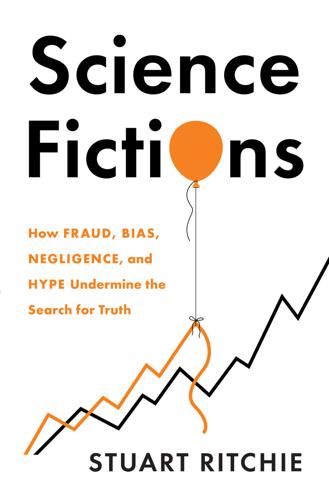
Science Fictions: How Fraud, Bias, Negligence, and Hype Undermine the Search for Truth
by
Stuart Ritchie
Published 20 Jul 2020
Perhaps the most famous psychology study of all time is the 1971 Stanford Prison Experiment, where psychologist Philip Zimbardo split a group of young men into mock ‘guards’ and ‘prisoners’, and had them stay for a week in a simulated prison in the basement of the Stanford University psychology department. Disturbingly quickly, according to Zimbardo, the ‘guards’ began to punish the ‘prisoners’, abusing them so sadistically that Zimbardo had to end the experiment early.20 Along with Stanley Milgram’s 1960s studies of obedience, which found many participants willing to administer intense electric shocks to hapless ‘learners’ (the shocks and the learners were both fake, but the participants didn’t know it), Zimbardo’s experiment is held up as one of the prime pieces of evidence for the power of the situation over human behaviour.21 Put a good person into a bad situation, the story goes, and things might get very bad, very fast.
…
Philip Zimbardo, The Lucifer Effect: How Good People Turn Evil (London: Rider, 2007). 21. Stanley Milgram, ‘Behavioral Study of Obedience’, Journal of Abnormal and Social Psychology 67, no. 4 (1963): pp. 371–78; https://doi.org/10.1037/h0040525. The Milgram experiments have also seen their fair share of criticism – for evidence that the more the participants believed they were really shocking the ‘learners’, the less likely they were to give more powerful shocks, see e.g. Gina Perry et al., ‘Credibility and Incredulity in Milgram’s Obedience Experiments: A Reanalysis of an Unpublished Test’, Social Psychology Quarterly, 22 Aug. 2019; https://doi.org/10.1177/0190272519861952 22.
…
ABC News abortion Abu Ghraib prison abuse (2003) accidental discoveries Acta Crystallographica Section E acupuncture Afghan hounds Agence France-Presse AIDS (acquired immune deficiency syndrome) Alchemist, The (Bega) Alexander, Benita Alexander, Scott algorithms allergies Alzheimer, Aloysius Alzheimer’s Disease Amazon American Journal of Potato Research Amgen amygdala amyloid cascade hypothesis anaesthesia awareness Fujii affair (2012) outcome switching Anaesthesia & Analgesia animal studies antidepressants antipsychotics archaeology Arnold, Frances arsenic artificial tracheas asthma austerity Australia Austria autism aviation Babbage, Charles Bacon, Francis bacteria Bargh, John Bayer Bayes, Thomas Bayesian statistics BDNF gene Before You Know It (Bargh) Bega, Cornelis Begley, Sharon Belgium Bell Labs Bem, Daryl benzodiazepines bias blinding and conflict of interest De Vries’ study (2018) funding and groupthink and meaning well bias Morton’s skull studies p-hacking politics and publication bias randomisation and sexism and Bik, Elisabeth Bill & Melinda Gates Foundation Biomaterials biology amyloid cascade hypothesis Bik’s fake images study (2016) Boldt affair (2010) cell lines China, misconduct in Hwang affair (2005–6) Macchiarini affair (2015–16) meta-scientific research microbiome studies Morton’s skull studies Obokata affair (2014) outcome switching preprints publication bias replication crisis Reuben affair (2009) spin and statistical power and Summerlin affair (1974) Wakefield affair (1998–2010) biomedical papers bird flu bispectral index monitor black holes Black Lives Matter blinding blotting BMJ, The Boldt, Joachim books Borges, Jorge Luis Boulez, Pierre Boyle, Robert brain imaging Brass Eye vii British Medical Journal Brock, Jon bronchoscopy Broockman, David Brown, Nick Bush, George Walker business studies BuzzFeed News California Walnut Commission California wildfires (2017) Canada cancer cell lines collaborative projects faecal transplants food and publication bias and replication crisis and sleep and spin and candidate genes carbon-based transistors Cardiff University cardiovascular disease Carlisle, John Carlsmith, James Carney, Dana cash-for-publication schemes cataracts Cell cell lines Cell Transplantation Center for Open Science CERN (Conseil Européen pour la Recherche Nucléaire) chi-squared tests childbirth China cash-for-publication schemes cell line mix-ups in Great Famine (1959–1961) misconduct cases in randomisation fraud in chrysalis effect Churchill, Winston churnalism Cifu, Adam citations clickbait climate change cloning Clostridium difficile cochlear implants Cochrane Collaboration coercive citation coffee cognitive dissonance cognitive psychology cognitive tests coin flipping Colbert Report, The Cold War collaborative projects colonic irrigation communality COMPare Trials COMT gene confidence interval conflict of interest Conservative Party conspicuous consumption Cooperative Campaign Analysis Project (CCAP) ‘Coping with Chaos’ (Stapel) Cornell University coronavirus (COVID-19) Corps of Engineers correlation versus causation corticosteroids Cotton, Charles Caleb creationism Crowe, Russell Csiszar, Alex Cuddy, Amy CV (curriculum vitae) cyber-bullying cystic fibrosis Daily Mail Daily Telegraph Darwin Memorial, The’ (Huxley) Darwin, Charles Das, Dipak datasets fraudulent Observational publication bias Davies, Phil Dawkins, Richard De Niro, Robert De Vries, Ymkje Anna debt-to-GDP ratio Deer, Brian democratic peace theory Denmark Department of Agriculture, US depression desk rejections Deutsche Bank disabilities discontinuous mind disinterestedness DNA (deoxyribonucleic acid) domestication syndrome doveryai, no proveryai Duarte, José Duke University duloxetine Dutch Golden Age Dutch Organisation for Scientific Research Dweck, Carol economics austerity preprints statistical power and effect size Einstein, Albert Elmo Elsevier engineering epigenetics euthanasia evolutionary biology exaggeration exercise Experiment, The exploratory analyses extrasensory perception faecal transplants false-positive errors Fanelli, Daniele Festinger, Leon file-drawer problem financial crisis (2007–8) Fine, Cordelia Fisher, Ronald 5 sigma evidence 5-HT2a gene 5-HTTLPR gene fixed mindset Food and Drug Administration (FDA) Food Frequency Questionnaires food psychology Formosus, Pope foxes France Francis, Pope Franco, Annie fraud images investigation of motives for numbers Open Science and peer review randomisation Freedom of Information Acts French, Chris Fryer, Roland Fujii, Yoshitaka funding bias and fraud and hype and long-term funding perverse incentive and replication crisis and statistical power and taxpayer money funnel plots Future of Science, The (Nielsen) gay marriage Gelman, Andrew genetically modified crops genetics autocorrect errors candidate genes collaborative projects gene therapy genome-wide association studies (GWASs) hype in salami-slicing in Geneva, Switzerland geoscience Germany Getty Center GFAJ-1 Giner-Sorolla, Roger Glasgow Effect Goldacre, Ben Goldsmiths, University of London Golgi Apparatus good bacteria Good Morning America good scientific citizenship Goodhart’s Law Goodstein, David Google Scholar Górecki, Henryk Gould, Stephen Jay Gran Sasso, Italy grants, see funding Granularity-Related Inconsistency of Means (GRIM) grapes Great Recession (2007–9) Great Red Spot of Jupiter Green, Donald Gross Domestic Product (GDP) Gross, Charles ground-breaking results groupthink ‘Growth in a Time of Debt’ (Reinhart and Rogoff) growth mindset Guzey, Alexey gynaecology h-index H5N1 Haldane, John Burdon Sanderson Hankins, Matthew HARKing Harris, Sidney Harvard University headache pills heart attacks heart disease Heathers, James height Heilongjiang University Heino, Matti Henry IV (Shakespeare) Higgs Boson Hirsch, Jorge HIV (human immunodeficiency viruses) homosexuality Hong Kong Hooke, Robert Hossenfelder, Sabine Houston, Texas Hume, David Huxley, Thomas Henry Hwang, Woo-Suk hydroxyethyl starch hype arsenic life affair (2010) books correlation versus causation cross-species leap language and microbiome studies news stories nutrition and press releases spin unwarranted advice hypotheses Ig Nobel Prize images, fraudulent impact factor India insomnia International Journal of Advanced Computer Technology Ioannidis, John IQ tests Iraq War (2003–11) Italy Japan John, Elton Journal of Cognitive Education and Psychology Journal of Environmental Quality Journal of Negative Results in Biomedicine Journal of Personality and Social Psychology journals conflict of interest disclosure fraud and hype and impact factor language in mega-journals negligence and Open Science and peer review, see peer review predatory journals preprints publication bias rent-seeking replication studies retraction salami slicing subscription fees Jupiter Kahneman, Daniel Kalla, Joshua Karolinska Institute Krasnodar, Russia Krugman, Paul Lacon, or Many Things in Few Words (Cotton) LaCour, Michael Lancet Fine’s ‘feminist science’ article (2018) Macchiarini affair (2015–16) Wakefield affair (1998–2010) language Large Hadron Collider Le Texier, Thibault Lewis, Jason Lexington Herald-Leader Leyser, Ottoline Lilienfeld, Scott Loken, Eric Lost in Math (Hossenfelder) low-fat diet low-powered studies Lumley, Thomas Lysenko, Trofim Macbeth (Shakespeare) Macbeth effect Macchiarini, Paolo MacDonald, Norman machine learning Macleod, Malcolm Macroeconomics major depressive disorder Malaysia Mao Zedong MARCH1 Marcus, Adam marine biology Markowetz, Florian Matthew Effect Maxims and Moral Reflections (MacDonald) McCartney, Gerry McCloskey, Deirdre McElreath, Richard meaning well bias Measles, Mumps & Rubella (MMR) measurement errors Medawar, Peter medical research amyloid cascade hypothesis Boldt affair (2010) cell lines China, misconduct in collaborative projects Fujii affair (2012) Hwang affair (2005–6) Macchiarini affair (2015–16) meta-scientific research Obokata affair (2014) outcome switching pharmaceutical companies preprints pre-registration publication bias replication crisis Reuben affair (2009) spin and statistical power and Summerlin affair (1974) Wakefield affair (1998–2010) medical reversal Medical Science Monitor Mediterranean Diet Merton, Robert Mertonian Norms communality disinterestedness organised scepticism universalism meta-science Boldt affair (2010) chrysalis effect De Vries’ study (2018) Fanelli’s study (2010) Ioannidis’ article (2005) Macleod’s studies mindset studies (2018) saturated fats studies spin and stereotype threat studies mice microbiome Microsoft Excel Milgram, Stanley Mill, John Stuart Mindset (Dweck) mindset concept Mismeasure of Man, The (Gould) Modi, Narendra money priming Mono Lake, California Moon, Hyung-In Morton, Samuel Motyl, Matt multiverse analysis nanotechnology National Academy of Sciences National Aeronautics and Space Administration (NASA) National Institutes of Health National Science Foundation Nature cash-for-publication and cell line editorial (1981) impact factor language in Obokata affair (2014) Open Access and open letter on statistical significance (2019) replication research Schön affair (2002) Stapel affair (2011) Nature Neuroscience Nature Reviews Cancer NBC negligence cell line mix-ups numerical errors statistical power typos Netflix Netherlands replication studies in Stapel’s racism studies statcheck research neuroscience amyloid cascade hypothesis collaborative projects Macleod’s animal research studies replication crisis sexism and statistical significance and Walker’s sleep studies neutrinos New England Journal of Medicine New York Times New Zealand news media Newton, Isaac Nielsen, Michael Nimoy, Leonard No Country for Old Men Nobel Prize northern blots Nosek, Brian Novella, Steven novelty Novum Organum (Bacon) Nuijten, Michèle nullius in verba, numerical errors nutrition Obama, Barack obesity Obokata, Haruko observational datasets obstetrics ocean acidification oesophagus ‘Of Essay-Writing’ (Hume) Office for Research Integrity, US Oldenburg, Henry Open Access Open Science OPERA experiment (2011) Oransky, Ivan Orben, Amy Organic Syntheses organised scepticism Osborne, George outcome-switching overfitting Oxford University p-value/hacking alternatives to Fine and low-powered studies and microbiome studies and nutritional studies and Open Science and outcome-switching perverse incentive and pre-registration and screen time studies and spin and statcheck and papers abstracts citations growth rates h-index introductions method sections results sections salami slicing self-plagiarism university ranks and Parkinson’s disease particle-accelerator experiments peanut allergies peer review coercive citation fraudulent groupthink and LaCour affair (2014–15) Preprints productivity incentives and randomisation and toxoplasma gondii scandal (1961) volunteer Wakefield affair (1998–2010) penicillin Peoria, Illinois Perspectives in Psychological Science perverse incentive cash for publications competition CVs and evolutionary analogy funding impact factor predatory journals salami slicing self-plagiarism Pett, Joel pharmaceutical companies PhDs Philosophical Transactions phlogiston phosphorus Photoshop Physical Review physics placebos plagiarism Plan S Planck, Max plane crashes PLOS ONE pluripotency Poehlman, Eric politics polygenes polyunsaturated fatty acids Popper, Karl populism pornography positive feedback loops positive versus null results, see publication bias post-traumatic stress disorder (PTSD) power posing Prasad, Vinay pre-registration preclinical studies predatory journals preprints Presence (Cuddy) press releases Prevención con Dieta Mediterránea (PREDIMED) priming Princeton University Private Eye probiotics Proceedings of the National Academy of Sciences prosthetic limbs Przybylski, Andrew psychic precognition Psychological Medicine psychology Bargh’s priming study (1996) Bem’s precognition studies books Carney and Cuddy’s power posing studies collaborative projects data sharing study (2006) Dweck’s mindset concept Festinger and Carlsmith’s cognitive dissonance studies Kahneman’s priming studies LaCour’s gay marriage experiment politics and preprints publication bias in Shanks’ priming studies Stanford Prison Experiment Stapel’s racism studies statistical power and Wansink’s food studies publication bias publish or perish Pubpeer Pythagoras’s theorem Qatar quantum entanglement racism Bargh’s priming studies Morton’s skull studies Stapel’s environmental studies randomisation Randy Schekman Reagan, Ronald recommendation algorithms red grapes Redfield, Rosemary Reflections on the Decline of Science in England (Babbage) Reinhart, Carmen Rennie, Drummond rent-seeking replication; replication crisis Bargh’s priming study Bem’s precognition studies biology and Carney and Cuddy’s power posing studies chemistry and economics and engineering and geoscience and journals and Kahneman’s priming studies marine biology and medical research and neuroscience and physics and Schön’s carbon-based transistor Stanford Prison Experiment Stapel’s racism studies Wolfe-Simon’s arsenic life study reproducibility Republican Party research grants research parasites resveratrol retraction Arnold Boldt Fujii LaCour Macchiarini Moon Obokata Reuben Schön Stapel Wakefield Wansink Retraction Watch Reuben, Scott Reuters RIKEN Rogoff, Kenneth romantic priming Royal Society Rundgren, Todd Russia doveryai, no proveryai foxes, domestication of Macchiarini affair (2015–16) plagiarism in salami slicing same-sex marriage sample size sampling errors Sanna, Lawrence Sasai, Yoshiki saturated fats Saturn Saudi Arabia schizophrenia Schoenfeld, Jonathan Schön, Jan Hendrik School Psychology International Schopenhauer, Arthur Science acceptance rate Arnold affair (2020) arsenic life affair (2010) cash-for-publication and Hwang affair (2005) impact factor LaCour affair (2014–15) language in Macbeth effect study (2006) Open Access and pre-registration investigation (2020) replication research Schön affair (2002) Stapel affair (2011) toxoplasma gondii scandal (1961) Science Europe Science Media Centre scientific journals, see journals scientific papers, see papers Scientific World Journal, The Scotland Scottish Socialist Party screen time self-citation self-correction self-plagiarism self-sustaining systems Seoul National University SEPT2 Sesame Street sexism sexual selection Shakespeare, William Shanks, David Shansky, Rebecca Simmons, Joseph Simonsohn, Uri Simpsons, The skin grafts Slate Star Codex Sloan-Kettering Cancer Institute Smaldino, Paul Smeesters, Dirk Smith, Richard Snuppy social media South Korea Southern blot Southern, Edwin Soviet Union space science special relativity specification-curve analysis speed-accuracy trade-off Spies, Jeffrey spin Springer Srivastava, Sanjay Stalin, Joseph Stanford University Dweck’s mindset concept file-drawer project (2014) Prison Experiment (1971) Schön affair (2002) STAP (Stimulus-Triggered Acquisition of Pluripotency) Stapel, Diederik statcheck statistical flukes statistical power statistical significance statistical tests Status Quo stem cells Stephen VI, Pope stereotype threat Sternberg, Robert strokes subscription fees Summerlin, William Sweden Swift, Jonathan Swiss Federal Institute of Technology Sydney Morning Herald Symphony of Sorrowful Songs (Górecki) t-tests Taiwan taps-aff.co.uk tax policies team science TED (Technology, Entertainment, and Design) Texas sharpshooter analogy Thatcher, Margaret theory of special relativity Thinking, Fast and Slow (Kahneman) Thomson Reuters Tilburg University Titan totalitarianism toxoplasma gondii trachea translational research transparency Tribeca Film Festival triplepay system Trump, Donald trust in science ‘trust, but verify’ Tumor Biology Turkey Tuulik, Julia Twitter typos UK Reproducibility Network Ulysses pact United Kingdom austerity cash-for-publication schemes image duplication in multiverse analysis study (2019) National Institute for Health Research pre-registration in Royal Society submarines trust in science university ranks in Wakefield affair (1998–2010) United States Arnold affair (2020) arsenic life affair (2010) austerity Bargh’s priming study (1996) Bem’s precognition studies California wildfires (2017) Carney and Cuddy’s power posing studies Center for Nutrition Policy and Promotion climate science in creationism in Das affair (2012) De Vries’ drug study (2018) Department of Agriculture Dweck’s mindset concept Fryer’s police brutality study (2016) image duplication in Kahneman’s priming studies LaCour affair (2014–15) Morton’s skull studies Office for Research Integrity Poehlman affair (2006) pre-registration in public domain laws Reuben affair (2009) Stanford Prison Experiment Summerlin affair (1974) tenure Walker’s sleep studies Wansink affair (2016) universalism universities cash-for-publication schemes fraud and subscription fees and team science University College London University of British Columbia University of California Berkeley Los Angeles University of Connecticut University of East Anglia University of Edinburgh University of Hertfordshire University of London University of Pennsylvania unsaturated fats unwarranted advice vaccines Vamplew, Peter Vanity Fair Vatican Vaxxed Viagra vibration-of-effects analysis virology Wakefield, Andrew Walker, Matthew Wansink, Brian Washington Post weasel wording Weisberg, Michael Wellcome Trust western blots Westfall, Jake ‘Why Most Published Research Findings Are False’ (Ioannidis) Why We Sleep (Walker) Wiley Wiseman, Richard Wolfe-Simon, Felisa World as Will and Presentation, The (Schopenhauer) World Health Organisation (WHO) Yale University Yarkoni, Tal Yes Men Yezhov, Nikolai Z-tests Ziliak, Stephen Zimbardo, Philip Zola, Émile About the Author Stuart Ritchie is a lecturer in the Social, Genetic and Developmental Psychiatry Centre at King’s College London.
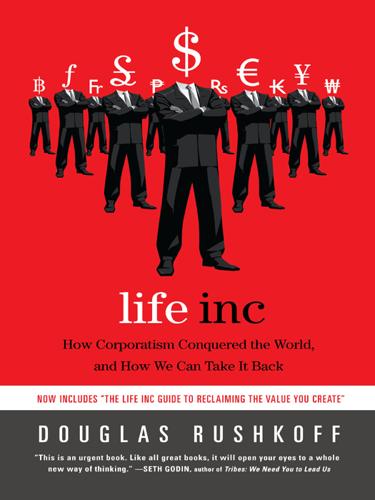
Life Inc.: How the World Became a Corporation and How to Take It Back
by
Douglas Rushkoff
Published 1 Jun 2009
He set up a now famous experiment in which subjects were instructed by men in white lab coats to deliver increasingly intense electric shocks to victims who screamed in pain, complained of a heart condition, and begged for the experiment to be halted. More than half of the subjects carried out the orders anyway, slowly increasing the electric shocks to seemingly lethal levels. (Although the shocks were not real and the victims were only actors, such experiments were declared unethical by the American Psychological Association in 1973.) Reality TV, at its emotional core, is an ongoing experiment in interpersonal torture that picks up where Milgram left off. Although usually unscripted, reality shows are nonetheless as purposefully constructed as psych experiments: they are setups with clear hypotheses, designed to maximize the probability of conflict and embarrassment.
…
The Real World Back in the 1960s, the psychologist Stanley Milgram was horrified and inspired by the trial of Adolf Eichmann, who engineered the transport of Jews to Nazi death camps. Milgram wanted to know if German war criminals could have been simply “following orders,” as they claimed, and not truly complicit in the death-camp atrocities. At the very least, he was hoping to discover that Americans would not respond the same way under similar circumstances. He set up a now famous experiment in which subjects were instructed by men in white lab coats to deliver increasingly intense electric shocks to victims who screamed in pain, complained of a heart condition, and begged for the experiment to be halted.
…
Even Oprah Winfrey’s feel-good offering, Your Money or Your Life, features a family in a terrible crisis, and then offers an “expert action team” to fix up whichever toothless crack addict or obese divorcée begs the most pathetically. By sitting still for the elaborately staged social experiments we call reality TV, we are supplying further evidence for Milgram’s main conclusion: “Ordinary people …without any particular hostility on their part, can become agents in a terrible destructive process.” But who is the authority figure in the lab coat granting us permission to delight in the pain of others? Who absolves us of the attendant guilt?
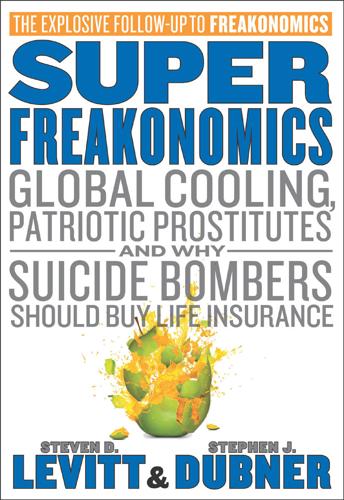
SuperFreakonomics
by
Steven D. Levitt
and
Stephen J. Dubner
Published 19 Oct 2009
“Just about any request which could conceivably be asked of the subject by a reputable investigator,” he wrote, “is legitimized by the quasi-magical phrase “This is an experiment.’” Orne’s point was borne out rather spectacularly by at least two infamous lab experiments. In a 1961–62 study designed to understand why Nazi officers obeyed their superiors’ brutal orders, the Yale psychologist Stanley Milgram got volunteers to follow his instructions and administer a series of increasingly painful electric shocks—at least they thought the shocks were painful; the whole thing was a setup—to unseen lab partners. In 1971, the Stanford psychologist Philip Zimbardo conducted a prison experiment, with some volunteers playing guards and others playing inmates.
…
Indeed it did: with open baskets, the churchgoers gave more money, including fewer small-denomination coins, than with closed bags—although, interestingly, the effect petered out once the open baskets had been around for a while. See Soetevent, “Anonymity in Giving in a Natural Context—a Field Experiment in 30 Churches,” Journal of Public Economics 89 (2005). / 123 A “stupid automaton”: see A.H. Pierce, “The Subconscious Again,” Journal of Philosophy, Psychology, & Scientific Methods 5 (1908). / 123 “Forced cooperation”: see Martin T. Orne, “On the Social Psychological Experiment: With Particular Reference to Demand Characteristics and Their Implications,” American Psychologist 17, no. 10 (1962). / 123 “Why Nazi officers obeyed”: see Stanley Milgram, “Behavioral Study of Obedience,” Journal of Abnormal and Social Psychology 67, no. 4 (1963). / 123 The Stanford prison experiments: see Craig Haney, Curtis Banks, and Philip Zimbardo, “Interpersonal Dynamics in a Simulated Prison,” International Journal of Criminology and Penology 1 (1973).
…
In 1971, the Stanford psychologist Philip Zimbardo conducted a prison experiment, with some volunteers playing guards and others playing inmates. The guards started behaving so sadistically that Zimbardo had to shut down the experiment. When you consider what Zimbardo and Milgram got their lab volunteers to do, it is no wonder that the esteemed researchers who ran the Dictator game, with its innocuous goal of transferring a few dollars from one undergrad to another, could, as List puts it, “induce almost any level of giving they desire.” When you look at the world through the eyes of an economist like John List, you realize that many seemingly altruistic acts no longer seem so altruistic. It may appear altruistic when you donate $100 to your local public-radio station, but in exchange you get a year of guilt-free listening (and, if you’re lucky, a canvas tote bag).

The Economic Singularity: Artificial Intelligence and the Death of Capitalism
by
Calum Chace
Published 17 Jul 2016
We also know how fragile civilisation is from two famous episodes in experimental psychology. In 1961, Yale psychologist Stanley Milgram recruited students from that elite university, and told them to administer mild electric shocks to incentivise a stranger who was supposed to be learning pairs of words. The shocks were fake, but the students did not know this, and an extraordinary two-thirds of the students were prepared, when urged on by the experimenter, to deliver what appeared to be very painful and damaging doses of electricity.[cccxliv] The experiment has been replicated numerous times around the world, with similar results. Ten years later, Stanford psychology professor Philip Zimbardo, a school friend of Milgram’s, ran a different experiment in which students were recruited and arbitrarily assigned the roles of prisoners and guards in a make-believe prison.
…
Ten years later, Stanford psychology professor Philip Zimbardo, a school friend of Milgram’s, ran a different experiment in which students were recruited and arbitrarily assigned the roles of prisoners and guards in a make-believe prison. He was shocked to see how enthusiastically sadistic the students who were chosen to be guards became, and he was obliged to terminate the exercise early.[cccxlv] This experiment has also been replicated numerous times. Our 21st century global civilisation seems pretty robust. We have just gone through what is frequently described as the worst recession since the Great Depression of the 1930s, and for the great majority of people, the experience was nothing like as awful as those terrible years, which did so much to set up the disastrous carnage of World War Two.
…
I didn’t expect to be heading back in the other direction in later life. [cccxlii] https://edge.org/conversation/john_markoff-the-next-wave [cccxliii] http://uk.pcmag.com/robotics-automation-products/34778/news/will-a-robot-revolution-lead-to-mass-unemployment [cccxliv] https://en.wikipedia.org/wiki/Milgram_experiment [cccxlv] http://www.prisonexp.org/ [cccxlvi] http://fourhourworkweek.com/2014/08/29/kevin-kelly/ [cccxlvii] https://www.edge.org/conversation/kevin_kelly-the-technium [cccxlviii] http://history.hanover.edu/courses/excerpts/165acton.html [cccxlix] http://mercatus.org/sites/default/files/Brito_BitcoinPrimer.pdf [cccl] http://www.dugcampbell.com/byzantine-generals-problem/ [cccli] http://www.economistinsights.com/technology-innovation/analysis/money-no-middleman/tab/1 [ccclii] : The Machine Intelligence Research Institute (MIRI) in Northern California, The Future of Humanity Institute (FHI) and the Centre for the Study of Existential Risk (CSER) in England’s Oxford and Cambridge respectively, and the Future of Life Institute (FLI) in Massachussetts.

Adaptive Markets: Financial Evolution at the Speed of Thought
by
Andrew W. Lo
Published 3 Apr 2017
In the infamous experiment on obedience to authority, originally conducted by the psychologist Stanley Milgram at Yale University in 1961, volunteers administered what they believed were high-voltage electric shocks to a human experimental subject—a paid actor who screamed in pain at the appropriate moments—simply because a temporary authority figure wearing a white lab coat made verbal suggestions to continue.15 Of these scripted suggestions, “You have no other choice, you must go on,” was the most forceful. If a volunteer still refused after this suggestion was given, the experiment was stopped. Ultimately, twenty-six out of forty people administered what they believed was a dangerous, perhaps fatal, 450-volt shock to a fellow human being, even though all expressed doubts verbally, and many exhibited obvious physiological manifestations of stress; three even experienced what appeared to be seizures.
…
Zimbardo, who played the role of prison superintendent, terminated the experiment after only six days, at the urging of his future wife, Christina Maslach, whom he had brought in as an outsider to conduct interviews with the subjects. Zimbardo called this phenomenon the “Lucifer Effect,” a biblical reference to God’s favorite angel who becomes Satan. Good people, when placed in just the wrong environment, are capable of great evil. It’s especially sobering that the subjects in Milgram’s and Zimbardo’s experiments weren’t given any significant financial incentives to behave the way they did (Milgram paid his subjects $4.00 for one hour of their time, plus $0.50 carfare, or about $36 today; Zimbardo paid his subjects $15 a day, roughly $90 today).
…
Many people know the story of Pavlov and his dogs: the Russian scientist would ring a bell while feeding his dogs, and the dogs became so conditioned to the sound that they would still salivate when Pavlov rang his bell, even if they weren’t fed. This is a classic psychological experiment involving stimulus and response. Pavlov’s dogs began with an unconditioned stimulus (dog food) and had an unconditioned response (dog drool). Over time, Pavlov’s dogs associated the conditioned stimulus (the bell) with the unconditioned stimulus and developed a conditioned response (dog drool conditioned on the sound of the bell). As opposed to classical Pavlovian conditioning, fear conditioning involves replacing the unconditioned stimulus, such as dog food, with a negative stimulus, such as an electric shock. Conditioned fear learning is much faster than other forms of learning.
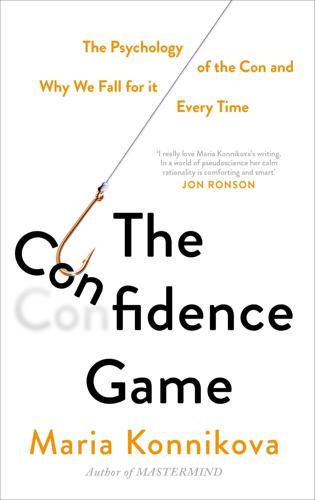
The Confidence Game: The Psychology of the Con and Why We Fall for It Every Time
by
Maria Konnikova
Published 28 Jan 2016
The man who holds power, however illusory it may be, is a man in the perfect position to rope. We often obey power reflexively, without ever quite stopping to reflect on why we’re doing what we are and whether it is, in fact, something we should be doing. While the most famous—or, rather, infamous—study on the phenomenon is Stanley Milgram’s obedience study,1 in which people thought they were giving dangerous electric shocks to a man with a heart condition but did it anyway because they were told to continue, the phenomenon has been broadly replicated in multiple settings. In one study, personnel managers discriminated against applicants by race when their superiors instructed them to do so.
…
Under the right circumstances, a loss can signal a deepening of commitment. There’s evidence that if we experience a particularly painful situation—the loss of a lot of money, for example—and then successfully overcome it, or think we’ve done so, say, by deciding to give more money, we feel a great sense of accomplishment—and, a bit perversely, a greater sense of loyalty to the cause of our pain. In one early study, Harold Gerard and Grover Mathewson found that people who had to undergo a severe electric shock to be admitted to a group subsequently rated the group as more attractive. We may have lost, but it was all worth it: we become more loyal by virtue of pain, be it physical (shock) or emotional (financial loss).
…
Hope that you’ll be happier, healthier, richer, loved, accepted, better looking, younger, smarter, a deeper, more fulfilled human being—hope that the you that will emerge on the other side will be somehow superior to the you that came in. ENDNOTE 1. The study has been criticized in recent years as not showing what it purports, but Milgram’s original work—and series of studies, not just the one most frequently reported—do show that many (not all) people will indeed follow orders to a surprising degree. The effect has been widely replicated. ACKNOWLEDGMENTS This book was born one fall evening as I settled in to watch David Mamet’s House of Games.
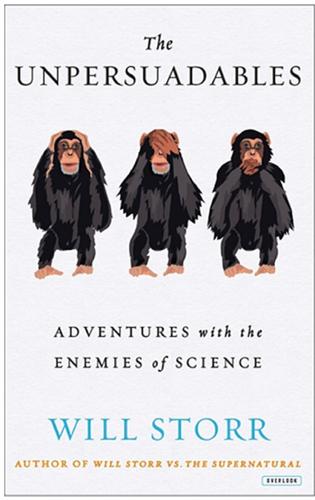
The Unpersuadables: Adventures With the Enemies of Science
by
Will Storr
Published 1 Jan 2013
They believed that they were being instructed by someone senior to them. ‘Excessive obedience’ to authority is a flaw in humans that has been known to social psychologists for a long time. This is, in part, due to a set of extremely famous experiments carried out by Professor Stanley Milgram at Yale University in 1961, during which it was discovered that two-thirds of participants were prepared to deliver potentially fatal electric shocks to strangers, simply because they had been told to do so by a man in a white coat. We are invisibly influenced not only by those in authority, but by those who populate our work and social lives. In a 2012 paper, neuroscientist Professor Chris Frith reviews a trove of well-replicated studies that demonstrate how, when we are in the company of others, we can automatically switch from ‘I mode’ to ‘we mode’.
…
‘The brain creates the illusion that we are all independent entities who make our own decisions. In reality there are powerful unconscious processes that embed us in the social world. We tend to imitate others and share their goals, knowledge and beliefs, but we are hardly aware of this. This is why strange narratives work best when they are shared by a group.’ In 1951, Professor Stanley Milgram’s boss, Dr Solomon Asch, conducted a simple but devastating test that explored the ease by which we can let the opinions of others affect our own. He showed a hundred and twenty-three participants a series of two simple straight lines and asked them to say whether the first was longer, shorter or the same length as the second.
…
Philip Zimbardo, The Lucifer Effect, Rider, 2007, pp. 279–81. 70 In a 2012 paper, neuroscientist Professor Chris Frith: Chris D. Frith, ‘The role of metacognition in human social interactions’, Philosophical Transactions of The Royal Society, Biological Sciences, p. 367. 71 In 1951, Professor Stanley Milgram’s boss, Dr Solomon Asch: S. E. Asch, ‘Studies of independence and conformity: A minority of one against a unanimous majority’, Psychological Monographs 70 (1951). 71 In 2005, Dr Gregory Berns, a psychiatrist and neuroscientist: Gregory S. Berns, Jonathan Chappelow, Caroline F. Zink, Giuseppe Pagnoni, Megan E.
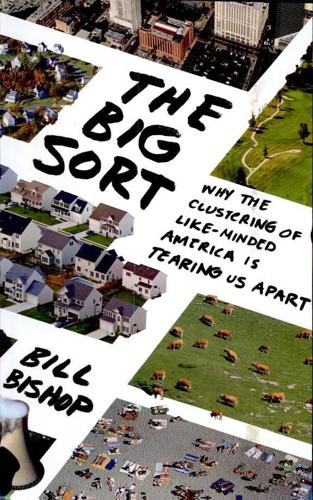
The Big Sort: Why the Clustering of Like-Minded America Is Tearing Us Apart
by
Bill Bishop
and
Robert G. Cushing
Published 6 May 2008
That house became an issue in his 2006 reelection campaign against Democrat Bob Casey Jr., a race Santorum lost [back] *** *Stanley Milgram conducted the most extreme—and most famous—conformity experiments. He asked subjects to apply electric shocks to a victim As the charge was increased, the victim (unseen by the subjects) would moan, howl, and eventually scream The subjects were ordered to increase the power of the charge and to administer another shock. The subjects in the tests all administered shocks well beyond the level Milgram expected. No subject stopped prior to the level where the "victim kick[ed] the wall" and could not answer questions.
…
Of forty subjects, twenty-six administered the strongest level of shock. One of the more interesting findings was that subjects were more apt to administer higher voltages when instructed to do so by someone in person. They were less likely to do so if the instructions were phoned in. See Stanley Milgram, "Behavioral Study of Obedience," Journal of Abnormal and Social Psychology (yj, no. 4 (1963): 371–78; Stanley Milgram, "Some Conditions of Obedience and Disobedience to Authority," Human Relations 18 (1965): 57–76. Face-to-face contact is powerful. The George W Bush campaign, especially in 2004, used face-to-face contact among culturally similar people to increase voter turnout.
…
See also specific newspapers Medicaid, [>] Medical care See Health care and medical research Medicare, [>], [>] Megachurches in Chicago, [>]; Crystal Cathedral in Orange County, [>], emerging churches compared with, [>]–[>], [>]–[>], history of, [>], in Houston, Tex., [>]–[>], [>], [>]; McGavran's influence on, [>], [>], [>]–[>], [>], [>]–[>], [>], Saddleback Church, Orange County, [>], [>], [>], [>], [>]–[>], [>], [>], [>], and tribe psychology, [>], [>]–[>], [>]–[>], [>] n, youth services at, [>]–[>] See also Evangelical or fundamentalist churches, Religion Mehlman, Ken, [>], [>] n, [>] Memphis, Tenn., [>] Mercury Studio, [>], [>] Mesquite, Tex., [>] Mexican American Legal Defense and Education Fund, [>]–[>] Miami, Fla., [>] Michel, Robert, [>] Michigan, [>] Micklethwait, John, [>], [>] n Microsoft, [>] Midterm elections (2006), [>]–[>], [>], [>]–[>] Migration and age, [>], [>] n, and assortative mating, [>], [>], and Colorado, [>]–[>]; and communities of like-rmnded-ness, [>]–[>], [>]–[>], economics of, [>]–[>]; and educational level, [>]–[>], [>] n, future of politics of migration, [>]–[>]; and high-tech cities, [>]–[>], [>], [>], [>], [>] n, in 1990s, [>]–[>], and occupation, [>], [>]–[>]; and patents, [>], politics of, [>]–[>], [>]–[>], [>]–[>], [>], and power couples, [>] n; and race, [>], [>]–[>]; research evidence on, [>]–[>], and superstar cities, [>]–[>]; Tiebout theory of, [>]–[>], of U.S. population generally, [>]–[>], [>]–[>], [>]–[>], and wages, [>], and white flight, [>], [>], [>]–[>] Milbank, Dana, [>] Milgram, Stanley, [>] n Mill, John Stuart, [>] Miller, Arnold, [>], [>] n Miller, Arthur, [>] Miller, Dale, [>]–[>] Miller, David J., [>] Miller, George, [>] Miller, J. D., [>] Mills, C. Wright, [>] Minneapolis, Minn Bluer church service m, [>]–[>], [>], [>]–[>], [>]; creative-class workers in, [>]; Edina as suburb of, [>]–[>]; gays and lesbians in, [>]; as high-tech city, [>], and lifestyle of Scott County, [>], [>]–[>], [>], [>]–[>], [>], migration to, [>]; Vineyard Church in, [>]–[>] Minneapolis Star Tribune, [>] Minnesota-Democratic Party in, [>], [>]–[>], families in, [>]–[>], lifestyle of Scott County, [>]–[>], [>], [>]–[>], [>], Republican Party in, [>]–[>], [>]–[>], [>]–[>], [>], [>]–[>].
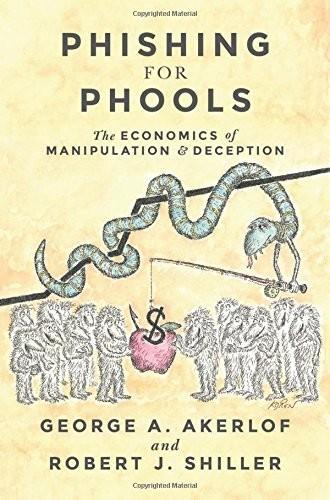
Phishing for Phools: The Economics of Manipulation and Deception
by
George A. Akerlof
,
Robert J. Shiller
and
Stanley B Resor Professor Of Economics Robert J Shiller
Published 21 Sep 2015
People want to be liked: to do so they must be taking part in a story in which they are liked, or not liked, by someone else. People have deference to authority: to have this emotion they must consider themselves part of a story in which someone has authority over them. For example, in the famous experiment by Stanley Milgram in which a “teacher” told subjects to deliver electric shocks to a “learner,” the subjects were identifying with the “teacher” who was in “authority,” and they strongly resisted their inclinations to disobey (Stanley Milgram, Obedience to Authority: An Experimental View (New York: Harper & Row, 1974)). People tend to follow others (social proof): in this case they must be telling themselves a story in which either those others have better judgment or information than they do (in the information explanation); or else they do not want to incur disapproval by failing to conform (in the social conformity explanation).
…
The Smartest Guys in the Room: The Amazing Rise and Fall of Enron. New York: Portfolio/Penguin Books, 2003. Mead, Rebecca. One Perfect Day: The Selling of the American Wedding. New York: Penguin Books, 2007. Kindle. Mérimée, Prosper. Carmen and Other Stories. Oxford: Oxford University Press, 1989. Milgram, Stanley. Obedience to Authority: An Experimental View. New York: Harper & Row, 1974. Miller, Jessica. “Ads Prove Grassley’s Greener on His Side of the Ballot.” Waterloo–Cedar Falls Courier, October 25, 2004. Accessed November 16, 2014. http://wcfcourier.com/news/metro/article_fdd73608-4f6d-54be-aa34-28f3417273e9.html.
…
See advertising; news media Medicaid, 228n16 medical journals, 87–88, 92–93 Medicare: benefits of, 154; drug coverage in, 95, 211n52; establishment of, 151, 152; privatization proposal, 156, 228n16 medicine. See doctors; pharmaceutical industry Menlo-Atherton High School graduates, 112–13 mental frames. See stories Merck, 86, 87–90, 92, 94, 145, 209n25 Mérimée, Prosper, 214n19 Milgram, Stanley, 186–87n26 Milken, Michael: career of, 125, 126; compensation of, 131, 223n27; downfall of, 131–32; High-Yield Bond Conferences, 131; junk bond market and, 125–27, 130–31, 132–33; leveraged buyouts, 124, 127–30; phishing by, 126, 128–31, 132–33 Miller, Jessica, 203n7 Miller, Stephen, 228n8 Minow, Nell, 141 Mitchell, Constance, 221n5 Mitford, Jessica, 182n17 Mongelli, Lorena, 229n30 monkey-on-the-shoulder tastes, 4–5, 6, 20, 54, 59, 170–71, 172 Moody’s, 27–28, 31, 34, 191n13, 192n28, 192n30.
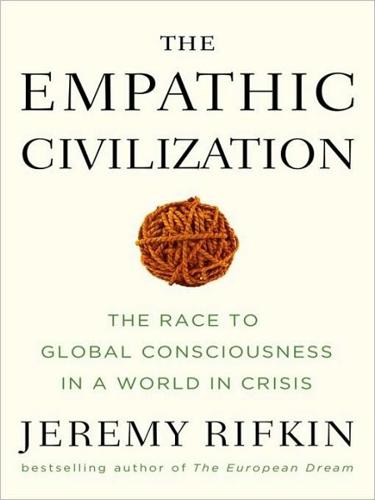
The Empathic Civilization: The Race to Global Consciousness in a World in Crisis
by
Jeremy Rifkin
Published 31 Dec 2009
Kocher concluded that in a country with a population the size of the United States and without social restrictions, “it is practically certain that any two individuals can contact one another by means of at least two intermediaries.”129 The American psychologist Stanley Milgram at the City University of New York, along with Jeffrey Travers at Harvard, followed up on Gurevich’s work in “network” theory in the 1960s. Milgram’s studies suggested that, at least in the United States, people were connected by an average of slightly more than five friendship links.130 Then in 1978, Milgram published an article in Psychology Today that helped create the popular lore on the subject. The theory of “six degrees of separation” became the subject of novels, films, and television shows.
…
In the study, the women were hooked up to an MRI machine while their romantic partners remained nearby. Then the researchers gave a brief electric shock either to the back of the woman’s hand or her partner’s. While she could not see her partner, an indicator informed her of who would be shocked next and how intense it would be. The same pain areas of the limbic system, including the anterior cingulate cortex, the thalamus and the insula, were activated in the women, causing pain both when it was directly administered to them or simply imagined, when administered to their partner.9 This experiment demonstrated, in an unusual way, how very real empathic response to another’s feelings can be.
…
Close observation of other species shows a steady progression of the empathic impulse in biological evolution. For example, in a classic study conducted more than half a century ago, researchers found “that rats that had learned to press a lever to obtain food would stop doing so if their response was paired with the delivery of an electric shock to a visible neighboring rat.”46 Subsequent experiments with rhesus monkeys yielded the same results—except, in the latter case, the emotional response was more long- lasting and had deeper consequences. One monkey stopped pulling the lever for five days, another for twelve days, after seeing the shocking effect on another monkey.

Evil Genes: Why Rome Fell, Hitler Rose, Enron Failed, and My Sister Stole My Mother's Boyfriend
by
Barbara Oakley Phd
Published 20 Oct 2008
Fundamentally, if a psychiatric “syndrome does not sufficiently impair the defendant's capacity for rationality, it will have no excusing force [from a legal perspective] whatsoever, no matter how much of a causal role it played…. To say that a syndrome caused a crime tells us nothing about whether the defendant deserves excuse or mitigation (except in New Hampshire…).” b.This behavior can't help but evoke shades of psychologist Stanley Milgram's work. In a classic set of experiments, Milgram revealed that many ordinary people will go to absurd lengths—even giving electric shocks to shocking screaming victims—in their blind tendency to obey authority. Perhaps this relates to Posner's research involving people's varying ability to resolve conflicting information and Wilson's studies related to decision making and synchronized neural rhythms.
…
Goldhagen, Hitler's Willing Executioners: Ordinary Germans and the Holocaust (New York: Knopf, 1996); Samantha Power, “A Problem from Hell”: America and the Age of Genocide (New York: Basic Books, 2002), p. 111; Raine and Yang, “Neural Foundations.” 66. P. G. Zimbardo, C. Maslach, and C. Haney, “Reflections on the Stanford Prison Experiment: Genesis, Transformations, Consequences,” in Obedience to Authority: Current Perspectives on the Milgram Paradigm, ed. T. Blass, (Mahwah, NJ: Lawrence Erlbaum, 2000), p. 194; Philip G. Zimbardo, The Lucifer Effect: Understanding How Good People Turn Evil (New York: Random House, 2007), p. 32; T. Carnahan and S. McFarland, “Revisiting the Stanford Prison Experiment.” See also the excellent follow-on article that expands on Carnahan and McFarland's findings: S. A. Haslam and S.
…
Eichenwald, Conspiracy of Fools. 19. David France, Our Fathers: The Secret Life of the Catholic Church in an Age of Scandal (New York: Broadway Books, 2004). 20. Adam LeBor, “Complicity with Evil” (New Haven: Yale University Press, 2006). 21. Carnahan and McFarland, “Revisiting the Stanford Prison Experiment.” 22. Stanley Milgram, Obedience to Authority: An Experimental View (New York: Harper & Row, 1974). 23. Myron Peretz Glazer and Penina Migdal Glazer, The Whistleblowers (New York: Basic Books, 1989). 24. Waite, Psychopathic God, p. 396. 25. Victor, Hitler, p. 6. 26. Thomas Benfield Harbottle, Dictionary of Quotations (Classical) (New York: Macmillan, 1906), p. 198. 27.

Lab Rats: How Silicon Valley Made Work Miserable for the Rest of Us
by
Dan Lyons
Published 22 Oct 2018
Some had even fantasized, as I had during my time in start-up land, that their companies weren’t companies at all, but rather were part of some long-term psychology experiment, a corporate version of the Milgram experiment at Yale or the Stanford prison experiment. The 1961 Milgram experiment studied obedience to authority figures. Psychologist Stanley Milgram ordered subjects to keep administering ever-stronger shocks to a “learner” on the other side of a wall, and many kept going, even when the learner shrieked, pleaded, and banged on the wall. In the 1971 Stanford prison experiment, twenty-four college students were put into a mock prison, with half role-playing as guards and half role-playing as prisoners, to see what happens when people are given power over others.
…
“Work is feeling more and more like a Skinner box” is how Gregory Berns, a neuropsychologist at Emory University, put it when he wrote a New York Times article about a study he had conducted about how fear impairs decision-making, which involved putting people into an MRI machine and zapping their feet with electric shocks. A Skinner box, invented in the 1930s by psychologist B. F. Skinner, is a cage in which rats learn that pulling certain levers gets them food and that flashing lights might signal they are about to get a shock through the floor. A New Kind of Suffering When I wrote Disrupted I thought my experience had been unusual. But now here were all these people telling me they had experienced something similar. This was taking place not just at start-ups and not just in the tech industry, but in many industries and many countries around the world.
…
What Fear Does to Your Brain A decade ago, Gregory Berns, a neuropsychology researcher and director of the Center for Neuropolicy at Emory University, wanted to find out how fear affected people’s abilities to make decisions. To do that, he constructed an experiment that was downright shocking. He put people into an MRI scanner and made images of their brain while giving them painful electric shocks through electrodes attached to the top of their feet. Berns says it was basically a human version of a Skinner box. Berns, you may recall from Chapter 1, was the guy who once wrote that “Work is becoming more and more like a Skinner box.”
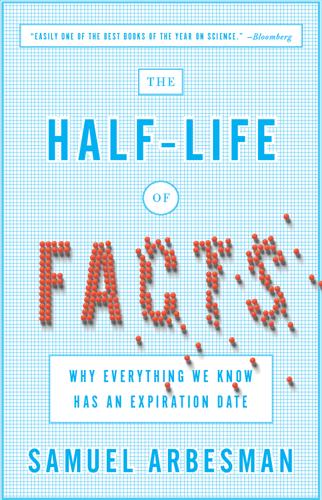
The Half-Life of Facts: Why Everything We Know Has an Expiration Date
by
Samuel Arbesman
Published 31 Aug 2012
This obsession with great amounts of data is not an isolated incident, something specific to Galton and an aberration along the trajectory of science. Instead, it is part of a grand tradition that, especially in the fields of sociology and social psychology, has unleashed a great many intriguing and clever experiments. Stanley Milgram, known for his shock experiment that explored obedience, and for being the first to measure the six degrees of separation, conceived of numerous elegant experiments. One of these has the whiff of Galton. Known as the sidewalk experiment, he had graduate students stand on a New York City sidewalk and look up. He then measured how many students were required for this group to get passersby to stop and join them, or at least to look up themselves.
…
As science grows exponentially more difficult in some areas, affordable technology often proceeds along a similar curve: an exponential increase in computer processing power means that problems once considered hard, such as visualizing fractals, proving certain mathematical theorems, or simulating entire populations, can now be done quite easily. Some scientists arrive at new discoveries without a significant investment in resources by becoming more clever and innovative. When Stanley Milgram did his famous “six degrees of separation” experiment, the one that showed that everyone on Earth was much more closely linked than we imagined, he did it by using not much more than postcards and stamps. When one area of research becomes difficult, the scientists in that field either rise to the challenge by investing greater effort or shift their focus of inquiry.
…
S., 81–82 McWhorter, John, 191 measurement, 142–70 decline effect and, 155–56, 157 kilogram in, 147–48 meter in, 143–47 of Mount Everest, 140–41 precision and accuracy in, 149–50 prefixes in, 47–48, 142, 147 publication bias and, 156 of trees, 142 Mechanical Turk, 180–82 medical knowledge, 23, 32, 51–52, 53, 122, 197, 198, 208 about cirrhosis and hepatitis, 28–30 MEDLINE, 99–100 memorization, 198 Mendel, Gregor, 106 Mendeley, 117, 118 Merton, Robert, 61, 103, 104 mesofacts, 6–7, 195, 203 meta-analysis, 107–8 cumulative, 109–10 meter, 143–47 Milgram, Stanley, 24, 167 mobile phone calls, 69, 77 Moon, 2, 126–28, 129, 138, 174, 203 Moore, Gordon, 42, 55, 56 Moore’s Law, 41–43, 46, 48, 51, 55, 56, 64, 203 Moriarty, James, 85–86 Mount Everest, 140–41 Mueller, John, 165 Munroe, Randall, 84, 153–54 Murphy, Tom, 55 mutation, 87–94 Napier’s constant, 12 National Institutes of Health, 17 natural selection, 104–5, 187 Nature, 122, 154, 156, 162, 166 negative results, 162 Neptune, 154–55, 183 network science, 74–78 neuroscience, 48 New Scientist, 85 Newton, Isaac, 21, 36, 67, 94, 174, 186 New Yorker, 86 New York Times, 20, 75, 174 Nobel laureates, 18 nosebleeds, 180–82 Noyce, Robert, 42 null hypothesis, 152 Obama, Barack, 179 Oliver, John, 159 Onnela, Jukka-Pekka, 69, 77 On the Origin of Species (Darwin), 79, 187 opera, 14–15 orders, 60 Original Theory or New Hypothesis of the Universe, An (Wright), 121–22 Pacioli, Luca, 200 paleography, 87–90 paradigm, 186 paradigm shift, 186, 187 Parmentier, Antoine, 102 particle accelerator, 51 Patent Office, 54 Pauly, Daniel, 172–73 Pepys, Samuel, 52 periodic table, 50, 150–52, 182 Petroski, Henry, 49 phase transitions, 207 in acceptance and assimilation of knowledge, 185, 186 in facts, 121–39, 185 Ising model and, 124, 125–26, 138 in physics, 123–24, 126 Philosophical Transactions of the Royal Society of London, 9, 12 physics, 32 Planck, Max, 186–88 planets, 6, 121–23, 128, 129–31, 132, 183–84 Planet X, 154–56, 160 Pluto, 122–23, 128, 138, 148–49, 155, 183–84 polio, 52 Pony Express, 70 Poovey, Mary, 200 Popeye the Sailor, 83, 213 population: innovation and, 135–37, 202 makeup of, 61 size of, 2, 6, 57–61, 122, 135–37, 204 Portugal, 207 posterior probability, 159 potatoes, 102 preferential attachment, 103 prefixes, 47–48, 142, 147 Price, Derek J. de Solla, 9, 12–13, 15, 17, 32, 47, 50, 103, 166–67 prices, 196–97 printing press, 70–74, 78, 115 prior probability, 159 Pritchett, Lant, 186 Prize4Life Foundation, 97–98 productivity, 55–56 programmed cell death, 111, 194 proteomics, 48 Proteus phenomenon, 161 publication bias, 156 p-values, 152–54, 156, 158 P versus NP, 133–35 “Quantitative Measures of the Development of Science” (Price), 12 Quebec, 193–94 Queloz, Didier, 122 radioactivity, 2–3, 29, 33 Raynaud’s syndrome, 99, 110 reading, 197–98 Real Time Statistics Project, 195 reinventions, 104–5 Rendezvous with Rama (Clarke), 19 Rényi, Alfréd, 104 replication, 161–62 Riggs, Elmer, 81 Robinson, Karen, 107–8 robots, 46 Royal Society, 94–95 Roychowdhury, Vwani, 91, 103–4 Russell, C.
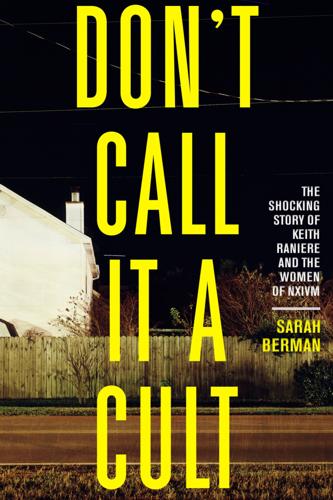
Don't Call It a Cult: The Shocking Story of Keith Raniere and the Women of NXIVM
by
Sarah Berman
Published 19 Apr 2021
It takes a twisted imagination to come up with such a scenario, but its basic premise has been studied by scientist Stanley Milgram. His obedience experiments of the 1960s found that most study participants were willing to cause harm to another person despite their own conscience if doing so was presented as mandatory by an authority figure. Instead of branding, the Milgram experiments instructed participants to read out memory tests to an unseen student and administer what they thought were electric shocks of increasing voltage when the student answered incorrectly. (In reality, no student was electrocuted.) The study’s findings suggest that more than half of us are capable of inflicting traumatizing, potentially lethal pain if we believe we don’t have a choice.
…
CHAPTER 23: “THIS IS NOT THE ARMY” through a trapdoor: Nicole testimony, June 2019. envisioned thousands or maybe even a million members: Lauren Salzman testimony, May 2019. CHAPTER 24: “MASTER, PLEASE BRAND ME” get over your body issues: Sarah Edmondson interview, October 2017. obedience experiments of the 1960s: Stanley Milgram, “Behavioural Study of Obedience,” Journal of Abnormal and Social Psychology, 1963. CHAPTER 25: RECKONING episode of Black Mirror: Charlie Brooker, “Shut Up and Dance,” Black Mirror, season 3, 2016. ten-hour train ride: First recounted on “The Suppressives,” Uncover: Escaping NXIVM, podcast, CBC 2018.
…
Paul Matol International Maxwell, Ghislane media, KR criticism of Mega Society test memories, repressed or “false” #MeToo Mexico Daniela’s desire to return to growth of NXIVM in KR hideout in NXIVM documentary about violence in plan to lure Bouchey to Michele (nanny, slave) Milano, Alyssa Milgram, Stanley Miljkovic, Maja attends volleyball game concerns about NXIVM decides to stay in Albany early doubts about NXIVM eating habits friendship with Mack impression of KR interest in NXIVM acting classes KR requests presence of learns about NXIVM meets KR moves in with Mack and Vicente on New York Times’ KR investigation progress in NXIVM work status in U.S.
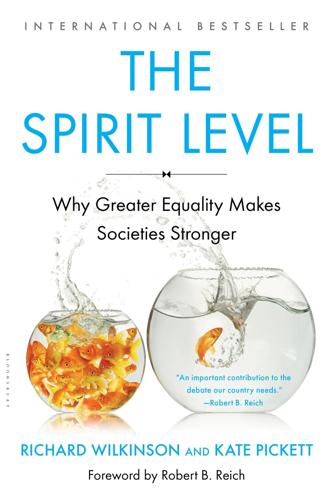
The Spirit Level: Why Greater Equality Makes Societies Stronger
by
Richard Wilkinson
and
Kate Pickett
Published 1 Jan 2009
This is why people have so often disclaimed responsibility for what they were doing by saying that they were ‘only carrying out orders’. The famous Milgram experiments showed that we have such a strong tendency to obey authority that it can result in us doing some pretty awful things. In what was presented as a ‘learning’ experiment, Milgram showed that people were willing to deliver what they believed were not only very painful, but also life-threatening electric shocks to a learning partner whenever the partner gave the wrong answer to a question. They did this at the request of a man in a white coat conducting the experiment, despite hearing what they thought were the screams caused by the shocks they delivered.394 However, within a framework of employee-ownership and control, people specifically regain ownership and control of the purposes of their work.
…
Marmot, ‘Unfairness and health: evidence from the Whitehall II Study’, Journal of Epidemiology and Community Health (2007) 61 (6): 513–18. 392. D. Erdal, Local Heroes. London: Viking, 2008. 393. D. Erdal, ‘The Psychology of Sharing: An evolutionary approach’. Unpublished PhD thesis, St Andrews, 2000. 394. S. Milgram, Obedience to Authority. New York: Harper, 1969. 395. L. T. Hobhouse, Liberalism. London: Williams & Norgate, 1911. 396. D. Coyle, The Weightless World. Oxford: Capstone, 1997. The Equality Trust If reading this book leaves you wanting to do something to help reduce inequality, then please visit The Equality Trust web site at www.equalitytrust.org.uk.
…
There have now been numerous experiments in which volunteers have been invited to come into a laboratory to have their salivary cortisol levels measured while being exposed to some situation or task designed to be stressful. Different experiments have used different stressors: some have tried asking volunteers to do a series of arithmetic problems – sometimes publicly comparing results with those of others – some have exposed them to loud noises or asked them to write about an unpleasant experience, or filmed them while doing a task. Because so many different kinds of stressor have been used in these experiments, Sally Dickerson and Margaret Kemeny, both psychologists at the University of California, Los Angeles, realized that they could use the results of all these experiments to see what kinds of stressors most reliably caused people’s cortisol levels to rise.16 They collected findings from 208 published reports of experiments in which people’s cortisol levels were measured while they were exposed to an experimental stressor.

Puzzling People: The Labyrinth of the Psychopath
by
Thomas Sheridan
Published 1 Mar 2011
Yale University psychologist Stanley Milgram, in his remarkable and frankly disturbing 1974 book entitled, Obedience to Authority: An Experimental View, detailed an experiment whereby participants in a controlled study were ordered to increase the intensity of what they believed to be electric shocks to a subject in another room, demonstrating just how dangerous blind obedience to authority can be. After the subjects were informed that they would be absolved of any personal legal consequences, sixty-five percent of the participants technically murdered the person on the receiving end of the electric shocks. All it took was an authority figure to instruct them to increase the voltage until the person on the other side of the wall was ‘dead’ from 450 volts of current.
…
There was a time when genuine science bloggers once had credibility in the eyes of many; now they are increasingly viewed as pseudo-intellectual prostitutes for the exclusive benefit of powerful corporations, or their own personal egos, at the expense of environmental and public well-being. Psychopaths trying to look clever and/or making a quick buck for themselves in the name of ‘rational science’, of course, in much the same way Stanley Milgram test subjects ‘killed’ an innocent man with electrical shocks in order to prove their loyalty to the authority figure. Is your God a Psychopath? Does your god expect you to worship him and only him? Does your god punish you for questioning his motives even when you don‘t mean to? Does your god seem to have more than a passing interest in encouraging sectarian tensions for his own benefit?
…
In a 1956 article for Scientific American entitled, Pleasure Centers in the Brain, physiologist James Olds described how a rat kept without food for a day was tempted down a ramp by a highly nutritious lure. En route to the meal, the rat would receive a pleasurable electric shock. The rat ignored the food, choosing instead to delight in the arousal. Morten L. Kringelbach, author of the book The Pleasure Center, cautioned that highly-arousing experiences may consist of impulses exclusively corresponding to ‘wanting’ and ‘desiring’. This is not the same thing as loving and bonding, hence why in the early stages of a relationship a psychopath makes seduction and sexual excitement a central aspect of the developing romance.

Big Dead Place: Inside the Strange and Menacing World of Antarctica
by
Nicholas Johnson
Published 31 May 2005
What is your greatest success?” “I’m where I want to be.” “And your greatest disappointment?” In 1974, psychologist Stanley Milgram published the results of a program of experiments at Yale University in which unwary subjects were recruited and paid a small sum to act as “teachers” in a “Study of Memory” that was actually an experiment in obedience. A learner-victim sat in a separate room and was to memorize word-pairs read by the teacher. The “teachers” were told by a scientist to administer electric shocks to the victim each time he failed to memorize the word pairs, with the shocks getting progressively stronger by 50 volts with each incorrect response.
…
Innocents on the Ice: A Memoir of Antarctic Exploration, 1957. University Press of Colorado, 1998. Bickel, Lennard. Shackleton’s Forgotten Argonauts. The Macmillan Company of Australia Pty Ltd., 1982. Bickel, Lennard. This Accursed Land. The MacMillan Company of Australia, 1977. Blass, Thomas, ed. Obedience to Authority: Current Perspectives on the Milgram Paradigm. Lawrence Erlbaum Associates, Inc., 2000. Burke, David. Moments of Terror. New South Wales University Press, 1994. Campbell, Victor. The Wicked Mate: The Antarctic Diary of Victor Campbell. Bluntisham Books and Erskine Press, 1988. Carter, Paul A. Little America: Town at the End of the World.
…
The Freemasons: The History, Nature, Development and Secret of the Royal Art. Lewis Masonic Books, 1994. “Lifeline to Antarctica.” CBS, July 8, 1999. [CBS website] Mawson’s Antarctic Diaries. University of Adelaide, 1988. McMahon, Patrick. “Emergency Flight Heads for Coldest of Winters.” USA Today, July 9, 1999. Milgram, Stanley. Obedience to Authority. Pinter and Martin Ltd., 1997. Mohsberg, Margot. “Smooth Landing.” The Capital, Nov. 26, 1999. Nansen, Fridtjof. To the Ends of the Earth. HarperCollins UK, 2002. National Science Foundation. External Panel Report. NSF, 1997. National Science Foundation. Safety in Antarctica: Report of the USAP Safety Review Panel.
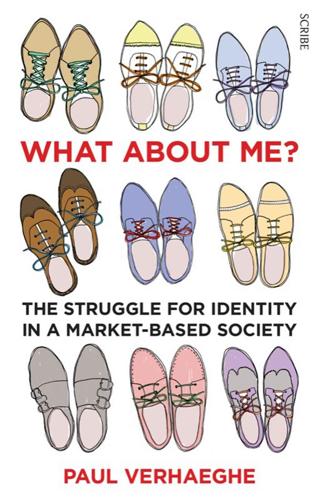
What About Me?: The Struggle for Identity in a Market-Based Society
by
Paul Verhaeghe
Published 26 Mar 2014
When mention is made of an author, the relevant book or article can be found in the bibliography under the author’s name. I only use footnotes for very specific references. Introduction 1 The best known is the 1963 experiment by Stanley Milgram, in which, after a certain amount of prompting, ordinary people gave dangerous electric shocks (or so they thought) to individuals taking part in what they had been told was a ‘learning experiment’. Around ten years later, Philip Zimbardo carried out his Stanford prison experiment, in which students took their roles as guards so much to heart that it became an Abu Ghraib avant la lettre. Chapter Three: The Perfectible Individual 1 Kołakowski, 2007.
…
Minneapolis: University of Minnesota Press, 1984. MacIntyre, A. After Virtue: a study in moral theory. London: Duckworth, 2007. Masschelein, J. & Simons, M. ‘Competentiegericht onderwijs: voor wie? Over de “kapitalistische” ethiek van het lerende individu’. Ethische Perspectieven, 2007, 17 (4), pp. 398–421. Milgram, S. Obedience to Authority. London: Tavistock, 1974. Moïsi, D. The Geopolitics of Emotion: how cultures of fear, humiliation, and hope are reshaping the world. New York: Doubleday, 2009. Pattyn, B. ‘Competenties en ideologie: het dictaat van een expanderend concept’. Ethische Perspectieven, 2007, 17 (4), pp. 422–435.
…
When one is given a much more coveted reward (grapes) while the other is still paid with cucumbers, the latter not only goes on strike; it even refuses the cucumber, with a look that conveys in simian language, ‘Do you know where you can stick it?’ Many variations of this experiment have been performed, always with the same result — unfair distribution is not accepted, and animals would rather receive nothing than be paid less for the same work. In another experiment, apes carrying out an assignment are rewarded with a plastic token that they can use to ‘buy’ food. They can choose between two kinds of token: one that only buys food for themselves, and one that also buys food for another member of the group.
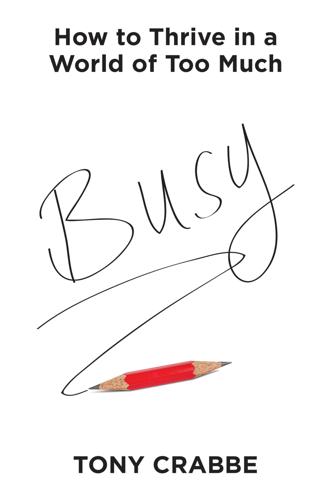
Busy
by
Tony Crabbe
Published 7 Jul 2015
That will pave the way for a larger request. Time to Say “No” Would you kill someone with a lethal electric shock if a man in a white lab coat asked you to? Or would you say “no”? In one of the most chilling psychological experiments ever, social psychologist Stanley Milgram began studying the effect of authority on people’s actions back in 1961 (soon after the beginning of Adolf Eichmann’s war crimes trial began in Jerusalem).4 The subjects were told that they would be “teachers,” and they should administer small electric shocks to the “learner” if they got answers wrong. Each time the learner gave the incorrect answer, the voltage was increased by 15 volts (so the subjects were told—though no actual shocks were administered).
…
If you are like most of us, the answer is “not very much.” In fact, in an amazing series of experiments led by the influential professor of psychology Timothy D. Wilson, it was shown that many people prefer to give themselves electric shocks rather than be left alone and unstimulated!11 These people, earlier in the day, had received this same electric shock and been willing to pay in order to never receive it again. Yet, when faced with a period of between six and fifteen minutes without external stimulation, the electric shock was preferable to their own thoughts. You may be thinking that the above study is crazy (despite the fact it was published in Science), but Wilson’s findings are in line with other studies.
…
Itamar Simonson, “Get Closer to Your Customers by Understanding How They Make Choices,” California Management Review 35, issue 4 (1993): 68–84. 3. A. G. Greenwald, C. G. Carnot, R. Beach, and B. Young, “Increasing Voting Behavior by Asking People If They Expect to Vote,” Journal of Applied Psychology 72, no. 2 (1987): 315–18. 4. Stanley Milgram, “Behavioral Study of Obedience,” The Journal of Abnormal and Social Psychology 67, no. 4 (1963): 371–8. 5. Amy Cuddy, “Your Body Language Shapes Who You Are,” (TED talk, June 2012), http://www.ted.com/talks/amy_cuddy_your_body_language_shapes_who_you_are. 6. William Ury, The Power of a Positive No (London: Hodder and Stoughton, Ltd., 2007).

Super Thinking: The Big Book of Mental Models
by
Gabriel Weinberg
and
Lauren McCann
Published 17 Jun 2019
Scarcity Cialdini’s sixth major influence model is authority, which describes how you are inclined to follow perceived authority figures. In a series of sensational experiments described in his book Obedience to Authority, psychologist Stanley Milgram tested people’s willingness to obey instructions from a previously unknown authority figure. Participants were asked to assist an experimenter (the authority figure) in a “learning experiment.” They were then asked to give increasingly high electric shocks to “the learner” when they made a mistake. The shocks were fake, but the participant wasn’t told that at the time; the learner was really an actor who pretended to feel pain when the “shocks” were sent.
…
Similarly, author Michael Ellsberg recounted in Forbes magazine how a guest post on author Tim Ferriss’s blog translated into significantly more book sales than a prime-time segment about his book on CNN and an op-ed printed in the Sunday edition of The New York Times. Authority also explains why simple changes in wardrobe and accessories can increase the likelihood of getting you to do something. For instance, lab coats were worn in the Milgram experiments to convey authority. Sometimes people even try to support an argument by appealing to a supposed authority even if that person does not have direct expertise in the relevant area. For example, advocates of extreme dosing of vitamin C cite that Linus Pauling, a two-time Nobel Prize winner, supports their claims, despite the fact that he received his awards in completely unrelated areas.
…
Department of, 97 just world hypothesis, 22 Kahneman, Daniel, 9, 30, 90 karoshi, 82 Kauffman Foundation, 122 keeping up with the Joneses, 210–11 key person insurance, 305 King, Martin Luther, Jr., 129, 225 KISS (Keep It Simple, Stupid), 10 knowledge, institutional, 257 knowns: known, 197 unknown, 198, 203 known unknowns, 197–98 Knox, Robert E., 91 Kodak, 302–3, 308–10, 312 Koenigswald, Gustav Heinrich Ralph von, 50 Kohl’s, 15 Kopelman, Josh, 301 Korea, 229, 231, 235, 238 Kristof, Nicholas, 254 Krokodil, 49 Kruger, Justin, 269 Kuhn, Thomas, 24 Kutcher, Ashton, 121 labor market, 283–84 laggards, 116–17 landlords, 178, 179, 182, 188 Laplace, Pierre-Simon, 132 large numbers, law of, 143–44 Latané, Bibb, 259 late majority, 116–17 lateral thinking, 201 law of diminishing returns, 81–83 law of diminishing utility, 81–82 law of inertia, 102–3, 105–8, 110, 112, 113, 119, 120, 129, 290, 296 law of large numbers, 143–44 law of small numbers, 143, 144 Lawson, Jerry, 289 lawsuits, 231 leadership, 248, 255, 260, 265, 271, 275, 276, 278–80 learned helplessness, 22–23 learning, 262, 269, 295 from past events, 271–72 learning curve, 269 Le Chatelier, Henri-Louis, 193 Le Chatelier’s principle, 193–94 left to their own devices, 275 Leibniz, Gottfried, 291 lemons into lemonade, 121 Lernaean Hydra, 51 Levav, Jonathan, 63 lever, 78 leverage, 78–80, 83, 115 high-leverage activities, 79–81, 83, 107, 113 leveraged buyout, 79 leveraging up, 78–79 Levitt, Steven, 44–45 Levitt, Theodore, 296 Lewis, Michael, 289 Lichtenstein, Sarah, 17 lightning, 145 liking, 216–17, 220 Lincoln, Abraham, 97 Lindy effect, 105, 106, 112 line in the sand, 238 LinkedIn, 7 littering, 41, 42 Lloyd, William, 37 loans, 180, 182–83 lobbyists, 216, 306 local optimum, 195–96 lock-in, 305 lock in your gains, 90 long-term negative scenarios, 60 loose versus tight, in organizational culture, 274 Lorenz, Edward, 121 loss, 91 loss aversion, 90–91 loss leader strategy, 236–37 lost at sea, 68 lottery, 85–86, 126, 145 low-context communication, 273–74 low-hanging fruit, 81 loyalists versus mercenaries, 276–77 luck, 128 making your own, 122 luck surface area, 122, 124, 128 Luft, Joseph, 196 LuLaRoe, 217 lung cancer, 133–34, 173 Lyautey, Hubert, 276 Lyft, ix, 288 Madoff, Bernie, 232 magnetic resonance imaging (MRI), 291 magnets, 194 maker’s schedule versus manager’s schedule, 277–78 Making of Economic Society, The (Heilbroner), 49 mammograms, 160–61 management debt, 56 manager’s schedule versus maker’s schedule, 277–78 managing to the person, 255 Manhattan Project, 195 Man in the High Castle, The (Dick), 201 manipulative insincerity, 264 man-month, 279 Mansfield, Peter, 291 manufacturer’s suggested retail price (MSRP), 15 margin of error, 154 markets, 42–43, 46–47, 106 failure in, 47–49 labor, 283–84 market norms versus social norms, 222–24 market power, 283–85, 312 product/market fit, 292–96, 302 secondary, 281–82 winner-take-most, 308 marriage: divorce, 231, 305 same-sex, 117, 118 Maslow, Abraham, 177, 270–71 Maslow’s hammer, xi, 177, 255, 297, 317 Maslow’s hierarchy of needs, 270–71 mathematics, ix–x, 3, 4, 132, 178 Singapore math, 23–24 matrices, 2 × 2, 125–26 consensus-contrarian, 285–86, 290 consequence-conviction, 265–66 Eisenhower Decision Matrix, 72–74, 89, 124, 125 of knowns and unknowns, 197–98 payoff, 212–15, 238 radical candor, 263–64 scatter plot on top of, 126 McCain, John, 241 mean, 146, 149, 151 regression to, 146, 286 standard deviation from, 149, 150–51, 154 variance from, 149 measles, 39, 40 measurable target, 49–50 median, 147 Medicare, 54–55 meetings, 113 weekly one-on-one, 262–63 Megginson, Leon, 101 mental models, vii–xii, 2, 3, 31, 35, 65, 131, 289, 315–17 mentorship, 23, 260, 262, 264, 265 mercenaries versus loyalists, 276–77 Merck, 283 merry-go-round, 108 meta-analysis, 172–73 Metcalfe, Robert, 118 Metcalfe’s law, 118 #MeToo movement, 113 metrics, 137 proxy, 139 Michaels, 15 Microsoft, 241 mid-mortems, 92 Miklaszewski, Jim, 196 Milgram, Stanley, 219, 220 military, 141, 229, 279, 294, 300 milkshakes, 297 Miller, Reggie, 246 Mills, Alan, 58 Mindset: The New Psychology of Success (Dweck), 266 mindset, fixed, 266–67, 272 mindset, growth, 266–67 minimum viable product (MVP), 7–8, 81, 294 mirroring, 217 mission, 276 mission statement, 68 MIT, 53, 85 moats, 302–5, 307–8, 310, 312 mode, 147 Moltke, Helmuth von, 7 momentum, 107–10, 119, 129 Monday morning quarterbacking, 271 Moneyball (Lewis), 289 monopolies, 283, 285 Monte Carlo fallacy, 144 Monte Carlo simulation, 195 Moore, Geoffrey, 311 moral hazard, 43–45, 47 most respectful interpretation (MRI), 19–20 moths, 99–101 Mountain Dew, 35 moving target, 136 multiple discovery, 291–92 multiplication, ix, xi multitasking, 70–72, 74, 76, 110 Munger, Charlie, viii, x–xi, 30, 286, 318 Murphy, Edward, 65 Murphy’s law, 64–65, 132 Musk, Elon, 5, 302 mutually assured destruction (MAD), 231 MVP (minimum viable product), 7–8, 81, 294 Mylan, 283 mythical man-month, 279 name-calling, 226 NASA, 4, 32, 33 Nash, John, 213 Nash equilibrium, 213–14, 226, 235 National Football League (NFL), 225–26 National Institutes of Health, 36 National Security Agency, 52 natural selection, 99–100, 102, 291, 295 nature versus nurture, 249–50 negative compounding, 85 negative externalities, 41–43, 47 negative returns, 82–83, 93 negotiations, 127–28 net benefit, 181–82, 184 Netflix, 69, 95, 203 net present value (NPV), 86, 181 network effects, 117–20, 308 neuroticism, 250 New Orleans, La., 41 Newport, Cal, 72 news headlines, 12–13, 221 newspapers, 106 Newsweek, 290 Newton, Isaac, 102, 291 New York Times, 27, 220, 254 Nielsen Holdings, 217 ninety-ninety rule, 89 Nintendo, 296 Nobel Prize, 32, 42, 220, 291, 306 nocebo effect, 137 nodes, 118, 119 No Fly List, 53–54 noise and signal, 311 nonresponse bias, 140, 142, 143 normal distribution (bell curve), 150–52, 153, 163–66, 191 North Korea, 229, 231, 238 north star, 68–70, 275 nothing in excess, 60 not ready for prime time, 242 “now what” questions, 291 NPR, 239 nuclear chain reaction, viii, 114, 120 nuclear industry, 305–6 nuclear option, 238 Nuclear Regulatory Commission (NRC), 305–6 nuclear weapons, 114, 118, 195, 209, 230–31, 233, 238 nudging, 13–14 null hypothesis, 163, 164 numbers, 130, 146 large, law of, 143–44 small, law of, 143, 144 see also data; statistics nurses, 284 Oakland Athletics, 289 Obama, Barack, 64, 241 objective versus subjective, in organizational culture, 274 obnoxious aggression, 264 observe, orient, decide, act (OODA), 294–95 observer effect, 52, 54 observer-expectancy bias, 136, 139 Ockham’s razor, 8–10 Odum, William E., 38 oil, 105–6 Olympics, 209, 246–48, 285 O’Neal, Shaquille, 246 one-hundred-year floods, 192 Onion, 211–12 On the Origin of Species by Means of Natural Selection (Darwin), 100 OODA loop, 294–95 openness to experience, 250 Operation Ceasefire, 232 opinion, diversity of, 205, 206 opioids, 36 opportunity cost, 76–77, 80, 83, 179, 182, 188, 305 of capital, 77, 179, 182 optimistic probability bias, 33 optimization, premature, 7 optimums, local and global, 195–96 optionality, preserving, 58–59 Oracle, 231, 291, 299 order, 124 balance between chaos and, 128 organizations: culture in, 107–8, 113, 273–80, 293 size and growth of, 278–79 teams in, see teams ostrich with its head in the sand, 55 out-group bias, 127 outliers, 148 Outliers (Gladwell), 261 overfitting, 10–11 overwork, 82 Paine, Thomas, 221–22 pain relievers, 36, 137 Pampered Chef, 217 Pangea, 24–25 paradigm shift, 24, 289 paradox of choice, 62–63 parallel processing, 96 paranoia, 308, 309, 311 Pareto, Vilfredo, 80 Pareto principle, 80–81 Pariser, Eli, 17 Parkinson, Cyril, 74–75, 89 Parkinson’s law, 89 Parkinson’s Law (Parkinson), 74–75 Parkinson’s law of triviality, 74, 89 passwords, 94, 97 past, 201, 271–72, 309–10 Pasteur, Louis, 26 path dependence, 57–59, 194 path of least resistance, 88 Patton, Bruce, 19 Pauling, Linus, 220 payoff matrix, 212–15, 238 PayPal, 72, 291, 296 peak, 105, 106, 112 peak oil, 105 Penny, Jonathon, 52 pent-up energy, 112 perfect, 89–90 as enemy of the good, 61, 89–90 personality traits, 249–50 person-month, 279 perspective, 11 persuasion, see influence models perverse incentives, 50–51, 54 Peter, Laurence, 256 Peter principle, 256, 257 Peterson, Tom, 108–9 Petrified Forest National Park, 217–18 Pew Research, 53 p-hacking, 169, 172 phishing, 97 phones, 116–17, 290 photography, 302–3, 308–10 physics, x, 114, 194, 293 quantum, 200–201 pick your battles, 238 Pinker, Steven, 144 Pirahã, x Pitbull, 36 pivoting, 295–96, 298–301, 308, 311, 312 placebo, 137 placebo effect, 137 Planck, Max, 24 Playskool, 111 Podesta, John, 97 point of no return, 244 Polaris, 67–68 polarity, 125–26 police, in organizations and projects, 253–54 politics, 70, 104 ads and statements in, 225–26 elections, 206, 218, 233, 241, 271, 293, 299 failure and, 47 influence in, 216 predictions in, 206 polls and surveys, 142–43, 152–54, 160 approval ratings, 152–54, 158 employee engagement, 140, 142 postmortems, 32, 92 Potemkin village, 228–29 potential energy, 112 power, 162 power drills, 296 power law distribution, 80–81 power vacuum, 259–60 practice, deliberate, 260–62, 264, 266 precautionary principle, 59–60 Predictably Irrational (Ariely), 14, 222–23 predictions and forecasts, 132, 173 market for, 205–7 superforecasters and, 206–7 PredictIt, 206 premature optimization, 7 premises, see principles pre-mortems, 92 present bias, 85, 87, 93, 113 preserving optionality, 58–59 pressure point, 112 prices, 188, 231, 299 arbitrage and, 282–83 bait and switch and, 228, 229 inflation in, 179–80, 182–83 loss leader strategy and, 236–37 manufacturer’s suggested retail, 15 monopolies and, 283 principal, 44–45 principal-agent problem, 44–45 principles (premises), 207 first, 4–7, 31, 207 prior, 159 prioritizing, 68 prisoners, 63, 232 prisoner’s dilemma, 212–14, 226, 234–35, 244 privacy, 55 probability, 132, 173, 194 bias, optimistic, 33 conditional, 156 probability distributions, 150, 151 bell curve (normal), 150–52, 153, 163–66, 191 Bernoulli, 152 central limit theorem and, 152–53, 163 fat-tailed, 191 power law, 80–81 sample, 152–53 pro-con lists, 175–78, 185, 189 procrastination, 83–85, 87, 89 product development, 294 product/market fit, 292–96, 302 promotions, 256, 275 proximate cause, 31, 117 proxy endpoint, 137 proxy metric, 139 psychology, 168 Psychology of Science, The (Maslow), 177 Ptolemy, Claudius, 8 publication bias, 170, 173 public goods, 39 punching above your weight, 242 p-values, 164, 165, 167–69, 172 Pygmalion effect, 267–68 Pyrrhus, King, 239 Qualcomm, 231 quantum physics, 200–201 quarantine, 234 questions: now what, 291 what if, 122, 201 why, 32, 33 why now, 291 quick and dirty, 234 quid pro quo, 215 Rabois, Keith, 72, 265 Rachleff, Andy, 285–86, 292–93 radical candor, 263–64 Radical Candor (Scott), 263 radiology, 291 randomized controlled experiment, 136 randomness, 201 rats, 51 Rawls, John, 21 Regan, Ronald, 183 real estate agents, 44–45 recessions, 121–22 reciprocity, 215–16, 220, 222, 229, 289 recommendations, 217 red line, 238 referrals, 217 reframe the problem, 96–97 refugee asylum cases, 144 regression to the mean, 146, 286 regret, 87 regulations, 183–84, 231–32 regulatory capture, 305–7 reinventing the wheel, 92 relationships, 53, 55, 63, 91, 111, 124, 159, 271, 296, 298 being locked into, 305 dating, 8–10, 95 replication crisis, 168–72 Republican Party, 104 reputation, 215 research: meta-analysis of, 172–73 publication bias and, 170, 173 systematic reviews of, 172, 173 see also experiments resonance, 293–94 response bias, 142, 143 responsibility, diffusion of, 259 restaurants, 297 menus at, 14, 62 RetailMeNot, 281 retaliation, 238 returns: diminishing, 81–83 negative, 82–83, 93 reversible decisions, 61–62 revolving door, 306 rewards, 275 Riccio, Jim, 306 rise to the occasion, 268 risk, 43, 46, 90, 288 cost-benefit analysis and, 180 de-risking, 6–7, 10, 294 moral hazard and, 43–45, 47 Road Ahead, The (Gates), 69 Roberts, Jason, 122 Roberts, John, 27 Rogers, Everett, 116 Rogers, William, 31 Rogers Commission Report, 31–33 roles, 256–58, 260, 271, 293 roly-poly toy, 111–12 root cause, 31–33, 234 roulette, 144 Rubicon River, 244 ruinous empathy, 264 Rumsfeld, Donald, 196–97, 247 Rumsfeld’s Rule, 247 Russia, 218, 241 Germany and, 70, 238–39 see also Soviet Union Sacred Heart University (SHU), 217, 218 sacrifice play, 239 Sagan, Carl, 220 sales, 81, 216–17 Salesforce, 299 same-sex marriage, 117, 118 Sample, Steven, 28 sample distribution, 152–53 sample size, 143, 160, 162, 163, 165–68, 172 Sánchez, Ricardo, 234 sanctions and fines, 232 Sanders, Bernie, 70, 182, 293 Sayre, Wallace, 74 Sayre’s law, 74 scarcity, 219, 220 scatter plot, 126 scenario analysis (scenario planning), 198–99, 201–3, 207 schools, see education and schools Schrödinger, Erwin, 200 Schrödinger’s cat, 200 Schultz, Howard, 296 Schwartz, Barry, 62–63 science, 133, 220 cargo cult, 315–16 Scientific Autobiography and other Papers (Planck), 24 scientific evidence, 139 scientific experiments, see experiments scientific method, 101–2, 294 scorched-earth tactics, 243 Scott, Kim, 263 S curves, 117, 120 secondary markets, 281–82 second law of thermodynamics, 124 secrets, 288–90, 292 Securities and Exchange Commission, U.S., 228 security, false sense of, 44 security services, 229 selection, adverse, 46–47 selection bias, 139–40, 143, 170 self-control, 87 self-fulfilling prophecies, 267 self-serving bias, 21, 272 Seligman, Martin, 22 Semmelweis, Ignaz, 25–26 Semmelweis reflex, 26 Seneca, Marcus, 60 sensitivity analysis, 181–82, 185, 188 dynamic, 195 Sequoia Capital, 291 Sessions, Roger, 8 sexual predators, 113 Shakespeare, William, 105 Sheets Energy Strips, 36 Shermer, Michael, 133 Shirky, Clay, 104 Shirky principle, 104, 112 Short History of Nearly Everything, A (Bryson), 50 short-termism, 55–56, 58, 60, 68, 85 side effects, 137 signal and noise, 311 significance, 167 statistical, 164–67, 170 Silicon Valley, 288, 289 simulations, 193–95 simultaneous invention, 291–92 Singapore math, 23–24 Sir David Attenborough, RSS, 35 Skeptics Society, 133 sleep meditation app, 162–68 slippery slope argument, 235 slow (high-concentration) thinking, 30, 33, 70–71 small numbers, law of, 143, 144 smartphones, 117, 290, 309, 310 smoking, 41, 42, 133–34, 139, 173 Snap, 299 Snowden, Edward, 52, 53 social engineering, 97 social equality, 117 social media, 81, 94, 113, 217–19, 241 Facebook, 18, 36, 94, 119, 219, 233, 247, 305, 308 Instagram, 220, 247, 291, 310 YouTube, 220, 291 social networks, 117 Dunbar’s number and, 278 social norms versus market norms, 222–24 social proof, 217–20, 229 societal change, 100–101 software, 56, 57 simulations, 192–94 solitaire, 195 solution space, 97 Somalia, 243 sophomore slump, 145–46 South Korea, 229, 231, 238 Soviet Union: Germany and, 70, 238–39 Gosplan in, 49 in Cold War, 209, 235 space exploration, 209 spacing effect, 262 Spain, 243–44 spam, 37, 161, 192–93, 234 specialists, 252–53 species, 120 spending, 38, 74–75 federal, 75–76 spillover effects, 41, 43 sports, 82–83 baseball, 83, 145–46, 289 football, 226, 243 Olympics, 209, 246–48, 285 Spotify, 299 spreadsheets, 179, 180, 182, 299 Srinivasan, Balaji, 301 standard deviation, 149, 150–51, 154 standard error, 154 standards, 93 Stanford Law School, x Starbucks, 296 startup business idea, 6–7 statistics, 130–32, 146, 173, 289, 297 base rate in, 157, 159, 160 base rate fallacy in, 157, 158, 170 Bayesian, 157–60 confidence intervals in, 154–56, 159 confidence level in, 154, 155, 161 frequentist, 158–60 p-hacking in, 169, 172 p-values in, 164, 165, 167–69, 172 standard deviation in, 149, 150–51, 154 standard error in, 154 statistical significance, 164–67, 170 summary, 146, 147 see also data; experiments; probability distributions Staubach, Roger, 243 Sternberg, Robert, 290 stock and flow diagrams, 192 Stone, Douglas, 19 stop the bleeding, 234 strategy, 107–8 exit, 242–43 loss leader, 236–37 pivoting and, 295–96, 298–301, 308, 311, 312 tactics versus, 256–57 strategy tax, 103–4, 112 Stiglitz, Joseph, 306 straw man, 225–26 Streisand, Barbra, 51 Streisand effect, 51, 52 Stroll, Cliff, 290 Structure of Scientific Revolutions, The (Kuhn), 24 subjective versus objective, in organizational culture, 274 suicide, 218 summary statistics, 146, 147 sunk-cost fallacy, 91 superforecasters, 206–7 Superforecasting (Tetlock), 206–7 super models, viii–xii super thinking, viii–ix, 3, 316, 318 surface area, 122 luck, 122, 124, 128 surgery, 136–37 Surowiecki, James, 203–5 surrogate endpoint, 137 surveys, see polls and surveys survivorship bias, 140–43, 170, 272 sustainable competitive advantage, 283, 285 switching costs, 305 systematic review, 172, 173 systems thinking, 192, 195, 198 tactics, 256–57 Tajfel, Henri, 127 take a step back, 298 Taleb, Nassim Nicholas, 2, 105 talk past each other, 225 Target, 236, 252 target, measurable, 49–50 taxes, 39, 40, 56, 104, 193–94 T cells, 194 teams, 246–48, 275 roles in, 256–58, 260 size of, 278 10x, 248, 249, 255, 260, 273, 280, 294 Tech, 83 technical debt, 56, 57 technologies, 289–90, 295 adoption curves of, 115 adoption life cycles of, 116–17, 129, 289, 290, 311–12 disruptive, 308, 310–11 telephone, 118–19 temperature: body, 146–50 thermostats and, 194 tennis, 2 10,000-Hour Rule, 261 10x individuals, 247–48 10x teams, 248, 249, 255, 260, 273, 280, 294 terrorism, 52, 234 Tesla, Inc., 300–301 testing culture, 50 Tetlock, Philip E., 206–7 Texas sharpshooter fallacy, 136 textbooks, 262 Thaler, Richard, 87 Theranos, 228 thermodynamics, 124 thermostats, 194 Thiel, Peter, 72, 288, 289 thinking: black-and-white, 126–28, 168, 272 convergent, 203 counterfactual, 201, 272, 309–10 critical, 201 divergent, 203 fast (low-concentration), 30, 70–71 gray, 28 inverse, 1–2, 291 lateral, 201 outside the box, 201 slow (high-concentration), 30, 33, 70–71 super, viii–ix, 3, 316, 318 systems, 192, 195, 198 writing and, 316 Thinking, Fast and Slow (Kahneman), 30 third story, 19, 92 thought experiment, 199–201 throwing good money after bad, 91 throwing more money at the problem, 94 tight versus loose, in organizational culture, 274 timeboxing, 75 time: management of, 38 as money, 77 work and, 89 tipping point, 115, 117, 119, 120 tit-for-tat, 214–15 Tōgō Heihachirō, 241 tolerance, 117 tools, 95 too much of a good thing, 60 top idea in your mind, 71, 72 toxic culture, 275 Toys “R” Us, 281 trade-offs, 77–78 traditions, 275 tragedy of the commons, 37–40, 43, 47, 49 transparency, 307 tribalism, 28 Trojan horse, 228 Truman Show, The, 229 Trump, Donald, 15, 206, 293 Trump: The Art of the Deal (Trump and Schwartz), 15 trust, 20, 124, 215, 217 trying too hard, 82 Tsushima, Battle of, 241 Tupperware, 217 TurboTax, 104 Turner, John, 127 turn lemons into lemonade, 121 Tversky, Amos, 9, 90 Twain, Mark, 106 Twitter, 233, 234, 296 two-front wars, 70 type I error, 161 type II error, 161 tyranny of small decisions, 38, 55 Tyson, Mike, 7 Uber, 231, 275, 288, 290 Ulam, Stanislaw, 195 ultimatum game, 224, 244 uncertainty, 2, 132, 173, 180, 182, 185 unforced error, 2, 10, 33 unicorn candidate, 257–58 unintended consequences, 35–36, 53–55, 57, 64–65, 192, 232 Union of Concerned Scientists (UCS), 306 unique value proposition, 211 University of Chicago, 144 unknown knowns, 198, 203 unknowns: known, 197–98 unknown, 196–98, 203 urgency, false, 74 used car market, 46–47 U.S.
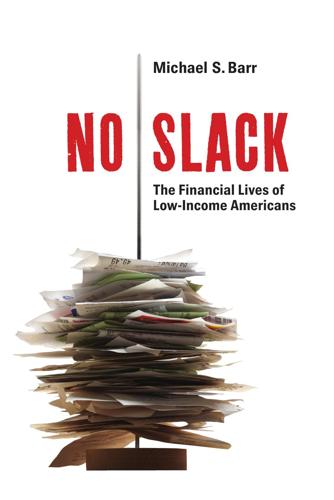
No Slack: The Financial Lives of Low-Income Americans
by
Michael S. Barr
Published 20 Mar 2012
One of the major lessons of modern psychological research is the impressive power that the situation exerts, along with a persistent tendency to underestimate that power relative to the presumed influence of intention, education, or personality traits. In his now-classic obedience studies, for example, Stanley Milgram (1974) shows how decidedly mild situational pressures suffice to generate persistent willingness, against their own wishes, on the part of individuals to administer what they believe to be grave levels of electric shock to innocent subjects. Context is made all the more important because individuals’ predictions about their behavior in the future are often made in contexts different from those in which they later find themselves.
…
Charging Ahead: The Growth and Regulation of Payment Card Markets. Cambridge University Press. 12864-11_CH11_3rdPgs.indd 277 3/23/12 11:57 AM 278 michael s. barr, sendhil mullainathan, and eldar shafir ———. 2007. “Bankruptcy Reform and the ‘Sweat Box’ of Credit Card Debt.” University of Illinois Law Review 2007:375–404. Milgram, Stanley. 1974. Obedience to Authority. New York: Harper & Row. Mullainathan, Sendhil, and Eldar Shafir. 2009. “Savings Policy and Decisionmaking in Low-Income Households.” In Insufficient Funds: Savings, Assets, Credit, and Banking among Low-Income Households, edited by Rebecca M. Blank and Michael S.
…
See also Fees, financial services Florida, pawnshop regulation, 140 Gan, Li, 183 Garnishment regulation, electronic benefit programs, 87 Geographic access model, banking services: overview, 9–10, 115–17; data descriptions, 119–21; estimation results, 122–31; methodology, 117–19 Gold seal approach, banking behavior, 272–73 Gross, David, 183 Hardship correlations: overview of survey data, 37–38, 46, 48; alternative financial services usage, 149–51; bank account ownership, 56; bankruptcy filings, 180–81, 192, 194–96; in financial transactions costs model, 76–77 Hausman test, interpretation validity, 183 Home mortgages, bankruptcy filers, 189 Home mortgages, behaviorally informed regulation: broker incentives, 176, 265–66; disclosure policies, 175–76, 257–61; Dodd-Frank Act provisions, 266–67; opt-out systems, 261–65 Home mortgages, pricing: overview, 10–12, 156–58, 175–76; broker-related patterns, 165, 173–75; creditworthiness measures, 162–63; fees, 166, 168–69, 172; interest rates, 163, 165–66, 167–69; owner demographics, 159–62; policy implications, 175–76, 285; 3/23/12 11:58 AM 292 race-related patterns, 166–75; summary of characteristics, 164, 168–71 Home ownership, survey overview, 42–43 H&R Block, 141 Hurst, Erik, 173, 182–83, 192 Income levels, correlations: asset holdings, 43, 49; bank account ownership, 30, 56; bankruptcy filings, 185–87, 193–94; in financial transactions costs model, 55, 60–61, 68–77; in geographic access model, 119; home ownership, 159, 161–62; in payment card choice model, 102–03; saving behaviors, 40–41, 271–72; short-term credit usage, 147 Income levels, survey sample, 28 Income receipt methods, 34–36, 64 Institutional power element, human behavior, 250–52 Interest rates: broker correlations, 156, 157, 173–75, 266; market-consumer bias conflicts, 252–53; pawnshop regulation, 139–40; payday loan regulation, 137, 138; race-related patterns, 157, 167–72, 173, 265; refund anticipation loans, 140–41, 142 Jackson, Howell, 173 Keys, Benjamin, 181 Knowledge and attitudes, financial activity correlations, 150–51, 196–99 Knowledge element, human behavior, 249–50 Koehler, Derek, 247 Laibson, David, 223 Life insurance, 42, 146 Lifeline banking programs, 54 Loading methods, payment card preferences, 99, 102 Loss aversion explanation, overwithholding, portfolio allocation model, 224, 234–36 Mann, Ronald, 183–84 Marital status, correlations: bankruptcy filings, 184, 185; home ownership, 159; short-term credit usage, 147 Marital status, survey sample, 28 Market bias dimension, in behaviorally informed policymaking model: over- 12864-14_Index.indd 292 index view, 252–57, 281–82; credit cards, 267–70; home mortgages, 257–66; savings programs, 272–73 Market-structure theory, bankruptcy filings, 183 Medical expenses: bankruptcy filers, 180–81, 189, 194–95; mortgage payment delays, 163; occurrence statistics, 37–38, 149; payday lending, 46–47; saving behaviors, 41, 42 Mental accounting: as human behavior element, 248–49; in overwithholding model, 223, 234–35 Michigan, payday lending regulation, 138 Milgram, Stanley, 247 Military personnel, payday lending regulation, 137 Minnesota, rent-to-own regulation, 142 Mobile payment systems, 92–93 Money orders, 37, 57, 65 Mortgages, home. See home mortgage entries MyAccountCard, 91 Net worth, low-income households. See Asset holdings New York, payday lending regulation, 138 Nonpecuniary costs, financial transactions, 55–56, 75–76 North Carolina, refund anticipation loan regulation, 142 Obama, Barack (and administration), 279, 284 Office of the Comptroller of Currency (OCC), 141, 144–45 Opt-out systems, 18, 261–65, 269 Overdrafts: as nonbanking factor, 30, 77–78, 97; regulatory framework, 144–46; usage patterns, 23, 45–46, 65, 66, 147 Overwithholding—as saving behavior, 38, 40, 207, 213 Overwithholding—portfolio allocation model: asset-holding groups, 226–30; explanatory limitations, 230–39; methodology, 219–26; optimum level calibration, 239–42; policy implications, 242–43.
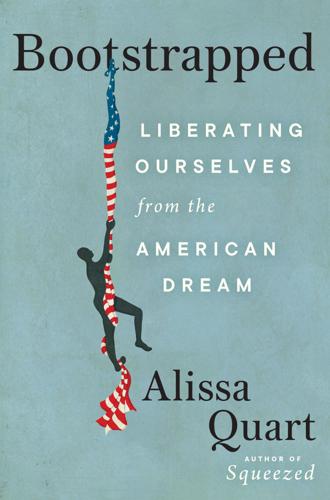
Bootstrapped: Liberating Ourselves From the American Dream
by
Alissa Quart
Published 14 Mar 2023
Lerner and his colleagues concluded from the actions of the study’s participants—and those of people generally—that there is a strong need to believe that other people get what they deserve. Inspired by the experiments of the controversial social psychologist Stanley Milgram, they were driven to understand “how societies which produce cruelty and suffering maintain even minimal popular support.” Lerner observed that we cling to our belief in a just world, as we adhere to the bootstrapping myth, to help our systems of value appear “stable and orderly.” “If observers can attribute the victim’s suffering to something the victim did or failed to do, they will have less need to devalue his personal characteristics (other things being equal),” Lerner and scholar Carolyn H.
…
The women proceeded to watch a videotape of that other woman, also called a “confederate” in the paper that resulted from this research, being “strapped to the ‘shock apparatus,’” attempting to learn nonsense syllables. During this process, the victim received several apparently painful electric “shocks” from a researcher named Dr. Stewart when she answered incorrectly. The victim twisted in agony and exclaimed, which Lerner noted was “a very effective performance.” After viewing the tape, the students were given a range of instructions depending on which version of the experiment they had been assigned. The result: most of the seventy-two women who had watched a stranger receive shocks characterized the woman negatively. Lerner and his colleagues concluded from the actions of the study’s participants—and those of people generally—that there is a strong need to believe that other people get what they deserve.
…
See personal protective equipment (PPE) Mason, Lilliana, 74 McDonald, Jared, 74–77, 245n McDonald’s, 53, 118 McGhee, Heather, 79–80 McMindfulness: How Mindfulness Became the New Capitalist Spirituality (Purser), 92, 249n Mean Girl: Ayn Rand and the Culture of Greed (Duggan), 46, 50, 241n media extinction event, 260n media influence, x, 62, 80–81, 111, 127–28, 175, 215, 218, 221 Economic Hardship Reporting Project, vii–viii reporters, xii, 27, 73, 93, 166, 221, 239n, 250n Medicaid, 36, 105, 108–9, 114–15, 200, 205–6, 224 Medicare, 47, 112 Medicare for All, 112 meditation, 85–91, 98, 247–48n, 250n Mehta, Apoorva, 138, 148 Mehta, Jal, 95 meritocracy, 8, 56, 67, 246n and “just world” hypothesis, 65–67, 244n middle class, 4–5, 40, 54–56, 80, 113, 161, 253n in January 6 riot, 246n lack of childcare, 119–32 worker cooperatives, 181–84 Milgram, Stanley, 66 Miller, Brian, 75 Mills, C. Wright, 92 The Mindful Cranks (TV show), 93 “The Mindful Revolution” (2014, Time magazine), 86 mindfulness, 85–99, 247–48n, 250n minimum wage, 11, 22, 133, 139, 147, 180 Fight for $15, 134–35 The Mismeasure of Women (Tavris), 30 misogyny, 72, 252n MomsRising, 131 Moon, Michael, 42 Moore, Michael, 40 moral injury, xi, 15, 59, 85, 104–5, 223, 245n, 262n moral judgments, 7, 35, 55, 67–68, 125, 162, 171, 209, 251n Mothers (Rose), 121 Murphree, Nimrod, 5–6, 239n Murray, Patty, 132 Musk, Elon, 59–60, 243n mutual aid, 8, 180–90, 215–17, 224, 229–31 networks of, 109, 141, 165–77, 193–95, 206, 256n, 258n Mutual Aid: A Force for Evolution (Kropotkin), 170–74 Nackenoff, Carol, 41, 240n Nassetta, Christopher, 57 National Business Products, 53–55 National Call for Moral Revival, 251n National Young Farmers Coalition, 223 Neel, Alice, 221–22, 260n Nembhard, Jessica Gordon, 184–90 networks, 16, 156, 206, 219, 248n of mutuality, 11, 109, 141, 166–67, 175, 186, 193–95, 258n New Deal, 28, 48, 186, 240n Newfield, Christopher, 19 New Mindful Deal, 97, 250n New York City, 43 Nixon, Richard, 125 nonprofits, 175, 180, 206, 221–22, 259 author experience of, vii, 154, 189, 200, 220, 227–31 Beta-Local, 221 Gig Workers Collective, 141 Occupy Wall Street, 211 Patriotic Millionaires, 55, 155–62 Positive and Adverse Childhood Experiences (PACE), 191 Search Inside Yourself Leadership Institute (SIYLI), 92 US Federation of Worker Cooperatives, 180 Norton, Michael I., 57, 242n Obama, Barack, 9, 74, 109, 242n Ocasio-Cortez, Alexandria, 9, 167, 171, 181, 218 Occupational Safety and Health Administration (OSHA), 44, 104 Occupy Wall Street, 176, 211 O’Connor, Frank, 47 Ohanian, Alexis, 141 Olasky, Marvin, 125, 252n Oppen, George, 7 Orfalea, Paul, 56 Organisation for Economic Co-operation and Development (OECD), 126, 254n Osage Diminished Reserve, 33 Oscar Mayer, 153–54 Out of Sheer Rage (Dyer), 24 ownership, 33–34, 37, 90, 179–82, 184, 187, 211 and homeownership, 153–56, 247n PACEs (Positive and Adverse Childhood Experiences), 191–95 paid family leave, 11, 106, 132, 151n Pandemic Book of World Records, 57 pandemic effects on American Rescue Plan, 219–20 on billionaires, 57–60, 243n, 254n, 260n on business/employment, 73–74, 88, 104, 106–7, 137–40, 143–48, 227–30, 260n on caregiving, xii, 117–23, 127, 130–33, 176–77 on community-mindedness, xi, 5, 9, 167–70, 174, 183–86, 206–8, 222–25, 228–30, 257n on COVID pay, 140–41 on essential workers, xi, 95, 106, 120, 138–39, 147–48, 167 on Go Fund Me, 8, 103–15, 250–51n on healthcare workers, 205–9 on healthcare/Medicaid, 36, 105, 108–9, 114–15, 200, 224 on housing, 184–86, 260n on mindfulness industry, 88, 94–95, 98, 249n on mutual aid collectives, 9–13, 165–70, 217–18, 220–24 on personal protective equipment (PPE), xi, 72, 138, 146, 168, 205–8 on politics, xii, 80, 112–15, 218–21 on psychotherapy, 196–200 on Stimulus Bill, 132–34 on students, 110–11, 251n on tax reform, 158–61 on volunteerism, 205–15 on women, 63, 120–23, 128–30, 251–52n on worker cooperatives, 180–84, 189–90 on worker health and safety risks, 138–40, 147–48, 182, 189, 193, 199, 201 Zoom and, 86, 106, 123, 182, 202, 229 Pandemic Impact on Development—Early Childhood Project, 121, 252n pandemic profits, 57–59, 146, 243n, 253n, 255n, 260n Papa John’s, 58, 242n ParentsTogether, 131 Parrington, Vernon, 34 Participatory Budgeting (PB), 206, 210–15 Patel, Vikram, 199, 259n Patient Advocate Foundation, 105 Patriotic Millionaires, 55, 155–62, 254n Paul the Peddler (Alger), 40 Payne, Erica, 158 PB (Participatory Budgeting), 206, 210–15 Peale, Norman Vincent, 44 People Powered, 211–12 personal protective equipment (PPE), xi, 72, 138, 146, 168, 205–8 Get Us PPE (Chicago), 208 philanthropy, 8, 14, 158, 160–63, 210–15, 220–22, 254n Piff, Paul, 67 Piketty, Thomas, 57, 242n pioneer spirit, 14, 198, 238n “pluck,” 29, 39, 95, 198, 240n Poor People’s Campaign, 114 Poor Richard’s Almanack, 43 Positive and Adverse Childhood Experiences (PACEs), 191–95 Postmates, 146 The Power of Positive Thinking (Peale), 75 Prairie Fires: The American Dreams of Laura Ingalls Wilder (Fraser), 33 Prince, Stephen, 53–56, 68–69 The Privatized State (Cordelli), 241n privilege, 33, 40, 54–58, 67, 72, 76, 129–30, 230 and Forbes 400, 61 silence of, 157 The Problem with Work (Weeks), 130 progressive policy, 9, 11–12, 80, 167, 220, 255n Prout, Katie, 200 Pryor, Eva, 47 Pugh, Allison, 126 Pull (Laird), 9 Purser, Ron, 92–94, 249n Racine Advocate, 6 racism, 32, 64, 68, 82, 143–44, 156 as built-in bias, 124, 185–88, 206, 237n and racial justice, 156, 182, 247n Radical Happiness: Moments of Collective Joy (Segal), 98 Ragged Dick (Alger), 39–41, 240n rags-to-riches stories, 40, 44, 168 Rand, Ayn, 45–50 Alan Greenspan and, 47 Atlas Shrugged, 45–46 Capitalism: The Unknown Ideal, 47 The Fountainhead, 45, 49, 241n Mean Girl: Ayn Rand and the Culture of Greed (Duggan), 46, 50, 241n Roark Capital Group, 47 Rosenbaum, Alisa Zinovyevna (birth name), 48 Rapid Assessment of Pandemic Impact on Development—Early Childhood Project (RAPID-EC), 120–21, 133, 252n Read, James, 19–20, 237n Reagan, Ronald, 7, 19, 35, 44, 47, 68–69, 218, 236n Reddit, 140–41, 166 Reich, Robert, 58, 218 “relational autonomy,” 230, 261n rent, 58, 107–8, 118–20, 166, 221, 260n and antirent protest, 33, 224, 256n reporters, xii, 27, 73, 93, 166, 221, 239n, 250n Republicanism, x, 11, 44, 58, 74–77, 79, 109, 125, 160, 241n, 245n See also Reagan; Trump resilience, 96, 192–94, 201 Resource Generation, 155–56 responsibility, viii–ix, 4, 81–82, 121, 128, 260n Rich, Adrienne, 117 Richison, Chad, 57 Ridgeway, Cecilia, 67 right wing, 50, 54, 83 risk, 138–40, 147–48, 182, 189, 193, 199, 201, 206–7 Roark Capital Group, 47 Romanticism, 13, 15–16, 36, 199, 239n Roosevelt, Franklin Delano, 28 Roosevelt Institute, 34 Rose, Jacqueline, 121 Ross, Kristin, 176–77, 257n Rowe-Finkbeiner, Kristin, 131 Rowson, Susanna, 22–23, 238n Roy, Katica, 120, 252n “rugged individualism,” 14, 27–29, 32, 238n Rugged Individualism and Collective (In)action During the COVID-19 Pandemic (2020, Bazzi), 36 Rural Manhood, 236n Russell Sage Foundation, 260n Russian Revolution, 48 Sandberg, Sheryl, 46, 61, 127–28, 245 Sandefur, Timothy, 83 Sanders, Bernie, 11, 60–61, 97, 112–13, 237n Saujani, Reshma, 131 school lunches, 23, 78, 108–11, 114–15, 224 Schulz, Kathryn, 19 Schwartz, Tony, 40 Scott, MacKenzie, 162 Search Inside Yourself Leadership Institute (SIYLI), 92 security, 62, 126, 130, 147–48, 254n as Social Security, 47–48, 105, 108–9, 130–32, 222, 254n Segal, Lynne, 98, 261n Self-Evaluation and Psychotherapy in the Market System (Glantz and Bernhard), 198, 259n Self-Help Cooperative Movement, 187 self-made man, 3–7, 11, 14, 21, 40, 72–78, 104, 129, 236n Frederick Douglass: Self-Made Man (Sandefur), 83–84, 247n Horatio Alger and the Closeting of the Self-Made Man (Martel), 42–45 and women, 61–64 “Self-Made Men” (Douglass, lecture), 83–84 The Self-Made Myth: And the Truth About How Government Helps Individuals and Businesses Succeed (Miller and Lapham), 75–76 self-reliance, 4, 19, 30, 58–60, 194, 248n in Alger, 42, 48 author experience of, 20–24 in Ayn Rand, 46–48 in Darwin, 173–74 in Emerson, 13–22 impossibility of, vii–xii Limits of Self-Reliance, The (Read), 19, 237n Seligman, Martin, 91, 251n Sen, Rinku, 168, 256n service.
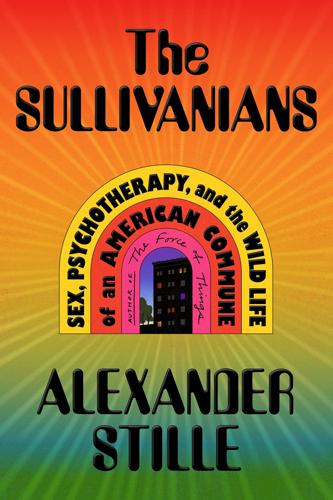
The Sullivanians: Sex, Psychotherapy, and the Wild Life of an American Commune
by
Alexander Stille
Published 19 Jun 2023
It is not an accident that the Sullivan Institute got its start in the 1950s and ’60s, when psychoanalysis was at the height of its prestige and authority and when psychologists frequently felt empowered to try out their pet theories on real people without much regard to the ethical consequences. The Robbers Cave experiment (1954) pitted children against each other in adversarial groups to study the origins of intergroup conflict, with surprisingly explosive results. In 1963, Stanley Milgram had his subjects administer high-voltage electric shocks (or believe they were doing so) to other people in order to test how far they would go in inflicting pain out of deference to authority. In the first of his experiments, two-thirds of the subjects were willing to deliver the highest level of shock. This might explain why, despite signs of obvious pain and trauma, trainees of the Sullivan Institute continued to push their patients to dump their spouses, send their children away, and cut off their families.
…
It is not coincidental that the Sullivanian experiment began in an era when psychoanalysis was at the height of its prestige. Psychologists felt emboldened to try out their theories in ways that would never pass muster today with any academic ethics board. The Robbers Cave experiment (1954) pitted groups of boys into opposing camps that resulted in a kind of Lord of the Flies degree of group hostility. Stanley Milgram’s famous obedience experiments (1963) encouraged participants to inflict pain on others—to see how far they would go in obeying authority. In the Stanford Prison Experiment (1971), a psychology professor created a simulated prison in which students were asked to be either prisoners or guards, leading to disturbing levels of cruel and sadistic behavior.
…
Usually I am struggling to get out of the group, and she has some kind of enormous control over my life. Not everyone had that experience, but that was my experience.” He considers it part of the particular ethos of the group to have made most of its members simultaneously victims and perpetrators. As a psychologist, and simply as a person, Cohen feels that he learned an enormous amount from a deeply painful experience—albeit at great cost. “I feel that I’ve been fortunate in some strange way to have had the experience of being brainwashed. I mean, to see the world in a certain way and then come out of it. I really began to see my family as destructive and evil, and they were not.
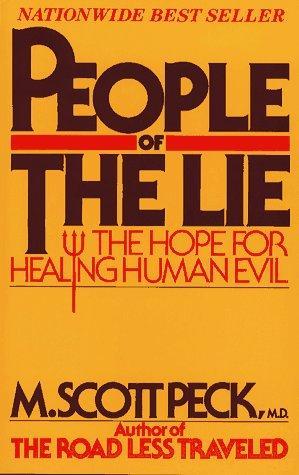
People of the Lie: The Hope for Healing Human Evil
by
M Scott Peck
Published 1 Jan 1983
.* *Even civilians will commit evil with remarkable ease under obedience. As David Myers described in his excellent article “A Psychology of Evil” (The Other Side [April 1982], p. 29): “The clearest example is Stanley Milgram’s obedience experiments. Faced with an imposing, close-at-hand commander, sixty-five percent of his adult subjects fully obeyed instructions. On command, they would deliver what appeared to be traumatizing electric shocks to a screaming innocent victim in an adjacent room. These were regular people—a mix of blue-collar, white-collar and professional men. They despised their task. Yet obedience took precedence over their own moral sense.”
…
Conversion to a belief in Satan is no different. I had read Martin’s book before witnessing my first exorcism, and while I was intrigued, I was hardly convinced of the devil’s reality. It was another matter after I had personally met Satan face-to-face. There is no way I can translate my experience into your experience. It is my intent, however, that, as a result of my experience, closed-minded readers will become more open-minded in relation to the reality of evil spirit. Finally, on the basis of two cases alone, I am simply not able to offer a broad, in-depth, scientific presentation on the subjects of evil spirit, possession, and exorcism.
…
In the middle of the other exorcism, when asked whether the possession was by multiple spirits, the patient with hooded, serpentine eyes answered quietly, almost in a hiss, “They all belong to me. As the title of a recent article asks, “Who in the hell is Satan?” I don’t know. The experience of two exorcisms is hardly sufficient for one to unravel all the mystery of the spiritual realm. Nor would the experience of a hundred be sufficient. But I think I now know a few things about Satan and also have the basis to make a few speculations. While my experience is insufficient to prove Judeo-Christian myth and doctrine about Satan, I have learned nothing that fails to support it. According to this myth and doctrine, in the beginning Satan was God’s second-in-command, chief among all His angels, the beautiful and beloved Lucifer.

Ten Arguments for Deleting Your Social Media Accounts Right Now
by
Jaron Lanier
Published 28 May 2018
We only survive by getting along with family members and others. Social concerns are not optional features of the human brain. They are primal. The power of what other people think has proven to be intense enough to modify the behavior of subjects participating in famous studies like the Milgram Experiment and the Stanford Prison Experiment. Normal, noncriminal people were coerced into doing horrible things, such as torturing others, through no mechanism other than social pressure. On social networks, the manipulation of social emotions has been the easiest way to generate rewards and punishments. That might change someday, if drones start dropping actual candy from the sky when you do what the algorithm wants, but for now it’s all about feelings that can be evoked in you—mostly, feelings regarding what other people think.
…
Addictive pleasure and reward patterns in the brain—the “little dopamine hit” cited by Sean Parker—are part of the basis of social media addiction, but not the whole story, because social media also uses punishment and negative reinforcement. Various kinds of punishment have been used in behaviorist labs; electric shocks were popular for a while. But just as with rewards, it’s not necessary for punishments to be real and physical. Sometimes experiments deny a subject points or tokens. You are getting the equivalent of both treats and electric shocks when you use social media. Most users of social media have experienced catfishing4 (which cats hate), senseless rejection, being belittled or ignored, outright sadism, or all of the above, and worse.
…
Recall that Component C of BUMMER—Cramming experiences into your life—means that algorithms determine what you see. That means you don’t know what other people are seeing, because Component C is calculating different results for them. You can’t know how much the worldviews of other people are being biased and shaped by BUMMER. Personalized search, feeds, streams, and so on are at the root of this problem. Suppose an old-time behaviorist placed a row of caged dogs in a lab, each dog getting treats or electric shocks, depending on what that dog just did. The experiment would work only if each dog got stimuli tied to that dog’s specific behavior.
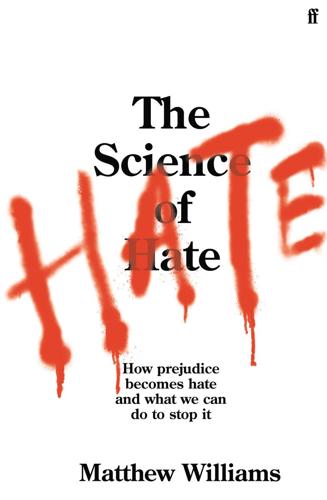
The Science of Hate: How Prejudice Becomes Hate and What We Can Do to Stop It
by
Matthew Williams
Published 23 Mar 2021
A team of psychologists from Harvard, Columbia and Michigan State universities devised a study to test whether learned fears were more difficult to unlearn if the source of that fear was a black male. The first stage of their experiment involved administering electric shocks to test subjects as they viewed images of black and white female and male faces, while monitoring galvanic skin responses – a physiological measure of fear. Naturally, every time a subject was shocked they registered fear. The second stage showed the same faces but without the electric shock. The galvanic skin responses in this stage showed that fear continued to be felt in response to seeing black male faces only, in the absence of the electric shock. The study concluded a bad experience with a black male is harder to forget than the same bad experience with anyone else.3 As this study suggests, it is possible the memory of my attack was made more powerful because of the race of the perpetrators.
…
Deindividuation is a psychological process whereby the individual feels divested of responsibility because they perceive themselves to be part of a larger group. In war, the notion is that failing to kill the enemy will not only endanger yourself, but your unit. Displacement of responsibility onto an authority figure, the psychological process of conformity identified by Stanley Milgram, allows soldiers to divest themselves of guilt when the decision to kill is made by a superior officer. Finally, and arguably most disturbingly, dehumanisation involves seeing the enemy as subhuman. The enemy are envisaged as cockroaches, vermin and parasites, and their behaviours and beliefs are placed in direct opposition to those of the soldiers.
…
Abdallah, Abdalraouf, 1 Abedi, Salman, 1, 2, 3, 4 abortion, 1, 2 Abu Sayyaf Group, 1 abuse, 1, 2, 3, 4, 5 accelerants to hate, 1, 2, 3, 4, 5, 6, 7, 8, 9, 10 accelerationists, 1 addiction, 1, 2, 3, 4 Admiral Duncan bar, 1 adolescence, 1, 2, 3, 4, 5, 6, 7 advertising, 1, 2, 3, 4, 5 African Americans, 1, 2, 3, 4, 5, 6, 7 afterlife, 1, 2 age, 1, 2 aggression: brain and hate, 1, 2, 3, 4, 5; false alarms, 1; group threat, 1, 2, 3, 4, 5, 6; identity fusion, 1; mortality, 1; pyramid of hate, 1; trauma and containment, 1, 2 AI, see artificial intelligence Albright, Jonathan, 1 alcohol, 1, 2, 3, 4, 5, 6, 7, 8 algorithms: far-right hate, 1, 2, 3, 4; filter bubbles and bias, 1, 2; Google, 1, 2, 3; online hate speech, 1, 2, 3, 4, 5, 6; Tay, 1, 2; tipping point, 1, 2; YouTube, 1 Algotransparency.org, 1 Allport, Gordon, 1, 2, 3, 4 Al Noor Mosque, Christchurch, 1 al-Qaeda, 1, 2 Alternative für Deutschland (AfD), 1 alt-right: algorithms, 1, 2; brain and hate, 1; Charlottesville rally, 1, 2; counter-hate speech, 1; definition, 1n; Discord, 1; Facebook, 1, 2, 3; fake accounts, 1; filter bubbles, 1, 2; red-pilling, 1, 2; social media, 1, 2; Trump, 1, 2; YouTube, 1 Alzheimer’s disease, 1 American Crowbar Case, 1 American culture, 1 American Nazi Party, 1, 2 Amodio, David, 1n amygdala: brain and signs of prejudice, 1, 2; brain tumours, 1; disengaging the amygdala autopilot, 1; hate and feeling pain, 1, 2; and insula, 1; neuroscience of hate, 1n, 2, 3, 4; parts that edge us towards hate, 1; parts that process prejudice, 1; prepared versus learned amygdala responses, 1, 2; processing of ‘gut-deep’ hate, 1; recognising facial expressions, 1n, 2; stopping hate, 1, 2; trauma and containment, 1, 2; unlearning prejudiced threat detection, 1 anger, 1, 2, 3, 4, 5, 6, 7, 8 anonymity, 1, 2 anterior insula, 1n Antifa, 1, 2n, 3 anti-gay prejudice, 1, 2, 3, 4, 5, 6, 7, 8 anti-hate initiatives, 1, 2 antilocution, 1 anti-Muslim hate, 1, 2, 3, 4, 5, 6 anti-Semitism, 1, 2, 3, 4, 5, 6 anti-white hate crime, 1 Antonissen, Kirsten, 1, 2 anxiety: brain and hate, 1, 2, 3, 4; harm of hate speech, 1; intergroup contact, 1, 2; subcultures of hate, 1, 2; trauma and containment, 1; trigger events, 1, 2 Arab people, 1, 2, 3, 4, 5, 6 Arbery, Ahmaud, 1 Arkansas, 1, 2 artificial intelligence (AI), 1, 2, 3, 4 Asian Americans, 1, 2 Asian people, 1, 2, 3, 4 assault, 1, 2, 3 asylum seekers, 1, 2, 3, 4 Athens, 1 Atlanta attack, 1 Atran, Scott, 1, 2 attachment, 1 attention, 1, 2, 3 attitudes, 1, 2, 3, 4, 5, 6 Aung San Suu Kyi, 1 austerity, 1 Australia, 1 autism, 1 averages, 1, 2 avoidance, 1, 2, 3 Bali attack, 1 Bangladeshi people, 1 BBC (British Broadcasting Corporation), 1, 2, 3 behavioural sciences, 1, 2 behaviour change, 1, 2, 3 beliefs, 1, 2, 3 Bell, Sean, 1, 2 Berger, Luciana, 1 Berlin attacks, 1 bias: algorithms, 1; brain and hate, 1, 2, 3, 4, 5, 6, 7; filter bubbles, 1; Google Translate, 1; group threat, 1, 2, 3, 4; police racial bias, 1; predicting hate crime, 1; stopping hate, 1, 2, 3; unconscious bias, 1, 2, 3, 4 Bible, 1 Biden, Joe, 1 ‘Big Five’ personality traits, 1 biology, 1, 2, 3, 4, 5, 6, 7 Birstall, 1 bisexual people, 1 Black, Derek, 1, 2 Black, Don, 1, 2, 3 blackface, 1 Black Lives Matter, 1 Black Mirror, 1n black people: author’s brain and hate, 1, 2, 3, 4, 5; brain and signs of prejudice, 1, 2; brain parts that edge us towards hate, 1; brain parts that process prejudice, 1; Charlottesville rally, 1, 2; disengaging the amygdala autopilot, 1; Duggan shooting, 1; feeling pain, 1; Google searches, 1, 2; group threat, 1, 2, 3, 4; online hate speech, 1, 2, 3, 4; police relations, 1, 2; predicting hate crime, 1, 2; prepared versus learned amygdala responses, 1; pyramid of hate, 1, 2, 3n; recognising facial expressions, 1, 2; South Africa, 1; steps to stop hate, 1, 2, 3, 4; trauma and Franklin, 1, 2, 3, 4; trigger events, 1, 2, 3; unconscious bias, 1; unlearning prejudiced threat detection, 1, 2; white flight, 1 BNP, see British National Party Bolsonaro, Jair, 1 Bosnia and Herzegovina, 1, 2 bots, 1, 2, 3, 4, 5 Bowers, Robert Gregory, 1 boys, 1, 2 Bradford, 1 brain: ancient brains in modern world, 1; author’s brain and hate, 1; beyond the brain, 1; the brain and hate, 1; brain and signs of prejudice, 1; brain damage and tumours, 1, 2, 3, 4; brains and unconscious bias against ‘them’, 1; brain’s processing of ‘gut-deep’ hate, 1; defence mechanisms, 1; disengaging the amygdala autopilot, 1; figures, 1; finding a neuroscientist and brain scanner, 1; group threat detection, 1, 2; hacking the brain to hate, 1; hate and feeling pain, 1; locating hate in the brain, 1; neuroscience and big questions about hate, 1; overview, 1; parts that edge us towards hate, 1; parts that process prejudice, 1; prepared versus learned amygdala responses, 1; recognising facial expressions, 1; rest of the brain, 1; signs of prejudice, 1; steps to stop hate, 1, 2; tipping point to hate, 1, 2, 3, 4, 5; trauma and containment, 1, 2; unlearning prejudiced threat detection, 1; where neuroscience of hate falls down, 1 brain imaging: author’s brain and hate, 1; beyond the brain, 1; the brain and hate, 1; brain and signs of prejudice, 1, 2; brain injury, 1, 2; Diffusion MRI, 1; disengaging the amygdala autopilot, 1; finding a neuroscientist and brain scanner, 1; fusiform face area, 1; locating hate in the brain, 1; MEG, 1; neuroscience of hate, 1, 2, 3; parts that process prejudice, 1; prepared versus learned amygdala responses, 1; processing of ‘gut-deep’ hate, 1; subcultures of hate, 1, 2; unconscious bias, 1 brainwashing, 1, 2 Bray, Mark, 1n Brazil, 1, 2, 3 Breivik, Anders, 1, 2 Brexit, 1, 2, 3, 4n, 5, 6, 7, 8, 9 Brexit Party, 1, 2 Brick Lane, London, 1 Britain First, 1, 2 British identity, 1, 2 British National Party (BNP), 1, 2n, 3, 4, 5 Brixton, 1 Broadmoor Hospital, 1, 2 Brooker, Charlie, 1n Brooks, Rayshard, 1 Brown, Katie, 1, 2 Brown, Michael, 1, 2 Brussels attack, 1 Budapest Pride, 1 bullying, 1, 2 Bundy, Ted, 1 burka, 1, 2, 3 Burmese, 1 Bush, George W., 1 Byrd, James, Jr, 1 California, 1, 2n, 3 Caliskan, Aylin, 1 Cambridge Analytica, 1, 2 cancer, 1, 2 Cardiff University Brain Research Imaging Centre (CUBRIC), 1, 2, 3, 4 caregiving motivational system, 1 care homes, 1, 2 Casablanca, 1 cascade effect, 1, 2 categorisation, 1, 2, 3, 4 Catholics, 1 Caucasian Crew, 1 causality, 1, 2 celebrities, 1, 2, 3, 4 censorship, 1, 2 Centennial Olympic Park, Atlanta, 1 Centers for Disease Control (CDC), 1 change blindness, 1 charity, 1, 2, 3 Charlottesville rally, 1, 2, 3n, 4 chatbots, 1, 2, 3 Chauvin, Derek, 1 Chelmsford, 1 Chicago, 1 childhood: attachment issues, 1; child abuse, 1, 2, 3; child grooming, 1; child play, 1; failures of containment, 1, 2, 3, 4; group threat, 1, 2; intergroup contact, 1, 2; learned stereotypes, 1; online hate speech, 1, 2; predicting hate crime, 1; trauma and containment, 1, 2, 3, 4, 5, 6, 7, 8, 9, 10; trigger events, 1, 2; understanding the ‘average’ hate criminal, 1; understanding the ‘exceptional’ hate offender, 1, 2, 3 China, 1, 2, 3, 4 Chinese people, 1, 2, 3 ‘Chinese virus,’ 1, 2 Cho, John, 1 Christchurch mosque attack, 1 Christianity, 1, 2, 3 cinema, 1 citizen journalism, 1 civilising process, 1 civil rights, 1, 2, 3, 4 class, 1, 2 cleaning, 1 climate change, 1, 2 Clinton, Hillary, 1, 2 cognitive behavioural therapy, 1 cognitive dissonance, 1 Cohen, Florette, 1, 2 Cold War, 1 collective humiliation, 1 collective quests for significance, 1, 2 collective trauma, 1, 2 colonialism, 1n, 2 Combat 1, 2 comedies, 1, 2, 3 Communications Acts, 1, 2 compassion, 1, 2, 3 competition, 1, 2, 3, 4, 5, 6, 7, 8 confirmation bias, 1 conflict, 1, 2, 3, 4 conflict resolution, 1, 2, 3, 4, 5 Connectome, 1 Conroy, Jeffrey, 1 Conservative Party, 1, 2, 3 conspiracy theories, 1, 2, 3 contact with others, 1, 2 containment: failures of, 1; hate as container of unresolved trauma, 1; understanding the ‘exceptional’ hate offender, 1, 2, 3 content moderation, 1, 2, 3 context, 1, 2, 3 Convention of Cybercrime, 1 cooperation, 1, 2, 3, 4, 5, 6 Copeland, David, 1, 2, 3, 4, 5, 6, 7 coping mechanisms, 1, 2, 3, 4, 5, 6, 7 Cordoba House (‘Ground Zero mosque’), 1 correction for multiple comparisons, 1, 2n ‘corrective rape’, 1, 2 cortisol, 1 Council of Conservative Citizens, 1n counter-hate speech, 1, 2, 3, 4 courts, 1, 2, 3, 4, 5, 6 COVID-19 pandemic, 1, 2, 3 Cox, Jo, 1, 2, 3 Criado Perez, Caroline, 1 crime, 1, 2, 3, 4, 5, 6, 7 Crime and Disorder Act 1998, 1n crime recording, 1, 2, 3, 4 crime reporting, 1, 2, 3, 4, 5, 6, 7 Crime Survey for England and Wales (CSEW), 1 criminal justice, 1, 2, 3 Criminal Justice Act, 1, 2n criminal prosecution, 1, 2 criminology, 1, 2, 3, 4, 5, 6 cross-categorisation, 1 cross-race or same-race effect, 1 Crusius, Patrick, 1, 2 CUBRIC (Cardiff University Brain Research Imaging Centre), 1, 2, 3, 4 cultural ‘feeding’, 1, 2, 3, 4, 5 cultural worldviews, 1, 2, 3, 4, 5, 6, 7 culture: definitions, 1; group threat, 1, 2, 3; steps to stop hate, 1, 2, 3; tipping point, 1, 2, 3, 4, 5; unlearning prejudiced threat detection, 1 culture machine, 1, 2, 3, 4, 5 culture wars, 1 Curry and Chips, 1 cybercrime, 1 dACC, see dorsal anterior cingulate cortex Daily Mail, 1, 2 Dailymotion, 1 Daily Stormer, 1, 2n Daley, Tom, 1, 2 Darfur, 1 dark matter, 1 death: events that remind us of our mortality, 1; newspapers, 1; predicting hate crime, 1; religion and hate, 1, 2; subcultures of hate, 1, 2; trigger events, 1, 2 death penalty, 1, 2 death threats, 1 decategorisation, 1 De Dreu, Carsten, 1, 2, 3, 4 deep learning, 1, 2 defence mechanisms, 1 defensive haters, 1, 2 dehumanisation, 1, 2, 3, 4, 5, 6 deindividuation, 1, 2 deindustrialisation, 1, 2, 3, 4 Democrats, 1, 2, 3 Denny, Reginald, 1 DeSalvo, Albert (the Boston Strangler), 1 desegregation, 1, 2, 3 Desmond, Matthew, 1 Dewsbury, 1, 2, 3 Diffusion Magnetic Resonance Imaging (Diffusion MRI), 1, 2 diminished responsibility, 1, 2 Director of Public Prosecutions (DPP), 1 disability: brain and hate, 1, 2; group threat, 1, 2, 3, 4, 5, 6; intergroup contact, 1; Japan care home, 1, 2; online hate speech, 1; profiling the hater, 1; suppressing prejudice, 1; victim perception, 1n Discord, 1, 2, 3, 4 discrimination: brain and hate, 1, 2; comedy programmes, 1; Google searches, 1; Japan laws, 1; preference for ingroup, 1; pyramid of hate, 1, 2, 3; questioning prejudgements, 1; trigger events, 1, 2, 3 disgust: brain and hate, 1, 2, 3, 4, 5, 6; group threat detection, 1, 2, 3; ‘gut-deep’ hate, 1, 2; Japan care home, 1; what it means to hate, 1, 2 disinformation, 1, 2, 3 displacement, 1, 2 diversity, 1, 2, 3 dlPFC, see dorsolateral prefrontal cortex domestic violence, 1, 2, 3, 4, 5, 6, 7, 8, 9, 10 Doran, John, 1, 2, 3 dorsal anterior cingulate cortex (dACC), 1, 2, 3n, 4, 5, 6, 7, 8, 9 dorsolateral prefrontal cortex (dlPFC), 1n, 2, 3 Douglas, Mary, Purity and Danger, 1 drag queens, 1 drugs, 1, 2, 3, 4, 5, 6, 7, 8, 9 Duggan, Mark, 1 Duke, David, 1 Dumit, Joe, Picturing Personhood, 1 Durkheim, Emile, 1 Dykes, Andrea, 1 Earnest, John T., 1 Eastern Europeans, 1, 2, 3 Ebrahimi, Bijan, 1, 2, 3, 4, 5, 6 echo chambers, 1, 2n economy, 1, 2, 3, 4, 5, 6 EDL, see English Defence League education, 1, 2, 3, 4 Edwards, G., 1 8chan, 1, 2 elections, 1, 2, 3, 4, 5, 6 electroencephalography, 1n elites, 1 ELIZA (computer program), 1 The Ellen Show, 1 El Paso shooting, 1 Elrod, Terry, 1 Emancipation Park, Charlottesville, 1 Emanuel African Methodist Church, Charleston, 1 emotions: brain and hate, 1, 2, 3, 4n, 5, 6, 7, 8, 9; group threat, 1; subcultures of hate, 1; trigger events and mortality, 1; what it means to hate, 1, 2, 3, 4 empathy: brain and hate, 1, 2, 3, 4, 5, 6; feeling hate together, 1; group threat, 1, 2; steps to stop hate, 1, 2, 3; subcultures of hate, 1; trauma and containment, 1 employment, 1, 2, 3, 4, 5, 6, 7 English Defence League (EDL), 1, 2n, 3 epilepsy, 1, 2, 3, 4, 5 Epstein, Robert, 1 equality, 1, 2 Essex, 1 ethnicity, 1, 2n, 3, 4 ethnic minorities, 1, 2, 3, 4, 5, 6 ethnocentrism, 1 EU, see European Union European Commission, 1, 2 European Digital Services Act, 1 European Parliament, 1, 2 European Social Survey, 1 European Union (EU): Brexit referendum, 1, 2, 3, 4n, 5; Facebook misinformation, 1; group threat, 1, 2; online hate speech, 1, 2, 3; trigger events, 1 Eurovision, 1 evidence-based hate crime, 1 evolution, 1, 2, 3, 4, 5, 6, 7, 8 executive control area: brain and hate, 1, 2, 3, 4, 5, 6, 7, 8; disengaging the amygdala autopilot, 1, 2; extremism, 1; recognising false alarms, 1; trauma and containment, 1; trigger events, 1 exogenous shocks, 1 expert opinion, 1 extreme right, 1, 2, 3, 4, 5 extremism: Charlottesville and redpilling, 1, 2; feeling hate together, 1; online hate speech, 1; perceiving versus proving hate, 1; quest for significance, 1, 2, 3; subcultures of hate, 1, 2, 3, 4, 5, 6, 7; trauma and containment, 1; trigger events, 1, 2, 3 Facebook: algorithms, 1, 2; Charlottesville rally, 1, 2; Christchurch mosque attack, 1; far-right hate, 1, 2, 3, 4, 5; filter bubbles, 1, 2; how much online hate speech, 1, 2; Myanmar genocide, 1; online hate and offline harm, 1, 2, 3; redpilling, 1; stopping online hate speech, 1, 2, 3, 4 facial expression, 1, 2, 3, 4 faith, 1, 2 fake accounts, 1, 2; see also bots fake news, 1, 2, 3, 4 false alarms, 1, 2, 3 Farage, Nigel, 1, 2 far left, 1n, 2, 3, 4 Farook, Syed Rizwan, 1 far right: algorithms, 1, 2, 3, 4; brain injury, 1; Charlottesville rally, 1, 2, 3n, 4; COVID-19 pandemic, 1, 2; Facebook, 1, 2, 3, 4, 5; filter bubbles, 1, 2; gateway sites, 1; group threat, 1, 2; red-pilling, 1; rise of, 1; stopping online hate speech, 1; subcultures of hate, 1, 2, 3, 4, 5; terror attacks, 1, 2, 3; tipping point, 1, 2; trauma and containment, 1, 2, 3, 4n; trigger events, 1, 2; YouTube, 1 fathers, 1, 2, 3 FBI, see Federal Bureau of Investigation fear: brain and hate, 1, 2, 3, 4, 5, 6, 7; feeling hate together, 1; group threat, 1, 2, 3, 4, 5; mortality, 1; online hate speech, 1, 2, 3; steps to stop hate, 1, 2; trauma and containment, 1, 2; trigger events, 1, 2, 3 Federal Bureau of Investigation (FBI), 1, 2, 3, 4, 5, 6, 7 Federation of American Immigration Reform, 1 Ferguson, Missouri, 1 Festinger, Leon, 1 fiction, 1 Fields, Ted, 1 50 Cent Army, 1 ‘fight or flight’ response, 1, 2, 3 films, 1, 2 filter bubbles, 1, 2, 3, 4 Finland, 1, 2, 3, 4, 5, 6 Finsbury Park mosque attack, 1, 2, 3 first responders, 1 Fiske, Susan, 1 Five Star Movement, 1 flashbacks, 1 Florida, 1, 2 Floyd, George, 1, 2, 3 Flynt, Larry, 1 fMRI (functional Magnetic Resonance Imaging), 1, 2, 3, 4, 5, 6, 7 football, 1, 2, 3, 4, 5 football hooligans, 1, 2 Forever Welcome, 1 4chan, 1, 2 Fox News, 1, 2 Franklin, Benjamin, 1 Franklin, Joseph Paul, 1, 2, 3, 4, 5, 6, 7, 8 Fransen, Jayda, 1 freedom fighters, 1, 2 freedom of speech, 1, 2, 3, 4, 5, 6 frustration, 1, 2, 3, 4 functional Magnetic Resonance Imaging (fMRI), 1, 2, 3, 4, 5, 6, 7 fundamentalism, 1, 2 fusiform face area, 1 fusion, see identity fusion Gab, 1 Gadd, David, 1, 2n, 3, 4 Gaddafi, Muammar, 1, 2 Gage, Phineas, 1, 2 galvanic skin responses, 1 Gamergate, 1 gateway sites, 1 gay people: author’s experience, 1, 2, 3; brain and hate, 1, 2; Copeland attacks, 1, 2; COVID-19 pandemic, 1; filter bubbles, 1; gay laws, 1; gay marriage, 1, 2, 3; group associations, 1; group threat, 1, 2, 3, 4, 5; hate counts, 1, 2, 3, 4; physical attacks, 1, 2; profiling the hater, 1; Russia, 1, 2, 3, 4, 5; Section 1, 2, 3, 4; steps to stop hate, 1, 2, 3; trigger events, 1, 2; why online hate speech hurts, 1; see also LGBTQ+ people gay rights, 1, 2, 3, 4 gender, 1, 2, 3, 4, 5, 6, 7 Generation Identity, 1 Generation Z, 1, 2 genetics, 1n, 2, 3 genocide, 1, 2, 3, 4, 5, 6 Georgia (country), 1 Georgia, US, 1, 2, 3, 4 Germany, 1, 2, 3, 4, 5, 6, 7 Gilead, Michael, 1 ginger people, 1 girls, and online hate speech, 1 Gladwell, Malcolm, 1 Global Project Against Hate and Extremism, 1 glucocorticoids, 1, 2 God, 1, 2 God’s Will, 1, 2 Goebbels, Joseph, 1 Google, 1, 2, 3, 4, 5, 6, 7, 8 Google+, 1 Google Translate, 1 goth identity, 1, 2, 3, 4 governments, 1, 2, 3, 4, 5, 6 Grant, Oscar, 1 gravitational waves, 1 Great Recession (2007–9), 1 Great Replacement conspiracy theory, 1 Greece, 1, 2 Greenberg, Jeff, 1, 2, 3 Greene, Robert, 1 grey matter, 1 Grillot, Ian, 1, 2 Grodzins, Morton, 1 grooming, 1, 2, 3 ‘Ground Zero mosque’ (Cordoba House), 1 GroupMe, 1 groups: ancient brains in modern world, 1; brain and hate, 1, 2, 3, 4; childhood, 1; feeling hate together, 1; foundations of prejudice, 1; group threat and hate, 1; identity fusion, 1, 2, 3; intergroup hate, 1; pyramid of hate, 1; reasons for hate offending, 1; steps to stop hate, 1, 2; tipping point, 1, 2, 3, 4; warrior psychology, 1, 2, 3; what it means to hate, 1, 2 group threat, 1; beyond threat, 1; Bijan as the threatening racial other, 1; context and threat, 1; cultural machine, group threat and stereotypes, 1; evolution of group threat detection, 1; human biology and threat, 1; neutralising the perception of threat, 1; overview, 1; society, competition and threat, 1; threat in their own words, 1 guilt, 1, 2, 3, 4 guns, 1, 2 ‘gut-deep’ hate, 1, 2, 3, 4 Haines, Matt, 1 Haka, 1 Halle Berry neuron, 1, 2 harassment, 1, 2, 3, 4, 5 harm of hate, 1, 2, 3, 4, 5, 6, 7 Harris, Brendan, 1 Harris, Lasana, 1 Harris, Lovell, 1, 2, 3, 4 hate: author’s brain and hate, 1; the brain and hate, 1; definitions, 1, 2; feeling hate together, 1; foundations of prejudice and hate, 1, 2, 3; group threat and hate, 1; ‘gut-deep’ hate, 1, 2; hate counts, 1; hate in word and deed, 1; profiling the hater, 1; pyramid of hate, 1; rise of the bots and trolls, 1; seven steps to stop hate, 1; subcultures of hate, 1; tipping point from prejudice to hate, 1; trauma, containment and hate, 1; trigger events and ebb and flow of hate, 1; what it means to hate, 1 hate counts, 1; criminalising hate, 1; how they count, 1; overview, 1; perceiving versus proving hate, 1; police and hate, 1; rising hate count, 1; ‘signal’ hate acts and criminalisation, 1; Sophie Lancaster, 1; warped world of hate, 1 hate crime: author’s experience, 1, 2, 3; brain and hate, 1, 2, 3, 4, 5; definitions, 1; events and hate online, 1; events and hate on the streets, 1, 2; the ‘exceptional’ hate criminal, 1; far-right hate, 1, 2, 3; foundations of prejudice and hate, 1, 2, 3, 4; group threat, 1, 2, 3, 4, 5, 6, 7, 8; hate counts, 1, 2, 3, 4, 5; laws, 1n, 2, 3, 4, 5; number of crimes, 1, 2; online hate speech, 1, 2, 3, 4; predicting hate crime, 1; profiling the hater, 1; steps to stop hate, 1, 2, 3; trauma and containment, 1, 2, 3, 4; trigger events, 1, 2, 3, 4, 5, 6; understanding the ‘average’ hate criminal, 1; understanding the ‘exceptional’ hate offender, 1; what it means to hate, 1, 2, 3 hate groups, 1, 2, 3, 4, 5 hate in word and deed, 1; algorithmic far right, 1; Charlottesville rally, 1, 2, 3n, 4; extreme filter bubbles, 1; game changer for the far right, 1; gateway sites, 1; overview, 1; ‘real life effort post’ and Christchurch, 1; red-pilling, 1 HateLab, 1, 2, 3, 4, 5 hate speech: far-right hate, 1, 2, 3; filter bubbles and bias, 1; harm of, 1; how much online hate speech, 1; Japan laws, 1; pyramid of hate, 1; stopping online hate speech, 1; Tay chatbot, 1; trigger events, 1, 2, 3; why online hate speech hurts, 1 hate studies, 1, 2 ‘hazing’ practices, 1 health, 1, 2, 3, 4 Henderson, Russell, 1 Herbert, Ryan, 1 Hewstone, Miles, 1 Heyer, Heather, 1 Hinduism, 1, 2 hippocampus, 1, 2, 3, 4 history of offender, 1 Hitler, Adolf, 1, 2, 3, 4, 5, 6, 7 HIV/AIDS, 1, 2, 3, 4, 5, 6, 7 hollow mask illusion, 1, 2 Hollywood, 1, 2 Holocaust, 1, 2, 3, 4 Homicide Act, 1n homophobia: author’s experience, 1, 2, 3, 4; brain and hate, 1, 2, 3; evidence-based hate crime, 1; federal law, 1; jokes, 1; online hate speech, 1, 2; Russia, 1, 2; Shepard murder, 1; South Africa, 1; trauma and containment, 1; victim perception of motivation, 1n Homo sapiens, 1 homosexuality: author’s experience, 1; online hate speech, 1; policing, 1; questioning prejudgements, 1; Russia, 1, 2; trauma and containment, 1, 2; see also gay people hooligans, 1, 2 Horace, 1 hormones, 1, 2, 3 hot emotions, 1 hot-sauce study, 1, 2 housing, 1, 2, 3, 4, 5, 6 Huddersfield child grooming, 1 human rights, 1, 2, 3 humiliation, 1, 2, 3, 4, 5, 6 humour, 1, 2 Hungary, 1 hunter-gatherers, 1n, 2 Hustler, 1 IAT, see Implicit Association Test identity: author’s experience of attack, 1; British identity, 1, 2; Charlottesville rally, 1, 2; children’s ingroups, 1; group threat, 1, 2; online hate speech, 1, 2, 3, 4; steps to stop hate, 1, 2 identity fusion: fusion and hateful murder, 1; fusion and hateful violence, 1; fusion and self-sacrifice in the name of hate, 1; generosity towards the group, 1; tipping point, 1, 2; warrior psychology, 1, 2, 3 ideology, 1, 2, 3, 4 illegal hate speech, 1, 2, 3, 4 illocutionary speech, 1 imaging, see brain imaging immigration: Forever Welcome, 1; group threat, 1, 2, 3, 4, 5, 6, 7; hate counts, 1n, 2; HateLab Brexit study, 1; identity fusion, 1; intergroup contact, 1; negative stereotypes, 1; online hate speech, 1; Purinton, 1, 2; trauma and containment, 1, 2, 3; trigger events, 1, 2n, 3, 4, 5, 6, 7; YouTube algorithms, 1 immortality, 1, 2 Implicit Association Test (IAT), 1, 2, 3, 4, 5, 6, 7, 8, 9 implicit prejudice: author’s brain and hate, 1, 2, 3, 4; brain and hate, 1, 2, 3, 4, 5, 6; online hate speech, 1, 2 India, 1 Indonesia, 1 Infowars, 1, 2 Ingersoll, Karma, 1 ingroup: brain and hate, 1, 2, 3, 4; child play, 1; group threat, 1, 2, 3, 4, 5, 6, 7; HateLab Brexit study, 1; identity fusion, 1, 2; pyramid of hate, 1; reasons for hate offending, 1; trigger events, 1, 2, 3; what it means to hate, 1, 2, 3, 4, 5 Instagram, 1, 2, 3 Institute for Strategic Dialogue, 1 institutional racism, 1 instrumental crimes, 1 insula: brain and signs of prejudice, 1, 2, 3; facial expressions, 1, 2; fusiform face area, 1; hacking the brain to hate, 1; hate and feeling pain, 1; neuroscience of hate, 1n, 2, 3, 4, 5; parts that edge us towards hate, 1; parts that process prejudice, 1; processing of ‘gut-deep’ hate, 1, 2 Integrated Threat Theory (ITT), 1, 2, 3 integration, 1, 2, 3, 4 intergroup contact, 1, 2, 3 Intergroup Contact Theory, 1, 2, 3 intergroup hate, 1, 2, 3, 4 internet: algorithms, 1, 2; chatbots, 1; counterhate speech, 1; COVID-19 pandemic, 1; far-right hate, 1, 2, 3, 4, 5, 6, 7; filter bubbles, 1, 2, 3; Google searches, 1; hate speech harm, 1; how much online hate speech, 1; online news, 1; reasons for hate offending, 1; rise of the bots and trolls, 1; stopping online hate speech, 1; tipping point, 1, 2, 3; training the machine to count hate, 1; why online hate speech hurts, 1 interracial relations, 1, 2, 3, 4 intolerance, 1, 2 Iranian bots, 1 Iraq, 1 Irish Republican Army (IRA), 1 ISIS, 1, 2, 3, 4, 5, 6, 7, 8, 9 Islam: group threat, 1; online hate speech, 1, 2, 3, 4, 5; steps to stop hate, 1, 2, 3; subcultures of hate, 1, 2, 3, 4; trigger events, 1, 2, 3 Islamism: group threat, 1; online hate speech, 1, 2, 3, 4; profiling the hater, 1; subcultures of hate, 1, 2, 3; trigger events, 1, 2, 3 Islamophobia, 1, 2, 3, 4 Israel, 1, 2, 3 Italy, 1, 2 ITT, see Integrated Threat Theory James, Lee, 1, 2, 3, 4, 5, 6 Japan, 1, 2, 3 Jasko, Katarzyna, 1 Jefferson, Thomas, 1 Jenny Lives with Eric and Martin, 1 Jewish people: COVID-19 pandemic, 1, 2; far-right hate, 1, 2, 3, 4, 5; filter bubbles, 1; Google searches, 1, 2; group threat, 1; Nazism, 1, 2; negative stereotypes, 1 2 online hate speech, 1; pyramid of hate, 1; questioning prejudgements, 1; ritual washing, 1; subcultures of hate, 1, 2; trauma and Franklin, 1, 2, 3 jihad, 1, 2, 3, 4, 5 jokes, 1, 2, 3, 4, 5, 6, 7 Jones, Alex, 1 Jones, Terry, 1 Josephson junction, 1 Judaism, 1; see also Jewish people Jude, Frank, Jr, 1, 2, 3, 4, 5 Kansas, 1 Kerry, John, 1 Kik, 1 King, Gary, 1 King, Martin Luther, Jr, 1, 2 King, Rodney, 1, 2, 3 King, Ryan, 1 Kirklees, 1, 2 KKK, see Ku Klux Klan Kuchibhotla, Srinivas, 1, 2, 3, 4 Kuchibhotla, Sunayana, 1, 2 Ku Klux Klan (KKK), 1, 2, 3n, 4, 5, 6, 7 Labour Party, 1, 2, 3 Lancaster, Sophie, 1, 2 language, 1, 2, 3, 4, 5, 6, 7 LAPD (Los Angeles Police Department), 1 Lapshyn, Pavlo, 1 Lashkar-e-Taiba, 1 Las Vegas shooting, 1, 2 Latinx people, 1, 2, 3, 4, 5, 6, 7 law: brain and hate, 1, 2, 3; criminalising hate, 1; hate counts, 1, 2, 3; Kansas shooting, 1; limited laws, 1; online hate speech, 1; pyramid of hate, 1 Law Commission, 1 Lawrence, Stephen, 1 learned fears, 1, 2, 3 Leave.EU campaign, 1, 2 Leave voters, 1, 2, 3n Lee, Robert E., 1, 2, 3 left orbitofrontal cortex, 1n, 2n Legewie, Joscha, 1, 2, 3, 4 lesbians, 1, 2 Levin, Jack, 1 LGBTQ+ people, 1, 2, 3, 4, 5, 6, 7, 8, 9, 10, 11, 12, 13, 14, 15, 16, 17; see also gay people LIB, see Linguistic Intergroup Bias test Liberman, Nira, 1 Liberty Park, Salt Lake City, 1, 2 Libya, 1, 2, 3, 4 Light, John, 1 Linguistic Intergroup Bias (LIB) test, 1 Liverpool, 1, 2 Livingstone, Ken, 1, 2 Loja, Angel, 1 London: author’s experience of attack, 1; Copeland nail bombing, 1, 2; Duggan shooting, 1; far-right hate, 1; group threat, 1, 2, 3; online hate speech, 1, 2; Rigby attack, 1; terror attacks, 1, 2, 3, 4, 5, 6 London Bridge attack, 1, 2, 3 London School of Economics, 1 ‘lone wolf’ terrorists, 1, 2, 3, 4 long-term memory, 1, 2, 3, 4 Loomer, Laura, 1 Los Angeles, 1 loss: group threat, 1; subcultures of hate, 1, 2, 3, 4; tipping point, 1; trauma and containment, 1, 2, 3, 4, 5 love, 1, 2 Love Thy Neighbour, 1 Lucero, Marcelo, 1, 2 Luqman, Shehzad, 1 ‘Macbeth effect’, 1 machine learning, 1 Madasani, Alok, 1, 2, 3 Madrid attack, 1, 2 Magnetic Resonance Imaging (MRI): Diffusion MRI, 1, 2; functional MRI, 1, 2, 3, 4, 5, 6, 7 magnetoencephalography (MEG), 1, 2, 3 Maldon, 1 Malik, Tashfeen, 1 Maltby, Robert, 1, 2 Manchester, 1, 2 Manchester Arena attack, 1, 2, 3, 4, 5, 6 marginalisation, 1, 2 Martin, David, 1 Martin, Trayvon, 1, 2 MartinLutherKing.org, 1, 2 martyrdom, 1, 2, 3, 4n masculinity, 1, 2, 3, 4, 5 The Matrix, 1 Matthew Shepard and James Byrd Jr Hate Crimes Prevention Act, 1n, 2n Matz, Sandra, 1 Mauritius, 1 McCain, John, 1 McDade, Tony, 1 McDevitt, Jack, Levin McKinney, Aaron, 1 McMichael, Gregory, 1 McMichael, Travis, 1 media: far-right hate, 1, 2; group threat, 1, 2, 3; steps to stop hate, 1, 2, 3, 4, 5, 6; stereotypes in, 1, 2; subcultures of hate, 1; trigger events, 1 Meechan, Mark, 1 MEG (magnetoencephalography), 1, 2, 3 memory, 1, 2, 3, 4, 5, 6, 7 men, and online hate speech, 1 men’s rights, 1 mental illness, 1, 2, 3, 4, 5, 6 mentalising, 1, 2, 3 meta-analysis, 1 Metropolitan Police, 1 Mexican people, 1, 2, 3, 4 micro-aggressions, 1, 2n, 3, 4, 5, 6 micro-events, 1 Microsemi, 1n Microsoft, 1, 2, 3, 4, 5, 6 micro-targeting, 1, 2 Middle East, 1, 2 migration, 1, 2, 3, 4, 5, 6, 7; see also immigration Milgram, Stanley, 1 military, 1 millennials, 1 Milligan, Spike, 1 Milwaukee, 1, 2, 3 minimal groups, 1 Minneapolis, 1, 2, 3 minority groups: far-right hate, 1, 2; group threat, 1, 2, 3, 4, 5; police reporting, 1; questioning prejudgements, 1; trauma and containment, 1; trigger events, 1, 2 misinformation, 1, 2, 3, 4, 5, 6 mission haters, 1, 2, 3 mobile phones, 1, 2, 3 moderation of content, 1, 2, 3 Moore, Nik, 1 Moore, Thomas, 1 Moores, Manizhah, 1 Moore’s Ford lynching, 1 Moradi, Dr Zargol, 1, 2, 3, 4, 5, 6 Moral Choice Dilemma tasks, 1, 2, 3 moral cleansing, 1, 2, 3 moral dimension, 1, 2, 3, 4 moral outrage, 1, 2, 3, 4, 5 Moroccan people, 1, 2 mortality, 1, 2, 3 mortality salience, 1, 2, 3, 4, 5 Moscow, 1 mosques, 1, 2, 3, 4, 5, 6, 7 Moss Side Blood, 1 mothers, 1, 2, 3, 4, 5, 6 motivation, 1n, 2, 3, 4, 5, 6 Mphiti, Thato, 1 MRI, see Magnetic Resonance Imaging Muamba, Fabrice, 1 multiculturalism, 1, 2, 3, 4 murder: brain injury, 1, 2; group threat, 1, 2, 3; hate counts, 1; identity fusion and hateful murder, 1; police and hate, 1, 2; profiling the hater, 1; trauma and containment, 1, 2, 3, 4, 5 Murdered for Being Different, 1 music, 1, 2, 3 Muslims: COVID-19 pandemic, 1; far-right hate, 1, 2, 3, 4; Google searches, 1; group threat, 1, 2, 3, 4, 5, 6; negative stereotypes, 1; online hate speech, 1, 2; profiling the hater, 1, 2; Salah effect, 1; subcultures of hate, 1, 2, 3; trigger events, 1, 2, 3, 4, 5; and Trump, 1, 2, 3, 4n, 5, 6n Mvubu, Themba, 1 Myanmar, 1, 2 Myatt, David, 1 Nandi, Dr Alita, 1 National Action, 1 National Consortium for the Study of Terrorism and Responses to Terrorism, 1 national crime victimisation surveys, 1, 2 National Front, 1, 2, 3 nationalism, 1, 2 National Socialist Movement, 1, 2, 3, 4 natural experiments, 1, 2 Nature: Neuroscience, 1 nature vs nurture debate, 1 Nazism, 1, 2, 3, 4, 5, 6, 7, 8 NCVS (National Crime Victimisation Survey), 1, 2 negative stereotypes: brain and hate, 1, 2; feeling hate together, 1, 2; group threat, 1, 2, 3, 4, 5, 6; steps to stop hate, 1, 2, 3, 4, 5; tipping point, 1 Nehlen, Paul, 1 neo-Nazis, 1n, 2, 3, 4, 5, 6 Netherlands, 1, 2 Netzwerkdurchsetzungsgesetz (NetzDG) law, 1 neuroimaging, see brain imaging neurons, 1, 2, 3, 4, 5, 6, 7 neuroscience, 1, 2, 3, 4, 5, 6, 7, 8, 9 Newark, 1, 2 news, 1, 2, 3, 4, 5, 6, 7 newspapers, 1, 2, 3, 4 New York City, 1, 2, 3, 4, 5, 6 New York Police Department (NYPD), 1 New York Times, 1, 2 New Zealand, 1 n-grams, 1 Nimmo, John, 1 9/11 attacks, 1, 2, 3, 4, 5, 6, 7 911 emergency calls, 1 Nogwaza, Noxolo, 1 non-independence error, 1, 2n Al Noor Mosque, Christchurch, 1 Northern Ireland, 1 NWA, 1 NYPD (New York Police Department), 1 Obama, Barack, 1n, 2, 3, 4, 5, 6 Occupy Paedophilia, 1 ODIHR, see Office for Democratic Institutions and Human Rights Ofcom, 1 offence, 1, 2, 3, 4 Office for Democratic Institutions and Human Rights (ODIHR), 1, 2 Office for Security and Counter Terrorism, 1 office workers, 1 offline harm, 1, 2 Oklahoma City, 1 O’Mahoney, Bernard, 1 online hate speech: author’s experience, 1; COVID-19 pandemic, 1; far-right hate, 1, 2, 3, 4, 5; hate speech harm, 1; how much online hate speech, 1; individual’s role, 1; law’s role, 1; social media companies’ role, 1; steps to stop hate, 1; tipping point, 1, 2; training the machine to count hate, 1; trigger events, 1 Ono, Kazuya, 1 optical illusions, 1 Organization for Human Brain Mapping conference, 1 Orlando attack, 1 Orwell, George, Nineteen Eighty-Four, 1 Osborne, Darren, 1 ‘other’, 1, 2, 3, 4, 5, 6 Ottoman Empire, 1 outgroup: author’s brain and hate, 1, 2, 3; brain and hate, 1, 2, 3, 4, 5, 6, 7; child interaction and play, 1, 2; evolution of group threat detection, 1; feeling hate together, 1; group threat, 1, 2, 3, 4, 5, 6; ‘gut-deep’ hate, 1; HateLab Brexit study, 1; human biology and threat, 1; identity fusion, 1; prejudice formation, 1; profiling the hater, 1; push/pull factor, 1; pyramid of hate, 1; society, competition and threat, 1; steps to stop hate, 1, 2; tipping point, 1; trauma and containment, 1, 2, 3, 4, 5; trigger events, 1, 2, 3, 4, 5, 6, 7, 8 outliers, 1 Overton window, 1, 2, 3, 4 oxytocin, 1, 2, 3, 4 Paddock, Stephen, 1 Paddy’s Pub, Bali, 1 paedophilia, 1, 2, 3, 4, 5 page rank, 1 pain, 1, 2, 3, 4, 5, 6, 7 Pakistani people, 1, 2, 3, 4, 5 Palestine, 1 pandemics, 1, 2, 3, 4 Papua New Guinea, 1, 2, 3 paranoid schizophrenia, 1, 2 parents: caregiving, 1; subcultures of hate, 1; trauma and containment, 1, 2, 3, 4, 5; trigger events, 1, 2, 3 Paris attack, 1 Parsons Green attack, 1, 2 past experience: the ‘average’ hate criminal, 1; the ‘exceptional’ hate criminal, 1; trauma and containment, 1 perception-based hate crime, 1, 2 perception of threat, 1, 2, 3, 4, 5 perpetrators, 1, 2 personal contact, 1, 2 personality, 1, 2, 3 personality disorder, 1, 2 personal safety, 1, 2 personal significance, 1 perspective taking, 1, 2 PFC, see prefrontal cortex Philadelphia Police Department, 1 Philippines, 1 physical attacks, 1, 2, 3, 4, 5, 6, 7, 8 play, 1 Poland, 1, 2, 3 polarisation, 1, 2, 3, 4, 5 police: brain and hate, 1, 2; Duggan shooting, 1; group threat, 1, 2, 3; and hate, 1; NYPD racial bias, 1; online hate speech, 1, 2, 3, 4; perceiving versus proving hate, 1; police brutality, 1, 2, 3, 4; predicting hate crime, 1; recording crime, 1, 2, 3, 4; reporting crime, 1, 2, 3; rising hate count, 1, 2, 3; ‘signal’ hate acts and criminalisation, 1; steps to stop hate, 1, 2, 3; use of force, 1 Polish migrants, 1 politics: early adulthood, 1; far-right hate, 1, 2; filter bubbles and bias, 1; group threat, 1, 2, 3; online hate speech, 1, 2; seven steps to stop hate, 1, 2, 3, 4; trauma and containment, 1; trigger events, 1, 2, 3, 4, 5; Trump election, 1, 2 populism, 1, 2, 3, 4, 5 pornography, 1 Portugal, 1, 2 positive stereotypes, 1, 2 post-traumatic stress disorder (PTSD), 1, 2, 3, 4, 5 poverty, 1, 2, 3 Poway synagogue shooting, 1 power, 1, 2, 3, 4, 5 power law, 1 predicting the next hate crime, 1 prefrontal cortex (PFC): brain and signs of prejudice, 1; brain injury, 1; disengaging the amygdala autopilot, 1; feeling pain, 1; ‘gut-deep’ hate, 1; prejudice network, 1; psychological brainwashing, 1; recognising false alarms, 1; salience network, 1; trauma and containment, 1; trigger events, 1; unlearning prejudiced threat detection, 1, 2 prehistoric brain, 1, 2 prehistory, 1, 2 prejudgements, 1 prejudice: algorithms, 1; author’s brain and hate, 1, 2, 3, 4, 5, 6, 7; brain and hate, 1, 2, 3, 4, 5, 6, 7; brain and signs of prejudice, 1; cultural machine, 1; far-right hate, 1, 2; filter bubbles and bias, 1; foundations of, 1; Google, 2; group threat, 1, 2, 3, 4, 5, 6, 7, 8, 9; human biology and threat, 1; neuroscience of hate, 1, 2; online hate speech, 1, 2, 3; parts that process prejudice, 1; prejudice network, 1, 2, 3, 4; prepared versus learned amygdala responses, 1; pyramid of hate, 1; releasers, 1, 2; steps to stop hate, 1, 2, 3, 4; tipping point from prejudice to hate, 1; trauma and containment, 1, 2, 3, 4, 5; trigger events, 1, 2, 3, 4, 5, 6, 7, 8; Trump, 1, 2; unconscious bias, 1; unlearning prejudiced threat detection, 1; what it means to hate, 1, 2, 3, 4, 5 prepared fears, 1, 2 Prisoner’s Dilemma, 1 profiling the hater, 1 Proposition 1, 2 ProPublica, 1n, 2 prosecution, 1, 2, 3 Protestants, 1 protons, 1 psychoanalysis, 1 psychological development, 1, 2, 3, 4 psychological profiles, 1 psychological training, 1 psychology, 1, 2, 3, 4 psychosocial criminology, 1, 2 psy-ops (psychological operations), 1 PTSD, see post-traumatic stress disorder Public Order Act, 1 pull factor, 1, 2, 3, 4, 5 Pullin, Rhys, 1n Purinton, Adam, 1, 2, 3, 4, 5, 6, 7 push/pull factor, 1, 2, 3, 4, 5, 6 pyramid of hate, 1, 2 Q …, 1 al-Qaeda, 1, 2 quality of life, 1 queer people, 1, 2 quest for significance, 1, 2, 3 Quran burning, 1 race: author’s brain and hate, 1, 2, 3, 4; brain and hate, 1, 2, 3, 4, 5, 6, 7; brain and signs of prejudice, 1; far-right hate, 1, 2, 3; Google searches, 1; group threat, 1, 2, 3, 4, 5, 6, 7, 8, 9, 10; hate counts, 1, 2, 3; online hate speech, 1; predicting hate crime, 1; pyramid of hate, 1; race relations, 1, 2, 3; race riots, 1, 2; race war, 1, 2, 3, 4, 5; steps to stop hate, 1, 2, 3; trauma and containment, 1, 2, 3, 4n, 5, 6; trigger events, 1, 2; unconscious bias, 1; unlearning prejudiced threat detection, 1 racism: author’s experience, 1; brain and hate, 1, 2, 3, 4, 5, 6; far-right hate, 1, 2; group threat, 1, 2, 3, 4, 5, 6, 7, 8; Kansas shooting, 1; NYPD racial bias, 1; online hate speech, 1, 2, 3, 4; steps to stop hate, 1n, 2, 3; Tay chatbot, 1; trauma and containment, 1, 2, 3, 4, 5, 6, 7; Trump election, 1; victim perception of motivation, 1n; white flight, 1 radicalisation: far-right hate, 1, 2, 3; group threat, 1; subcultures of hate, 1, 2, 3, 4, 5; trigger events, 1 rallies, 1, 2, 3; see also Charlottesville rally Ramadan, 1, 2 rape, 1, 2, 3, 4, 5 rap music, 1 realistic threats, 1, 2, 3, 4, 5 Rebel Media, 1 rebels, 1 recategorisation, 1 recession, 1, 2, 3, 4, 5 recommendation algorithms, 1, 2 recording crime, 1, 2, 3, 4 red alert, 1 Reddit, 1, 2, 3, 4 red-pilling, 1, 2, 3, 4 refugees, 1, 2, 3, 4, 5 rejection, 1, 2, 3, 4, 5, 6 releasers of prejudice, 1, 2 religion: group threat, 1, 2, 3; homosexuality, 1; online hate speech, 1, 2, 3; predicting hate crime, 1; pyramid of hate, 1; religion versus hate, 1; steps to stop hate, 1, 2; subcultures of hate, 1, 2; trauma and containment, 1n, 2; trigger events, 1, 2, 3, 4, 5; victim perception of motivation, 1n reporting crimes, 1, 2, 3, 4, 5, 6, 7 repression, 1 Republicans, 1, 2, 3, 4, 5 research studies, 1 responsibility, 1, 2, 3 restorative justice, 1 retaliatory haters, 1, 2, 3 Reuters, 1 Rieder, Bernhard, 1 Rigby, Lee, 1 rights: civil rights, 1, 2, 3, 4; gay rights, 1, 2, 3, 4; human rights, 1, 2, 3; men’s rights, 1; tipping point, 1; women’s rights, 1, 2 right wing, 1, 2, 3, 4, 5, 6; see also far right Right-Wing Authoritarianism (RWA) scale, 1 riots, 1, 2, 3, 4 risk, 1, 2, 3 rites of passage, 1, 2 rituals, 1, 2, 3 Robb, Thomas, 1 Robbers Cave Experiment, 1, 2, 3, 4, 5, 6 Robinson, Tommy (Stephen Yaxley-Lennon), 1, 2, 3, 4 Rohingya Muslims, 1, 2 Roof, Dylann, 1, 2 Roussos, Saffi, 1 Rudolph, Eric, 1 Rushin, S,, 1n Russia, 1, 2, 3, 4, 5, 6, 7, 8 Russian Internet Research Agency, 1 RWA (Right-Wing Authoritarianism) scale, 1 Rwanda, 1 sacred value protection, 1, 2, 3, 4, 5, 6, 7, 8 Saddam Hussein, 1 safety, 1, 2 Sagamihara care home, Japan, 1, 2 Salah, Mohamed, 1, 2, 3 salience network, 1, 2 salmon, brain imaging of, 1 Salt Lake City, 1 same-sex marriage, 1, 2 same-sex relations, 1, 2, 3 San Bernardino attack, 1n, 2, 3 Scanlon, Patsy, 1 scans, see brain imaging Scavino, Dan, 1n schizophrenia, 1, 2, 3, 4 school shootings, 1, 2 science, 1, 2, 3 scripture, 1, 2 SDO, see Social Dominance Orientation (SDO) scale Search Engine Manipulation Effect (SEME), 1 search queries, 1, 2, 3, 4 Second World War, 1, 2, 3 Section 1, Local Government Act, 1, 2, 3 seed thoughts, 1 segregation, 1, 2, 3 seizures, 1, 2, 3 selection bias problem, 1n self-defence, 1, 2 self-esteem, 1, 2, 3, 4 self-sacrifice, 1, 2, 3 Senior, Eve, 1 serial killers, 1, 2, 3 7/7 attack, London, 1 seven steps to stop hate, 1; becoming hate incident first responders, 1; bursting our filter bubbles, 1; contact with others, 1; not allowing divisive events to get the better of us, 1; overview, 1; putting ourselves in the shoes of ‘others’, 1; questioning prejudgements, 1; recognising false alarms, 1 sexism, 1, 2 sexual orientation, 1, 2, 3, 4, 5, 6, 7 sexual violence, 1, 2, 3, 4, 5 sex workers, 1, 2, 3, 4 Shakespeare, William, Macbeth, 1 shame, 1, 2, 3, 4, 5, 6, 7, 8, 9 shared trauma, 1, 2, 3 sharia, 1, 2 Shepard, Matthew, 1, 2 Sherif, Muzafer, 1, 2, 3, 4, 5, 6, 7 shitposting, 1, 2, 3n shootings, 1, 2, 3, 4, 5, 6, 7, 8 ‘signal’ hate acts, 1 significance, 1, 2, 3 Simelane, Eudy, 1 skin colour, 1, 2, 3n, 4, 5, 6, 7 Skitka, Linda, 1, 2 slavery, 1 Slipknot, 1 slurs, 1, 2, 3, 4, 5, 6 Snapchat, 1 social class, 1, 2 social desirability bias, 1, 2 Social Dominance Orientation (SDO) scale, 1 social engineering, 1 socialisation, 1, 2, 3, 4, 5 socialism, 1, 2 social media: chatbots, 1; COVID-19 pandemic, 1; far-right hate, 1, 2, 3, 4; filter bubbles and bias, 1; HateLab Brexit study, 1; online hate speech, 1, 2, 3, 4, 5; online news, 1; pyramid of hate, 1; steps to stop hate, 1, 2, 3; subcultures of hate, 1; trigger events, 1, 2; see also Facebook; Twitter; YouTube Social Perception and Evaluation Lab, 1 Soho, 1 soldiers, 1n, 2, 3 Sorley, Isabella, 1 South Africa, 1 South Carolina, 1 Southern Poverty Law Center, 1n, 2 South Ossetians, 1 Soviet Union, 1, 2 Spain, 1, 2, 3 Spencer, Richard B., 1 Spengler, Andrew, 1, 2, 3, 4 SQUIDs, see superconducting quantum interference devices Stacey, Liam, 1, 2 Stanford University, 1 Star Trek, 1, 2, 3 statistics, 1, 2, 3, 4, 5, 6, 7, 8 statues, 1 Stephan, Cookie, 1, 2 Stephan, Walter, 1, 2 Stephens-Davidowitz, Seth, Everybody Lies, 1 Stereotype Content Model, 1 stereotypes: brain and hate, 1, 2, 3, 4, 5, 6, 7; cultural machine, group threat and stereotypes, 1; definitions, 1; feeling hate together, 1, 2; group threat, 1, 2, 3, 4; homosexuality, 1; NYPD racial bias, 1; steps to stop hate, 1, 2, 3, 4, 5; study of prejudice, 1; tipping point, 1; trigger events, 1 Stoke-on-Trent, 1, 2 Stormfront website, 1, 2, 3 storytelling, 1 stress, 1, 2, 3, 4, 5, 6, 7, 8 striatum, 1, 2, 3n, 4 subcultures, 1, 2, 3, 4, 5 subcultures of hate, 1; collective quests for significance and extreme hate, 1; extremist ideology and compassion, 1; fusion and generosity towards the group, 1; fusion and hateful murder, 1; fusion and hateful violence, 1; fusion and self-sacrifice in the name of hate, 1; quest for significance and extreme hatred, 1; religion/belief, 1; warrior psychology, 1 subhuman, 1, 2 Sue, D.

Extreme Money: Masters of the Universe and the Cult of Risk
by
Satyajit Das
Published 14 Oct 2011
Speculators trading necessities effectively bet on human life and suffering in the market casinos. In a reversal of the dictum of TV personal finance adviser Suze Orman, money and profits were placed before people, especially poor people. Silent Mass Murder In a famous series of experiments delivering electric shocks to people, Stanley Milgram found that: Ordinary people can become agents in a terrible destructive process.... Even when the destructive effects of their work becomes patently clear, and they are asked to carry out actions incompatible with fundamental standards of morality, relatively few people have the resources needed to resist authority.48 Bankers became willing agents in a highly destructive process, even when they were aware of the consequences of their actions.
…
Masters, Testimony before the Permanent Subcommittee on Investigations Committee on Homeland Security and Governmental Affairs United States Senate (20 May 2008). 45. “Sweet dreams: a hedge fund bets big on chocolate” (5 August 2010) The Economist. 46. Interagency Task Force on Commodity Markets, “Interim report on crude oil” (July 2008), CFTC. 47. Ghosh “The unnatural coupling.” 48. Stanley Milgram (1983) Obedience to Authority, Harper, New York: 6. 49. Kai Bord and Martin J. Sherwin (2006) American Prometheus: The Triumph and Tragedy of J. Robert Oppenheimer, Vintage Books, New York: 51. Chapter 22—Financial Gravity 1. Quoted in Bertrand Russell (1956) Portraits from Memory and Other Essays, Simon & Schuster, London: 152. 2.
…
See also regulation Marketwatch, 338 Markopolos, Harry, 292 Markowitz, Harry, 116-117 Marshall, Alfred, 78 Marx, Groucho, 97, 354 Marx, Karl, 33 Master’s Voice record label, 157 MasterCard, 71-72 Masters of the Universe, 257, 262, 308, 332-333, 343, 366 Masters, Michael, 334 Mauboussin, Michael, 246 Mauger, Charlie, 202 Maxim, 162 Maximum City, 44 MBSs (mortgage backed securities), 173 arbitrage, 242 McCaw Cellular, 146 McClure’s Magazine, 52 McCulley, Paul, 269 McDade, Herbert, 288 McDaniel, Raymond, 284 McGraw, Terry, III, 284 MCI, 146 McKinley, William, 26 McLuhan, Marshall, 72, 89, 366 McNamara, Frank, 71 mean-variance approach, 117 Meaning of Life, The, 180 Means, Gardiner, 54 Meckling, William H., 120 Media, financial news, 89-99 Mehta, Suketa, 44 Melamed, Leo, 125 Mencken, H.L., 80, 329 Mephistopheles, 36 Merchant of Venice, 117, 366 mergers, 57-59, 242, 310 CitiGroup, 75 General Electric (GE), 61 Meriwether, John, 248-249 Merkel, Angela, 325 Merlin Entertainments, 163 Merrill Lynch, 66, 76, 148, 178, 191, 280, 315, 330 bonuses, 319 Center for Research in Security Prices (CRSP), 131 merger with BoA, 339 MERS (Mortgage Electronic Registration System), 271 Merton, Robert K., 121, 130, 248 Metallgesellschaft, 56 Metro-Goldwyn-Mayer, 155 Metromedia, 149 Metromedia Broadcasting Corporation, 149 Metropolitan Club, 304 Meyer, Phillipe, 141 mezzanine “mezz” debt, 154 notes, 170-171 Mickey Mouse, 324 microeconomics, definition of, 102 middle class for blue-collar workers, 42 Middle East, 264 petro-dollars, 82 Mikado, The, 128 Milgram, Stanley, 335 military industrial complex, 294 Milken, Michael, 141, 144-150, 152, 168, 244 1987 equity crash, 153 Milken’s mobsters, 146-147 purchases of, 322 Mill, John Stuart, 126, 305 Millennium Challenge, 264-265 Miller, Bill, 245, 360 Miller, Daniel, 130 Miller, Merton, 116, 119, 248 Mills, Susan, 299 Milton, John, 359 Minibonds, 220 Minogue, Kylie, 157 Minsky machines, 261.
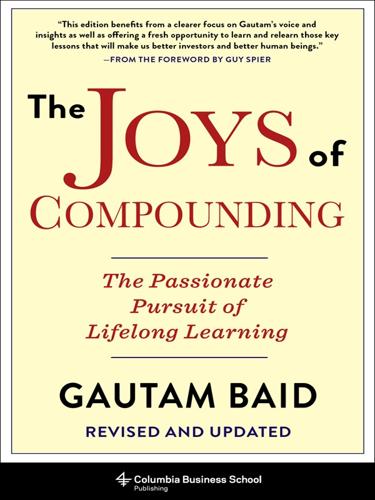
The Joys of Compounding: The Passionate Pursuit of Lifelong Learning, Revised and Updated
by
Gautam Baid
Published 1 Jun 2020
But blindly following authority can result in serious problems (best exemplified by one of the most famous psychological studies of obedience: the Milgram experiment). During 2013, I bought shares of Subex solely on the basis of a renowned market expert’s recommendation on business television. The stock promptly crashed by more than 50 percent within a few months of my purchase, and I exited it at a significant realized loss. I wish I had, before this, read Benjamin Franklin’s words: “It is the first duty of every citizen to question authority.” In hindsight, this was a valuable experience, as I never again invested on the basis of recommendations by experts. The people we read about and see in financial media create authority bias and a halo effect.
…
Somerset, 302 Maurer, Robert, 111 McKinley, William, 277 mean, reversion to, 330–332 Mediocristan, 259–264 Mehta, Darshan, 343 memory: limitations of, 137; reading and, 3 Men and Rubber (Firestone), 295 mental confusion, 137 mental models: latticework of, 25–26; Munger on, 11, 25–26; opportunity cost, 303; Parrish on, 25; thinking and, 29–30 merger and acquisitions (M&A), 226; big-ticket, 227; rule of thumb, 227 metrics, monitoring, 183 Meyer, Jeffrey, 368 MicroCapClub, 371 microfinance, 120, 265 micro level changes, 318–320 Milgram experiment, 334 military service, Munger on, 94 Mill, John Stuart, 272 Millionaire Next Door, The (Stanley & Danko), 79 millionaires, becoming, 83–84 minimalism, 76–77 (Mis)Behavior of Markets, The (Hudson), 260 Mischel, Walter, 96–97 misjudgment, Munger on, 133–138 mistakes, 31; Confucius on, 300; Munger on, 333, 352; of omission, 302–304 moats: Buffett on, 210; culture as, 225–226; emerging, 213 Models of My Life (Simon), 26 Montaigne, 355 Moody’s, 60 Moore’s law, 318 moral responsibilities, 91–92 Morgan, J.
…
Both Munger and Buffett set aside plenty of time each day to just think. Anyone reading the news is provided with constant reminders of the consequences of not thinking. Thinking is a surprisingly underrated activity. Researchers published a study in 2014 that revealed that approximately a quarter of women and two-thirds of men chose electric shocks over spending time alone with their own thoughts.11 Bertrand Russell rightly said, “Most people would rather die than think, and many of them do.” Without great solitude no serious work is possible. —Pablo Picasso One of the finest essays on learning how to think better is “Solitude and Leadership” by William Deresiewicz: Thinking means concentrating on one thing long enough to develop an idea about it.
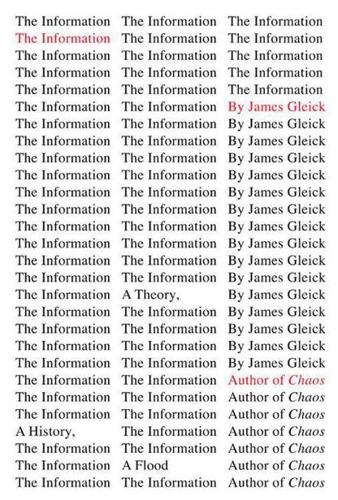
The Information: A History, a Theory, a Flood
by
James Gleick
Published 1 Mar 2011
The canonical explanation is this: I read somewhere that everybody on this planet is separated by only six other people. Six degrees of separation. Between us and everyone else on this planet. The President of the United States. A gondolier in Venice. Fill in the names.♦ The idea can be traced back to a 1967 social-networking experiment by the Harvard psychologist Stanley Milgram and, even further, to a 1929 short story by a Hungarian writer, Frigyes Karinthy, titled “Láncszemek”—Chains.♦ Watts and Strogatz took it seriously: it seems to be true, and it is counterintuitive, because in the kinds of networks they studied, nodes tended to be highly clustered.
…
L., 3.1, 11.1 Mendel, Gregor Mercury: or the Secret and Swift Messenger (Wilkins) Merlin, John Mermin, David, 13.1n, 13.2 Merrill, James messenger RNA, 11.1, 13.1 meta-language Metalogicon metamathematics, 6.1, 6.2, 6.3, 10.1, 12.1 metaphor “Method of Expressing by Signs the Action of Machinery, On a” (Babbage), 4.1, 4.2 Metropolis, Nicholas microfilm microstates, 9.1, 9.2 Middleton, Thomas Milbanke, Anna Isabella Milgram, Stanley Miller, George, 8.1, 8.2, 8.3 Miller, Jonathan, 2.1, 2.2 Million Random Digits, A, 12.1, 12.2 Milton, John, 3.1, 11.1 Mingjia (School of Names) Minsky, Marvin Miot de Melito, Count n Mitchell, David mondegreens, 3.1, 3.2 Monod, Jacques Monte Carlo simulations, 11.1, 12.1 Moore, Francis Moore, Gordon Morse, Samuel F.
…
What James had identified as central topics—“the stream of thought,” “the consciousness of self,” the perception of time and space, imagination, reasoning, and will—had no place in Pavlov’s laboratory. All a scientist could observe was behavior, and this, at least, could be recorded and measured. The behaviorists, particularly John B. Watson in the United States and then, most famously, B. F. Skinner, made a science based on stimulus and response: food pellets, bells, electric shocks; salivation, lever pressing, maze running. Watson said that the whole purpose of psychology was to predict what responses would follow a given stimulus and what stimuli could produce a given behavior. Between stimulus and response lay a black box, known to be composed of sense organs, neural pathways, and motor functions, but fundamentally off limits.
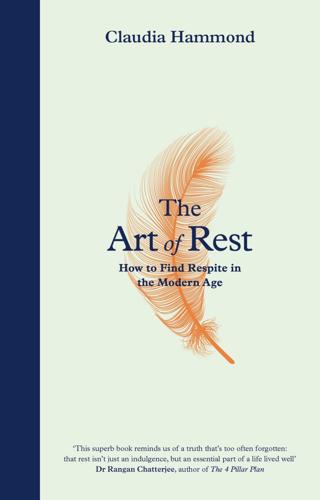
The Art of Rest: How to Find Respite in the Modern Age
by
Claudia Hammond
Published 5 Dec 2019
It took place back in 1976, under the leadership of the psychologist Vladimir Konecˇni, not long before ethical regulations were brought into psychology in the wake of the notorious Stanley Milgram experiments, where people were tricked into thinking they were giving people fatally strong electric shocks. I’ll let you decide how bad it is to wind people up for the sake of an experiment, but for our purposes if we want to discover the impact of music on mood, we are left relying on some studies that date back a few decades. After bombarding them with so-called ego-thwarting remarks, the next step for Konecˇni was to give the participants in his experiment the choice between listening to various kinds of music, some of it loud and complex, some of it quiet and simple.
…
Participants were led one at a time into a bare room with all distractions removed and electrodes were fitted to their ankles. They were shown how to press a computer key which would deliver an electric shock. Then they were left alone wearing the electrodes for fifteen minutes and told they could ‘think about whatever you want to’. Oh, and they had the added option of giving themselves more shocks if they chose to. And here’s the shocking thing, the thing that made this experiment so notorious: one participant shocked himself 190 times. Just one masochist? No, 71 per cent of the men gave themselves at least one electric shock, and even though the women were less inclined to inflict pain on themselves, a quarter did self-administer a shock.
…
This sounds like a positive finding. Boredom is deadly, right? In fact, it has a positive side. It can prompt us to seek out something new. This kind of human curiosity (as well as enticing us to touch hot plates and give ourselves electric shocks) has, after all, been key to the success of the human race. It is why doing nothing, which is the state in which we are most likely to experience boredom, can be the state in which we generate new ideas. As we saw when I discussed daydreaming, the mind wanders and begins to make new connections between different thoughts until eventually, if we’re lucky, we think of something new.
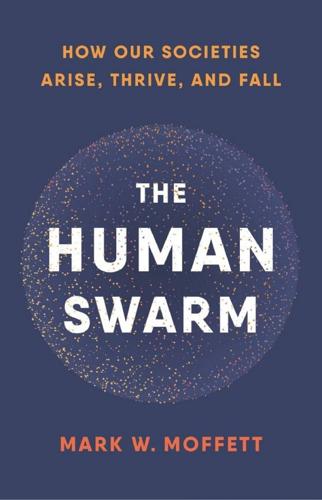
The Human Swarm: How Our Societies Arise, Thrive, and Fall
by
Mark W. Moffett
Published 31 Mar 2019
Science 333:623–627. Menand L. 2006. What it is like to like. New Yorker. June 20, 73–76. Mercader J, et al. 2007. 4,300-year-old chimpanzee sites and the origins of percussive stone technology. Proc Nat Acad Sci 104:3043–3048. Michener W. 2012. The individual psychology of group hate. J Hate Stud 10:15–48. Milgram S. 1974. Obedience to Authority. New York: HarperCollins. Milicic B. 2013. Talk is not cheap: Kinship terminologies and the origins of language. Structure and Dynamics 6: http://escholarship.org/uc/item/6zw317jh. Miller D. 1995. On Nationality. Oxford: Oxford University Press. Miller DT, C McFarland. 1987.
…
Whitehouse et al. (2014a); Whitehouse & McCauley (2005). 29 Documented for the Libyan civilians turned revolutionaries who rose up against Gaddafi (Whitehouse et al. 2014b). 30 The sting feels “like walking over flaming charcoal with a 3-inch nail embedded in your heel” (Schmidt 2016, 225). 31 Bosmia et al. (2015). 32 Fritz & Mathewson (1957); Reicher (2001); Willer et al. (2009). 33 Hood (2002), 186. 34 Barron (1981). 35 Hogg (2007). 36 Caspar et al. (2016); Milgram (1974). 37 Mackie et al. (2008). 38 Kameda & Hastie (2015). 39 Fiske et al. (2007). 40 Staub (1989). 41 People who wish to believe something, prejudices included, ignore contrary evidence so long as they can cling to anything that corroborates their point of view (Gilovich 1991). 42 Especially troublesome were radio programs that described the violence as everyday behavior (Elizabeth Paluck, pers. comm.; Paluck 2009). 43 Janis (1982). 44 This is called Asch conformity after the psychologist Solomon Asch (e.g., Bond 2005). 45 Redmond (1994), 3. 46 Hofstede & McCrae (2004). 47 Wray et al. (2011). 48 Masters & Sullivan (1989); Warnecke et al. (1992). 49 Silberbauer (1996).
…
Championing a personal view can be wildly unpopular or even considered traitorous, a betrayal of loyalty so heinous that in medieval Europe it was deemed a sin worthy of flaying or disembowelment.34 We are in this together turns into something more severe: You are either with us or against us.35 Better to cave in, or at least portray that you had no option if you are called to justify yourself later. Nazi criminals pleaded the Nuremberg defense, arguing that they were just obeying orders. Not only, then, do we abandon our better judgment to our blind faith in our society, but we are absolved of fault for its actions or ours on its behalf. People who choose to administer electric shocks to others after being told to do so by someone in authority show a dampening of brain activity, suggesting that those acting under orders emotionally distance themselves from the consequences.36 When we aren’t simply listening to a commander but following the communal will and are drunk on group emotions, our sense of culpability may vanish entirely.

The Sirens' Call: How Attention Became the World's Most Endangered Resource
by
Chris Hayes
Published 28 Jan 2025
See also cable news; newspapers meditation, 75–76, 78 Meet the Press (TV show), 70 Megaphone Guy, 208, 209–10 Menu Foods, 17 mesothelioma, 171 Messenia migrant boat disaster, 222–23, 224–25 Meta, 13, 15, 128, 219, 262 Microsoft, 13, 15, 182 Milgram experiment, 59–60, 83 Miller, Arthur, 106–10 Miller, Tim, 212 Mills, C. Wright, 190 Minow, Newton, 209 Missouri Compromise, 202, 204, 228 modernity, 8–9, 65 monetization, 219–20, 245 Monty Python, 175–76 “moral panic,” 7, 10 Moray, Neville, 35–36 Moss, Michael, 44–45 Mosseri, Adam, 262 MSNBC, 20–21, 49, 98, 138, 239 author’s show, 22–23, 39–40, 49–50, 98–100, 137–42, 201–2, 221–22, 235–37, 240 multi-level marketing, 124 Munroe, Randall, 8 Murthy, Vivek, 88 Musharbash, Yasmine, 65–66 music, 147–48, 256–57 music concerts and collective attention, 145–46, 147 Musk, Elon, 113–14, 145, 189, 191–94, 232, 234 Mussolini, Benito, 18–19 My Brilliant Friend (Ferrante), 149 N Nafi, Abdul, 117 Nalotan people, 65 Napster, 7 National Association of Broadcasters, 209 Native Americans, 199 natural food stores, 259 natural selection, 37–38 negative attention, 91, 99, 211–13, 232, 233 Neolithic revolution, 155 Netanyahu, Benjamin, 246–47 Netflix, 151, 254, 266–67 New Deal, 267 New Republic, The, 223 news cycles, 21–22, 139, 223, 227, 229 newsies, 124 Newsmax, 142, 230 newspapers, 122–25, 142–43, 147, 257–59, 260–61 Newtown school shooting, 241 New York City Greenmarket, 259 New York Post, 6 New York Sun, 122–24, 142–43 New York Times, 7, 8, 47, 148, 183, 257–59, 260 Nielsen ratings, 125–26, 138, 140 Nike, 17–18 Nineteen Eighty-Four (Orwell), 206–7 Nissan Ariya, 173 Nobel Prize, 164 No Logo (Klein), 16, 17–18 nonmaterial production, 157–58 Northern Ireland, 237 nostalgia, 150, 254–55 O Obama, Barack, 179, 214, 241–42, 244, 247–48 obesity, 113, 163 O’Brien, Tim, 42 Ocasio-Cortez, Alexandria, 230 Odell, Jenny, 78 Odysseus, 1–2, 4, 59, 254 Oedipus complex, 36–37 One America News, 142 OpenAI, 182–83 organic food, 259–60 “Original Affluent Society, The” (Sahlins), 63–64 original sin, 118, 204 Ortega y Gasset, José, 19 Orwell, George, 206–7 P Page, Larry, 172–73 Parker, Sean, 7 Pascal, Blaise, 60–62, 69, 74, 75, 79, 83 Patel, Raj, 113 Pelosi, Nancy, 228–29 Pelosi, Paul, 192 penitentiary model, 83–85 Pennsylvania System, 83–84 Pensées (Pascal), 60–62, 69, 74, 75, 79, 83 pet food, 17 Phaedrus (Plato), 5–6 Phantom Public, The (Lippmann), 18–19, 221 Phenomenology of Spirit (Hegel), 110–11 Phillips, Adam, 36–37 phones.
…
In 2014, psychologists at the University of Virginia set about to investigate this question. Subjects were asked to simply sit alone in a room doing nothing for periods between six to fifteen minutes and were later asked about their experiences. They hated it. The researchers then tested just how much they hated it: “Would they rather do an unpleasant activity than no activity at all?” the authors asked. In one study participants were given the “opportunity to experience negative stimulation (an electric shock) if they so desired.” And guess what? “Many participants elected to receive negative stimulation over no stimulation—especially men: 67% of men (12 of 18) gave themselves at least one shock during the thinking period.”
…
In relatively short order, the technology made its way to land vehicles like fire trucks, replacing the loud bells they’d formerly used to clear the way.[7] The Sirens of lore and the sirens of the urban streetscape both compel our attention against our will. And that experience, having our mind captured by that intrusive wail, is now our permanent state, our lot in life. We are never free of the sirens’ call. Attention is the substance of life. Every moment we are awake we are paying attention to something, whether through our affirmative choice or because something or someone has compelled it. Ultimately, these instants of attention accrue into a life. “My experience,” as William James wrote in The Principles of Psychology in 1890, “is what I agree to attend to.”[8] Increasingly it feels as if our experience is something we don’t fully agree to, and the ubiquity of that sensation represents a kind of rupture.
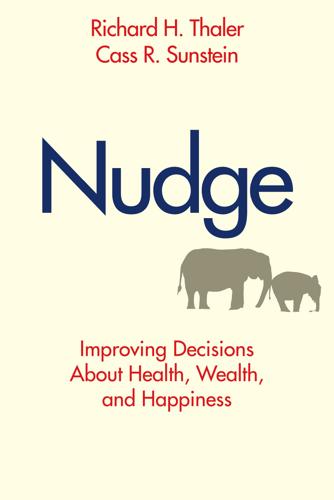
Nudge: Improving Decisions About Health, Wealth, and Happiness
by
Richard H. Thaler
and
Cass R. Sunstein
Published 7 Apr 2008
Harvard Business School Working Paper no. 02–058, 2002. http://www.hbs.edu/research/facpubs/workingpapers/papers2/0102/02–058.pdf. Meyer, Robert J. “Why We Under-Prepare for Hazards.” In On Risk and Disaster: Lessons from Hurricane Katrina, ed. Ronald J. Daniels, Donald F. Kettl, and Howard Kunreuther, 153–74. Philadelphia: University of Pennsylvania Press, 2006. Milgram, Stanley. Obedience to Authority. New York: HarperCollins, 1974. Mitchell, Olivia S., and Stephen P. Utkus. “The Role of Company Stock in Defined Contribution Plans,” In The Pension Challenge: Risk Transfers and Retirement Income Security, ed. Olivia Mitchell and Kent Smetters, 33–70. Oxford: Oxford University Press, 2004.
…
Revesz, Richard L. “Environmental Regulation, Cost-Benefit Analysis, and the Discounting of Human Lives.” Columbia Law Review 99 (1999): 941–1017. Ross, Lee, and Richard Nisbett. The Person and the Situation. New York: McGraw-Hill, 1991. Rottenstreich, Yuval, and Christopher Hsee. “Money, Kisses, and Electric Shocks: On the Affective Psychology of Risk.” Psychological Science 12 (2001): 185–90. Rozin, Paul, and Edward B. Royzman. “Negativity Bias, Negativity Dominance, and Contagion.” Personality and Social Psychology Review 5 (2001): 296–320. Sacerdote, Bruce. “Peer Effects with Random Assignment: Results for Dartmouth Roommates.”
…
Indeed, in a series of twelve questions, nearly three-quarters of people went along with the group at least once, defying the evidence of their own senses. Notice that in Asch’s experiment, people were responding to the decisions of strangers, whom they would probably never see again. They had no particular reason to want those strangers to like them. Asch’s findings seem to capture something universal about humanity. Conformity experiments have been replicated and extended in more than 130 experiments from seventeen countries, including Zaire, Germany, France, Japan, Norway, Lebanon, and Kuwait (Sunstein, 2003). The overall pattern of errors—with people conforming between 20 and 40 percent of the time—does not show huge differences across nations.
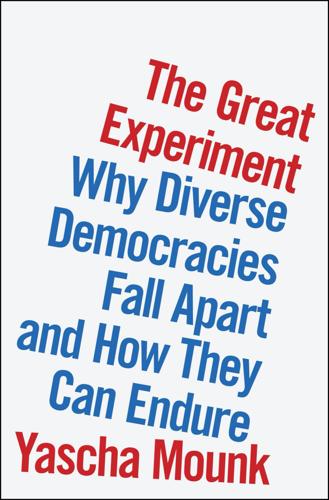
The Great Experiment: Why Diverse Democracies Fall Apart and How They Can Endure
by
Yascha Mounk
Published 19 Apr 2022
Trying to make sense of the fate that had befallen his parents and siblings, Tajfel resolved to study how hatred could have so consumed supposedly “civilized” nations that they slaughtered millions of people. Thanks to an essay on the nature of prejudice, he won a scholarship to study psychology at Birkbeck College, in London. As Tajfel progressed in his studies, he learned about a series of recent experiments that showed just how easy it is to get human beings to do terrible things to one another. What happens when a scientist in a white lab coat tells you to keep administering electric shocks to a volunteer even though he is begging you to stop? If you are like most Americans—or, as later studies would show, like most Germans, Jordanians, or Australians—you keep administering the shocks even as your victim writhes in pain.
…
GO TO NOTE REFERENCE IN TEXT Chapter One: Why Everyone Can’t Just Get Along Upon his liberation: For an overview of his life, see, for example, Gustav Jahoda, “Tajfel, Henri [formerly Hersz Mordche],” Oxford Dictionary of National Biography, September 23, 2004, https://www.oxforddnb.com/view/10.1093/ref:odnb/9780198614128.001.0001/odnb-9780198614128-e-58393. GO TO NOTE REFERENCE IN TEXT If you are like most Americans: On Australia, see Wesley Kilham and Leon Mann, “Level of Destructive Obedience as a Function of Transmitter and Executant Roles in the Milgram Obedience Paradigm,” Journal of Personality and Social Psychology 29, no. 5 (May 1974): 696–702, https://doi.org/10.1037/h0036636. On Germany, see David Mark Mantell, “The Potential for Violence in Germany,” Journal of Social Issues 27, no. 4 (April 2010): 101–12, https://doi.org/10.1111/j.1540-4560.1971.tb00680.x.
…
GO TO NOTE REFERENCE IN TEXT Putting my name in triple brackets: Andrew Anglin, “(((Yascha Mounk)))’s ‘Unique Historical Experiment’: Transforming a Mono-Ethnic Country into a Multi-Ethnic One,” The Daily Stormer, February 23, 2018, https://dailystormer.su/yascha-mounks-unique-historical-experiment-transforming-a-mono-ethnic-mono-cultural-democracy-into-a-multi-ethnic-one. GO TO NOTE REFERENCE IN TEXT Invoking Arbeit Macht Frei: Anglin, “Yascha Mounk’s ‘Unique Historical Experiment.’ ” GO TO NOTE REFERENCE IN TEXT In one sense, an experiment: “Experiment,” Lexico, accessed June 6, 2021, https://www.lexico.com/en/definition/experiment. GO TO NOTE REFERENCE IN TEXT affiliation with elite institutions: At the time of the interview, I was a lecturer in Harvard University’s Department of Government.
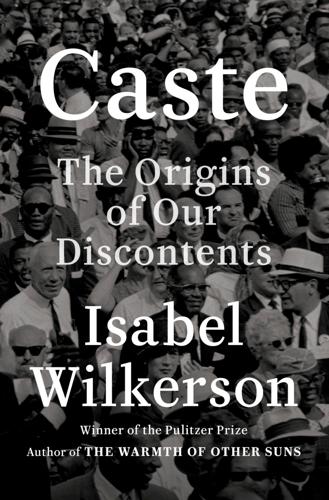
Caste: The Origins of Our Discontents
by
Isabel Wilkerson
Published 14 Sep 2020
In a famous though controversial 1963 study of people’s threshold for violence when ordered to inflict it, college students were told to administer electric shocks to a person in an adjoining room. The people “receiving” the shocks were unharmed but yelled out and banged on the walls as the intensity of the shocks increased. The conductor of the study, the psychologist Stanley Milgram, found that a majority of participants, two out of three, “could be induced to deliver the maximal voltage to an innocent suffering subject,” wrote the scholar David Livingstone Smith, who specializes in the study of dehumanization. In a similar experiment, conducted at Stanford University in 1975, the participants did not have to be ordered to deliver the shocks.
…
People who face discrimination, Williams said, often build up a layer of unhealthy fat, known as visceral fat, surrounding vital organs, as opposed to subcutaneous fat, just under the skin. It is this visceral fat that raises the risk of diabetes and cardiovascular disease and leads to premature death. And it can be found in people of all ethnicities based on their experience of discrimination. “Black women experience higher levels of discrimination than white women do,” Williams said. “But when white women experience discrimination, the effects are the same. So discrimination leading to higher levels of visceral fat, that is true for African-American women and for white women. When whites report higher levels of discrimination, their health is also hurt.
…
In addition to the horrifying torture of twins, German scientists and SS doctors conducted more than two dozen types of experiments on Jews and others they held captive, such as infecting their victims with mustard gas and testing the outer limits of hypothermia. In the United States, from slavery well into the twentieth century, doctors used African-Americans as a supply chain for experimentation, as subjects deprived of either consent or anesthesia. Scientists injected plutonium into them, purposely let diseases like syphilis go untreated to observe the effects, perfected the typhoid vaccine on their bodies, and subjected them to whatever agonizing experiments came to the doctors’ minds.
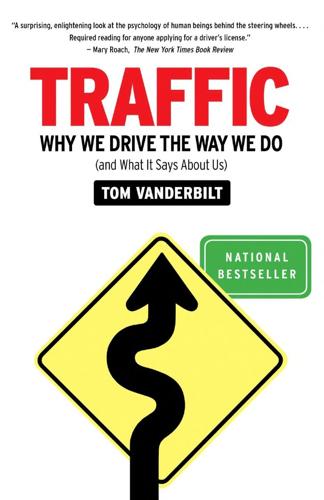
Traffic: Why We Drive the Way We Do (And What It Says About Us)
by
Tom Vanderbilt
Published 28 Jul 2008
They report that after only a short time, drivers will “forget the camera” and begin to do all sorts of things, including nasal probing. The flip side of anonymity, as the classic situationist psychological studies of Philip Zimbardo and Stanley Milgram have shown, is that it encourages aggression. In a well-known 1969 study, Zimbardo found that hooded subjects were willing to administer twice the level of electric shock to others than those not wearing hoods. Similarly, this is why hooded hostages are more likely to be killed than those without hoods, and why firing-squad victims are blindfolded or faced backward—not for their sake, but to make them look less human to the executioners.
…
end of their trip: G. Underwood, P. Chapman, Z. Berger and D. Crundall, “Driving Experience, Attentional Focusing, and the Recall of Recently Inspected Events,” Transportation Research F: Psychology and Behaviour, vol. 6 (2003), pp. 289–304. more experienced drivers: P. Chapman, D. Crundall, N. Phelps, and G. Underwood, “The Effects of Driving Experience on Visual Search and Subsequent Memory for Hazardous Driving Situations,” in Behavioural Research in Road Safety: Thirteenth Seminar (London: Department for Transport, 2003), pp. 253–66. experience and expertise: When expert chess players are given a short glimpse of a chess board, for example, they can remember almost twice as much of the board’s positions as novices can.
…
“I don’t pretend to represent DriveCam as anything but an extrinsic motivation system,” Moeller had said. He admits that in the early days of a DriveCam trial, the mere presence of the camera is enough to get drivers to act more cautiously, in a version of the famous “Hawthorne effect,” which says that people in an experiment change their behavior simply because they know they are in an experiment. But without any follow-up coaching, without “closing the feedback loop,” results begin to erode. “The driver starts to think, ‘The camera’s not intrusive at all. Nothing’s ever going to happen—this is just there so in case I get in a crash this will record who was at fault,’” Moeller said.